

The Perfect 2 to 3 Days in Oslo Itinerary
Last Updated on February 26, 2024
by Emily Marty
Disclaimer: This article contains affiliate links. That means if you click a link and make a purchase, we may make a small commission. As an Amazon Associate we earn from qualifying purchases. For more information, see our privacy policy.

Norway is one of the world’s most beautiful and tourist-friendly countries. If you’re planning on mapping out a 2 to 3 days in Oslo itinerary, then read on.
The charming city is located on Norway’s southern coast. A compact, cosmopolitan metropolis, Oslo has an air of laidback sophistication to it; with a thriving bar and craft beer scene, plenty of interesting galleries, great restaurants, gorgeous natural surrounds, and beautiful architecture to take in, there’s so much for tourists to do and see here.
Table of Contents
How Many Days in Oslo?
If you’re currently planning a trip to Norway , you may be wondering how many days to spend in Oslo. While it’s true that the city is very compact and most of the main attractions are in the centre of the city, it’s worthwhile trying to spend 2 days in Oslo, at least.
Having two days in the city is virtually a must if you’re thinking of visiting some of the larger museums on the Bygdøy Peninsula, for example, which is worth devoting a whole day to on its own.
And, if you can, planning to spend 3 days is an even better idea.
A third day in the Norwegian capital gives you the opportunity to go on a day trip or explore some of the gorgeous nature areas surrounding Oslo, which, frankly, are a massive part of what makes it such a special place to begin with.

Getting To & Around Oslo
Oslo and the wider Akershus region are primarily served by the Gardermoen and Torp airports. Both are connected to a variety of domestic and international flight routes, with Gardermoen being the larger of the two.
The quickest way to reach Oslo Sentrum from Gardermoen is with the Flytoget express trains service; trains run throughout the day and night and take approximately 20 minutes to reach Oslo Central Station. You can also book private transfers here .
Torp is the preferred airport of the two for several budget airlines, including Ryanair, and is a short drive from the nearby city of Sandefjord; bus and train transfers from Sandefjord to Oslo are available, with fairly frequent departures throughout the day.
Several carriers also operate bus routes from Gothenburg in Sweden to Oslo; this is a great option for budget travellers, as the journey only takes a few hours and costs a fraction of the price of flying into Norway. You can view schedules here .
It’s also possible to reach Oslo from other parts of Norway via train (the Bergen -Oslo railway, Bergensbanen , is particularly well-known, thanks to its stunning scenery).
However, this is a more time-consuming option than flying, so it might not be the most pragmatic choice if you’re, say, trying to see as much as you can of Oslo in 2 days.
Public transport in Oslo is reliable, comprehensive, and easy to use, and central Oslo itself (or Sentrum, as it’s known locally) is compact and very walkable. Because of this, renting a car for travelling within Oslo or its surrounds isn’t necessary.
Public transit services run frequently and, on many routes, operate fairly late into the night. Downloading the Ruter app is highly recommended; it can be used for planning your journey, viewing departures and timetables, buying tickets, and more.
If you intend to use the public transit system frequently along with visiting a number of the city’s museums, it can be worth it to purchase an Oslo Pass .
This will give you access to the public transport network along with entry into a number of museums and attractions, such as the Akershus Fortress, the National Museum, the Fram Museum, the Nobel Peace Centre, the Munch Museum, the Norwegian Museum of Cultural History and more!

2 to 3-Day Oslo Itinerary
The following itinerary suggests a range of activities and locations that you might want to check out if you’re planning on spending 2 days in Oslo or more.
Not only does it cover most of the city’s museums and cultural highlights, but it also provides a few recommendations for hiking trails on the outskirts of the city, in the Oslomarka recreation areas.
Day 1 – Exploring Oslo Sentrum
The first day will take you to some of the city’s best-loved attractions, all of which are within easy walking distance of each other. If you want to learn more about the history of the city, you can consider booking a walking tour or going on a bike tour .
It’s worth noting that one of the city’s top attractions, the Viking Ship Museum, is currently closed for renovations for the next few years. Keep this in mind when planning out your time in Oslo to avoid any disappointment!
The National Museum
Oslo’s National Museum is home to Norway’s largest and most comprehensive collection of art, architecture, and design.
Perhaps most noteworthy is the museum’s Edvard Munch Room, which is home to some of the artist’s most important and groundbreaking works, including The Scream , Madonna , and The Girls on the Pier . It also boasts historic and more contemporary works from a range of both Norwegian and international artists.
Additionally, the Museum hosts a range of temporary exhibitions and is open throughout the year.
The Royal Palace
Initially built in the 19th century for King Charles III John, who was the ruler of Norway and Sweden at the time, Oslo’s Royal Palace is easily one of the entire country’s grandest, most impressive buildings.
The current residence of Norway’s King Harald V, the Royal Palace is typically open to visitors from June to August, while its grounds ( Slottsparken) are open year-round and make for a fantastic place for a picnic in the warmer weather.

Oslo Domkirke
While certainly humbler in appearance than other, major European cathedrals like Notre Dame in Paris or St. Paul’s in London, Oslo’s Domkirke (the Oslo Cathedral) – located at the end of Karl Johans gate – has significant historical value, as well as being a striking example of typical Norwegian architecture.
Built in 1697, Oslo Domkirke was Norway’s third-ever cathedral and is still used by the royal family for weddings and other events of significance.
Admission into Oslo Domkirke is free, and the richly-decorated ceiling in particular, with its multitude of frescoes, is well worth checking out.
Akershus Festning
Akershus Festning is a fortress and castle complex built to protect one of Oslo’s royal residences, with the fortress itself having been constructed all the way back in the early 1300s. While still in use as a military base, the fortress is open to the public and guided tours are available in the summer.
And, thanks to its being placed on a hill just above the water, Akershus Festning also offers lovely views of the Oslofjord (Oslo Fjord) below. You can even take a short boat ride for views and you’ll also pass by the Oslo City Hall while en route to the fortress, which is the host of the Nobel Peace Prize.
Oslo Opera House
Famed for its ultra-modern design, no trip to Oslo is complete without heading here. The Oslo Opera House is found right on the waterfront in the Bjørvika district.
Also home to art installations and a distinct, serene atmosphere, the Opera House is definitely worth a visit even if you aren’t planning on attending any concerts there.
It’s also home to some great restaurants which, paired with the building’s fantastic view over the Oslofjord, make for the perfect place for lunch or dinner.

Neseblod Record Shop
While unlikely to appeal to everyone, fans of heavy music (and vinyl in general) will want to make sure to check out Neseblod Records, an infamous record shop-cum-museum dedicated to Norway’s black metal scene.
Black metal has become a bonafide cultural export for the country, and Neseblod was founded and initially run by Euronymous, a central member of the Norwegian band Mayhem, until he was brutally murdered by a member of a rival band.
Despite its grim backstory, the shop is a place of pilgrimage for metal fans from around the world, and it’s not hard to see why.
In addition to stocking an enormous array of hard-to-get merch and records, Neseblodwas featured in the 2018 feature film Lords of Chaos ; if you do go, make sure to check out the notorious ‘black metal’ painted wall in the shop’s basement.
Day 2 – Vigeland Park and Bygdøy Museums
If you’re looking to spend 2 days at least, a great way to make use of your second day in the city is by visiting the beautiful Vigeland Park, as well as some of the fascinating museums on Bygdøy Peninsula, which is easily accessed via public transit from Oslo Sentrum.
Vigeland Sculpture Park
One of Oslo’s absolute highlights no matter what the season, Vigeland Park is a subsection of Frogner Park that is home to a diverse collection of statues by the artist Gustav Vigeland.
These artworks are scattered throughout the Park, which offers free admission, and provide plenty of entertainment and opportunity for reflection; it’s worth setting aside a few hours to be able to see the whole display.
Norsk Folkemuseum/Gol Stavkirke
Found on Oslo’s Bygdøy peninsula, the Norsk Folkemuseum (the Museum of Cultural History) is a museum dedicated to the social and cultural history of Norway. Part of its collection incorporates the world’s oldest open-air museum, which aims to recreate scenes from Norwegian urban and rural life throughout different historical periods.
Gol Stavkirke is one of the museum’s highlights; Norway is known for its distinctive, stunning stave churches, and Gol Stavkirke is one of the oldest examples of these, having been originally built in the 1200s and relocated to Bygdøy in the early 1900s to save it from being demolished.
With exquisite wooden carvings and painted murals, this humble church is a far cry from the colourful splendour of Oslo Domkirke, but is just as, if not more interesting to visit.
The Norsk Folkemuseum is fairly large; you can probably devote up to half a day to it, depending on how much time you aim to spend in the museum’s open-air display.

Fram Museum
Also located on Bygdøy, the Fram Museum is dedicated to Norway’s lengthy history of polar exploration.
With a particular focus on the explorers Otto Sverdrup, Fridtjof Nansen, and Roald Amundsen, the Fram Museum’s permanent collection is also home to displays of arctic wildlife, including penguins and polar bears, as well as housing the ship Fram , which was used in a number of Arctic and Antarctic expeditions.
The museum is also home to Gjøa , a sloop which, captained by Roald Amundsen in 1906, was the first ever vessel to successfully navigate the Northwest Passage, a treacherous sea route that stretches from Greenland to Alaska.
Dinner at Fiskeriet
Located in Oslo Sentrum, specialty seafood restaurant Fiskeriet is a must-visit for (non-plant-based) foodies. The restaurant’s menu is expansive and varied, and the ingredients used are some of the freshest money can buy. Booking in advance is strongly recommended, as Fiskeriet tends to be packed.
Day 3 – Hiking in Oslomarka
One of Norway’s most unique attractions is the country’s stunning, varied natural landscapes.
While the sloping hills and forests of southern Norway are perhaps less dramatic than the towering mountains and glaciers of the western and northern parts of the country, Oslomarka (an umbrella name for all of the recreational/wilderness areas surrounding the city of Oslo) is the perfect place for hiking/walking day trips, most of which are accessible via public transport.
If you’re planning on spending 3 days in Oslo, then tackling one (or all) of the hikes suggested below is a fantastic way to enjoy your final day here. Getting out into nature is absolutely one of the best things to do in Oslo.
Option #1 – Bygdøy Loop
Not far from Oslo Sentrum, there is a number of pleasant walks that you can take in Bygdøy, a peninsula in the western part of Oslo. The easiest way to reach Bygdøy from Oslo Sentrum is via the 30 bus; with frequent departures from Nationaltheatret, the journey takes around 15 minutes.
Disembark at the Karenslyst Allé stop, where you’ll find the start of the walking trail. From there, you can branch off in a number of directions; walking out to Huk, a beach on the far end of Bygdøy, is especially recommended for the views.
Option #2 – Grefsenkollen
Grefsenkollen is a fairly popular walk and viewpoint with minimal elevation gain that offers pleasant views of the greater Oslo area. Take the tram or bus from Oslo Sentrum to Grefsekollveien; from there, the walk to the viewpoint (Grefsenkollen utsikt) is fairly straightforward.
This is a fairly short route which will likely take no longer than two hours to complete, so you might like to combine it with another walk or activity to get the most out of your final day in Oslo.
Option #3 – Kolsåstoppen
Kolsåstoppen is said to be the most popular hike in Oslomarka, and for good reason. Offering views of the Oslofjord and Bærum, the walk is 7.5 km long and provides plenty of stunning scenery. If you want to get the most that you can out of Oslo in 3 days, then Kolsåstoppen is probably going to be the hike for you.
There are multiple routes to Kolsåstoppen, but it’s easiest to start the walk from a farm called Stein Gård; the 150 bus will take you there from Oslo Sentrum, with a journey time of roughly 40 minutes. From Stein Gård, there’s a looping track that will take you to the viewpoint on Kolsåstoppen and back to the farm again.
Expect the hike to take somewhere between three or four hours, though this will depend on conditions on the path and what time of year you’re visiting.

Evening Activity – Craft Beer at Røør
Another haven for craft beer enthusiasts, Røør is a popular local haunt perfect for sampling unusual or rarer craft beers.
The bar has a constantly changing selection of 70 craft beers and 4 kinds of mead, 71 of which are on tap. Note that Røør doesn’t have a food menu, so you’ll need to make other arrangements for either eating out or self-catering.
Where to Stay in Oslo
Hotell Bondeheimen – Mid-range travellers will love this 3-star hotel in the centre of Oslo. There are a number of comfortable rooms on offer along with a number of other great amenities for guests to enjoy.
Clarion Hotel Oslo – This chic and sophisticated hotel in central Oslo is great for those travelling on a bit of a higher budget in Norway. They have a number of modern and comfortable rooms on offer, a great location for exploring the highlights of the city and plenty of other amenities available for guests.
Frogner House Apartments – If you’d like your own flat while visiting Oslo, then this aparthotel is a great choice. They have a range of different apartments available while also being located centrally. Thre are also a number of other great amenities to choose from.
K7 Hotel Oslo – Backpackers and those travelling solo will love this sleek hostel in central Oslo. Offering both dorms and private rooms, there are also great common areas and self-catering facilities for guests to use.
Not quite what you’re looking for? Click here to browse more Oslo hotels!
Planning to visit Oslo is one of the best things you can do when mapping out your trip to Norway. The capital has a lot to offer visitors and it is truly a joy to explore.
Are you planning a trip to Oslo? Have any questions? Let us know in the comments!

Related Posts:

The Perfect 1, 2 or 3 Days in Stavanger Itinerary

Oslo vs Stockholm: Which City to Visit?

A Guide to Visiting the Lofoten Islands in Winter

About Emily Marty
Emily is a writer for The World Was Here First. Originally from Melbourne, Australia, she is currently based in the UK. She enjoys exploring Northern & Western Europe and Southeast Asia and has a bit of a thing for islands in particular.
Leave a Comment Cancel reply
Nomadic Matt's Travel Site
Travel Better, Cheaper, Longer
Oslo Travel Guide
Last Updated: August 17, 2023
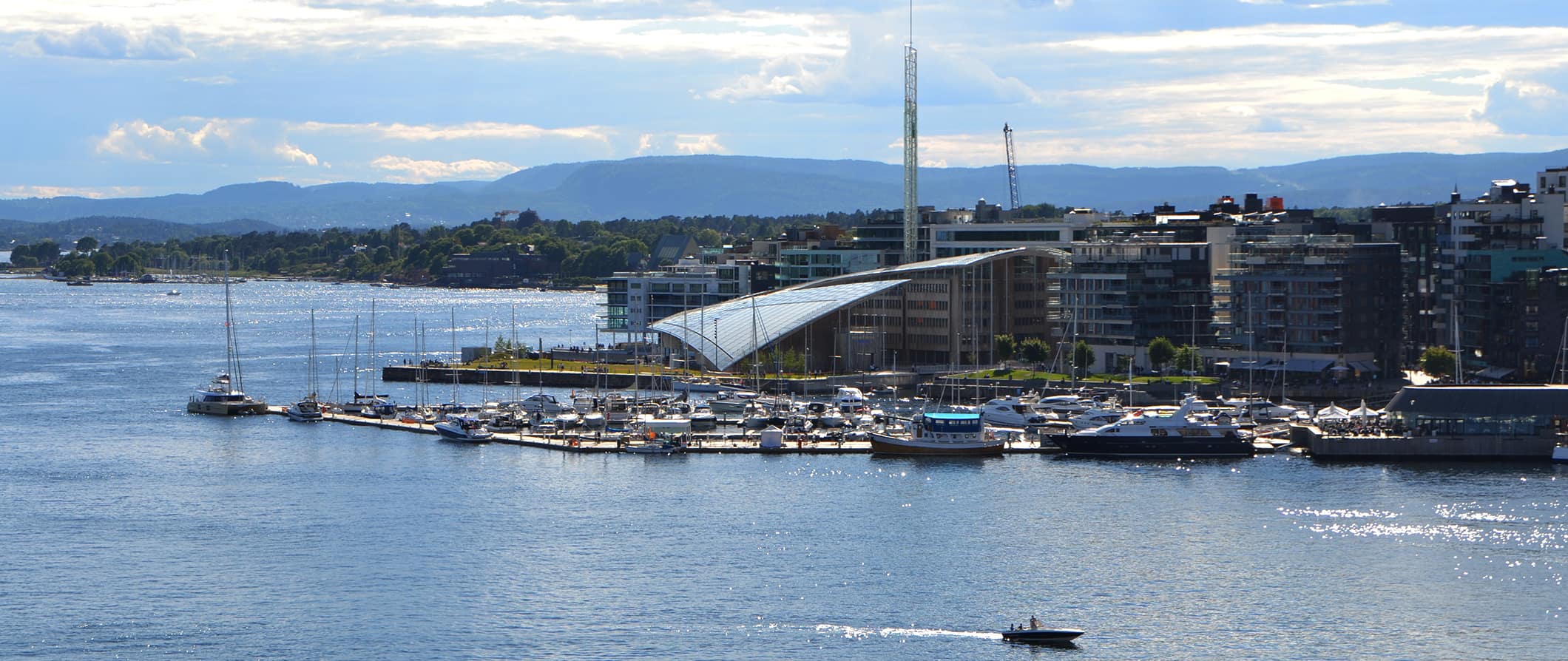
Oslo makes for an excellent base to explore southern Norway as well as a fun weekend getaway destination. There are plenty of hiking and biking trails nearby, as well as ample opportunities to swim, fish, go boating, and ski.
While not the cheapest city in the world (it’s actually one of the most expensive), it’s nevertheless worth a visit to see the incredible fjords and take in the relaxed place of Scandinavian life. There are lots of free and cheap things to do as well, so you don’t have to break the bank.
I love my visits here and I’m confident you will too!
This travel guide to Oslo can help you plan your trip, save money, and make the most of your time in the city.
Table of Contents
- Things to See and Do
- Typical Costs
- Suggested Budget
- Money-Saving Tips
- Where to Stay
- How to Get Around
- How to Stay Safe
- Best Places to Book Your Trip
- Related Blogs on Oslo
Top 5 Things to See and Do in Oslo
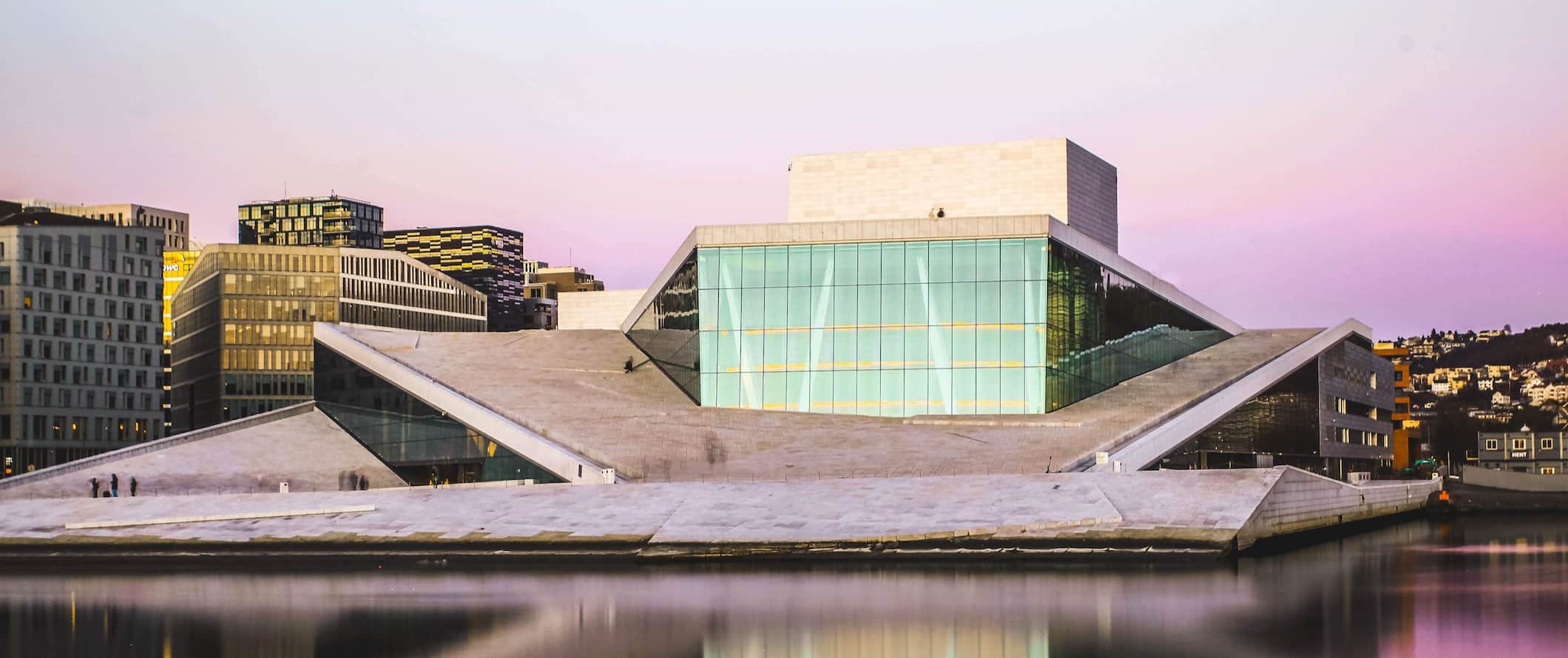
1. Hang out at the Opera
Norway’s largest performing arts institution is home to the world’s first opera house rooftop. Opened in 2007, the building itself is composed of multiple flat levels that essentially act as small plazas, allowing visitors to walk on the roof and enjoy the view of the harbor and city. It’s a popular spot to watch the sunset when the weather is nice. Ticket prices for the opera and ballet vary for each production but expect to pay at least 200 NOK. If you don’t mind standing, there are some tickets available for 100 NOK. There are also occasional “balcony concerts” performed by students, which are free and a great way to enjoy music on a budget. Daily guided tours of the building are available in English. They last 50 minutes and cost 120 NOK.
2. Explore Akershus Fortress
Akershus Fortress is a medieval fortress originally commissioned in 1299 that later evolved into a Renaissance palace under Danish King Christian IV. In World War II, the Germans used the fort to execute dissidents. After the war, Nazi collaborators were executed here. Today, it’s a temporary office for the Prime Minister. There is a small museum inside that highlights the fort’s turbulent history. Admission is free.
3. Wander Vigeland Sculpture Park
Located in Frogner Park, is the world’s largest display of sculptures created by a single artist. Gustav Vigeland (1869–1943) created over 200 bronze, iron, and granite statues that now stand in the open-air “gallery” (which covers a whopping 80 acres). The crying baby statue is the most famous. In the summer, there are often events held here as well. It’s open daily and free to visit.
4. Go swimming
Oslo has many outdoor areas that are ideal for swimming, from rivers to lakes to the Oslo fjord itself. The water here is clean and safe too. Tjuvholmen City Beach, Sørenga Seawater Pool, and Huk (Oslo’s popular beach for a younger crowd) are three places worth checking out if you’re looking to take a dip. You’ll usually see plenty of locals enjoying the water — even in the winter!
5. Explore Nordmarka Wilderness Area
Spanning over 430 acres and just 30 kilometers (19 miles) from Oslo’s city center, you can find everything from biking to swimming to skiing in the Nordmarka Wilderness Area. There are huts available for overnight stays too. For a challenging day hike, try the “Voksenkollen til Bjørnsjøen” trail. It’s around 25 kilometers (15 miles) and takes just over 8 hours to complete. For something shorter, try the moderate “Frognerseteren til Sognsvann” trail, which is around 11 kilometers (8 miles) and takes 3.5-4 hours.
Other Things to See and Do in Oslo
1. take a free walking tour.
One of the best ways to learn about a new destination is to take a free walking tour. You’ll get to see the main sights while having an expert local guide on hand to answer your questions. I always start my trips off with a free walking tour as they are the best way to get oriented and learn a little bit about the local history and culture. Free Tour Oslo offers an insightful 90-minute tour around the city. Just be sure to tip your guide at the end!
2. Visit the Blomqvist Auction House Gallery
Established in 1870, Blomqvist is one of the oldest and largest auction houses in Norway. Located in the city center, it is an excellent place to stop to see traditional Norwegian art and antiques such as glass, silver, china, furniture, carpets, and even jewelry. Sure, you may not want to fork out a fortune on art or antiques at their auctions but it’s a nice gallery to spend some time exploring. You can also visit their website to see what is available for auction as there is an ever-rotating list of art and antiques on offer.
3. Learn some Norwegian history at Norsk Folkemuseum
There are many museums throughout Oslo showcasing Norwegian history and Viking tales, but this is the most interesting. Home to over 150 buildings, this open-air museum lets you immerse yourself in the history of the country. The biggest attraction is the Gol Stave Church, which dates to 1200 CE. Other incredible sights to see are the 14th-century farmhouses and the 18th-century tenement buildings. This is a fun activity that blends entertainment and education, so it’s a great choice for anyone traveling with children. Admission is 140 NOK in winter and 180 NOK in summer.
4. Check out the Viking museum
The Viking Age was a period of time from around 800-1066 that saw a massive expansion of Scandinavian conquests and exploration (they traveled as far as Canada in the west and to modern-day Turkey in the east). This museum is home to the world’s best-preserved Viking ships, which date to the 9th century. It’s also home to the largest Viking burial ship in the world. There is an array of preserved boats and carts that date back to the Middle Ages as well. Admission is 179 NOK.
5. Visit Kampen Ecological Children’s Farm
Located in Eastern Oslo, “Kampen Barnebondegård” is an urban ecological farm that was set up for children to learn about vegetables, herbs, and animals (they have horses, pigs, sheep, goats, chickens, and more!). On weekends, there’s a small cafe available with homemade treats. It’s a great stop for a laid-back, kid-friendly afternoon that’s both fun and educational. Hours are limited outside of the summer so be sure to check their website and/or social media before you go.
6. Shop in Grünerløkka
Located slightly north of Oslo’s city center, Grünerløkka is ideal for an afternoon of perusing independent shops. You can expect to find artisanal handicrafts, clothing, pottery, and various other trinkets, in addition to record shops and second-hand bookstores. There are cafes, flea markets, and bakeries here too, making it ideal for a relaxing day of exploring the city on foot. There are also a few clubs here so at night the area livens up even more.
7. See the National Gallery
The National Gallery contains Edvard Munch’s famous painting “The Scream” (which was made in 1893 and has been stolen twice). The gallery is small, but there are a lot of artists on display. It has some Impressionist and Dutch works, as well as some pieces by Picasso and El Greco. It’s not the most expansive collection, but it is still worth a visit, especially if you’re a fan of more classical art styles (like me).
8. Stroll along Aker Brygge wharf
Perfect for an afternoon stroll and host to the largest concentration of restaurants in Oslo, Aker Brygge is located southeast of Oslo’s city center. Enjoy a wide array of foods ranging from French cuisine to traditional Nordic dishes, or a simple day of window shopping and architectural admiration. There are also lots of food trucks around here in the summer. The wharf has something for everyone and is a great place to spend a couple of hours window shopping, people-watching, and admiring the view of the fjord.
9. Wander through the Botanical Garden
The perfect place to relax after exploring the city, Oslo’s Botanical Garden has over 1,800 different plants. Largely set up as an Arboretum, the Botanical Garden also offers two greenhouses of exotic plants (which date to 1868 and 1876 respectively) and a “Scent Garden” designed specifically for the blind so they could enjoy a sensory experience. There are lots of benches so you can sit down with a book and relax, as well as works of art throughout the garden. Entry is free.
10. Join the Korketrekkeren Toboggan run
The toboggan run begins in Frognerseteren and is an exciting way to take part in a traditional Norwegian winter activity. The track is over 2,000 meters (6,500 feet) long and sleds are available for rent (including helmets) for 100-150 NOK per day. You can take as many rides down the track as you like as it’s free to ride. The ride itself takes almost 10 minutes and then it takes about 15 minutes to get back to the top. The track is only available when there is snow so the schedule varies, but it’s incredibly fun and popular with the locals!
11. Visit the Fram Museum
Located on the Bygdøy Peninsula, this museum is all about Norwegian polar exploration. Opened in 1936, the museum honors explorers like Roald Amundsen (who led the first expedition to the south pole in 1911) and Fridtjof Nansen (who crossed the Greenland interior on skis in 1888). You’ll learn about the expeditions and how the people (and their animals) survived the harsh conditions. The museum also has exhibits of the animals of the polar regions, such as penguins and polar bears, as well as a Northern Lights show to give you a sense of what the Aurora Borealis actually looks like. Admission 140 NOK for adults and 50 NOK for kids.
12. See the Kon Tiki Museum
Another museum about exploration, the Kon Tiki museum highlights the adventures of Thor Heyerdahl, the 20th-century explorer and anthropologist. In 1947, Thor sailed from Peru to the Polynesian islands on a balsa wood raft to prove that Polynesians migrated from South America, not Asia. (While he succeeded in his journey, his theory was ultimately proven incorrect). He also sailed from Morocco to Barbados on another traditional raft to prove that the Egyptians could have crossed the Atlantic. At the museum, you’ll get to see his two boats and learn about his voyages, discoveries, and challenges. Admission is 140 NOK.
13. Take a fjord cruise
Oslo travel costs.
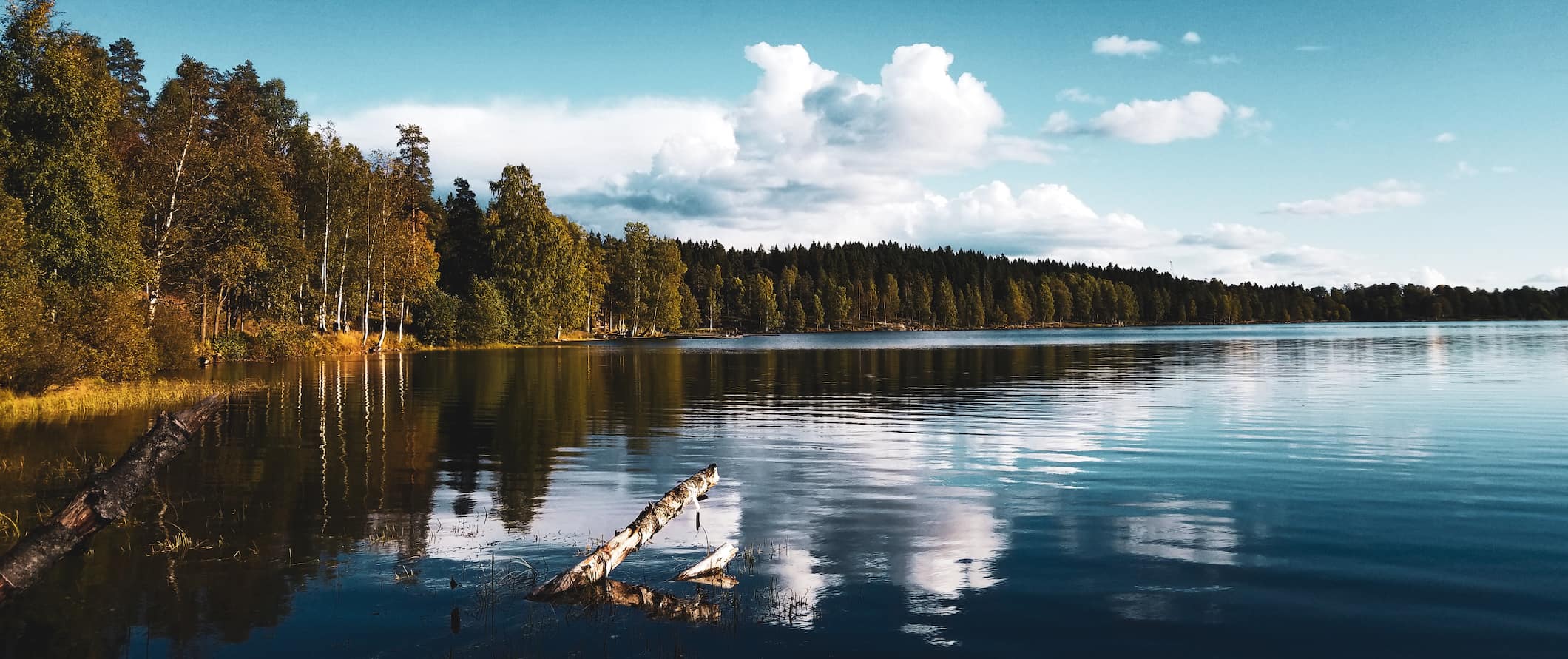
Hostel prices – Accommodation (much like everything in Norway) is not cheap. Hostels start around 390 NOK per night for a 6-8-person dorm. Private rooms cost around 800-900 NOK. Free Wi-Fi is standard and most hostels also have self-catering facilities. Free breakfast is rare, though it is offered by a couple of hostels in the city.
Additionally, most hostels in Norway charge a 50 NOK surcharge for linens, as is the custom in Scandinavia. You can bring your own, however, you cannot use a sleeping bag instead.
For those traveling with a tent, wild camping is legal (and free). Norway has ‘Freedom to Roam’ laws (called “Allemannsretten”) that allow anyone to camp anywhere for up to two nights as long as it’s not on cultivated land. You’ll need to make sure you are not camping near someone’s house, that you take all trash with you when you leave, and that you aren’t in a farmer’s field or garden. But other than that, you can pretty much pitch your tent anywhere!
If wild camping is not your thing, campgrounds are also common though many require a Camping Key Europe card. You can purchase it at your campsite for 210 NOK or online (for a discount). Most campsites have modern facilities, including toilets and showers. Expect a basic tent plot with space for two people to cost around 200 NOK per night.
Budget hotel prices – A three-star budget hotel (there are no two-star budget hotels in Oslo) starts around 600-800 NOK for a double room. Expect basic amenities like free Wi-Fi, coffee/tea makers, and a TV. Some hotels include a basic free breakfast too. For a hotel with a pool, expect to pay at least 1,200 NOK per night.
Private rooms on Airbnb start around 480 NOK per night while an entire house/apartment costs at least 800-1,000 NOK per night. Be sure to book early, otherwise, prices can double (or even triple).
Food – Food is expensive in Oslo — there are just no two ways about it. A lot of food has to be imported so anything that isn’t grown here is going to be pricey. Seafood is incredibly popular, with smoked salmon being one of the country’s staples. Cod is also super popular, as are prawns and crab (locals host “crab parties” when they are in season). Lamb is the most popular meat, and open-faced sandwiches are the go-to choice for both breakfast and lunch (usually composed of dark bread, cheese, and either meat, seafood, or vegetable topping).
Street food like hot dogs costs between 25-45 NOK and you can usually find “cheap” meals of traditional cuisine for just under 200 NOK at inexpensive casual restaurants. For a multi-course meal with table service, expect to pay double that.
Fast food (think McDonald’s) costs around 120 NOK for a combo meal while Chinese food starts at 150 NOK for a main dish. A basic large pizza starts at 110 NOK (140 NOK for one with more toppings).
Beer at the bar costs around 97 NOK though you can get it for less than half that price if you buy it at the store. Lattes/cappuccinos cost around 45 NOK while bottled water is 30 NOK.
Grocery shopping here is the cheapest way to get by on a budget. Expect a week’s worth of groceries to cost around 725 NOK. This includes basic staples like rice, pasta, vegetables, and some meat or fish.
Backpacking Oslo Suggested Budgets
On a backpacking budget of 600 NOK per day, you can stay in a hostel dorm, cook all your meals, take public transportation to get around, limit your drinking, and do free activities like swimming and hiking. If you plan on drinking, add 50-150 NOK per day to your budget.
On a mid-range budget of 1,500 NOK per day, you can stay in a private hostel room or Airbnb, eat out for some meals, take the occasional taxi to get around, enjoy a couple of drinks, and do paid activities like museum visits or opera performances.
On a “luxury” budget of 2,600 NOK or more per day, you can stay in a hotel, eat out for all your meals, drink more, rent a car to get around, and do more paid activities and guided tours. This is just the ground floor for luxury though. The sky is the limit!
You can use the chart below to get some idea of how much you need to budget daily, depending on your travel style. Keep in mind these are daily averages — some days you’ll spend more, some days you’ll spend less (you might spend less every day). We just want to give you a general idea of how to make your budget. Prices are in NOK.
Oslo Travel Guide: Money-Saving Tips
Oslo is an expensive city in an expensive country. It takes some work to save money. Even McDonald’s costs a lot of money. Saving money here takes a lot of work and vigilance but it can be done! Here are some tips to save money in the city:
- Cook your own food – Food is very, very expensive in Norway so the best thing you can do is cook your own meals. Go grocery shopping and stick to buying local and seasonal food. it’s not fancy but it can save you a ton!
- Eat cheap – If you do decide to eat out, your cheapest options are shawarma and pizza. They can be found all around the city.
- Stay with a local – The best way to avoid expensive hostels is to not stay in them! Couchsurfing can connect you with local hosts who offer free accommodation (usually just on a couch). It’s not fancy, but you’ll get insider tips and a free place to stay — all while making a new friend!
- Camp – Free public camping laws allow you to camp in the parks and public lands for free as long as you have your own tent. You can stay up to two nights in an area as long as you are quiet and respectful. Make sure to leave the area as you found it! If you plan on camping a lot, make sure to get the Camping Key Europe card. It offers discounts to most of Norway’s campgrounds.
- Get the Oslo Pass – If you plan on visiting lots of museums and using public transportation, this pass is going to save you money. The 24-hour pass is 445 NOK while you can also get a 48-hour pass for 655 NOK and a 72-hour pass for 820 NOK.
- Take advantage of Oslo’s free activities – Stick to free places like the Botanical Garden, Church ruins in Maridalen, Ekebergparken Sculpture Park, Akershus Fortress, Oslo Cathedral, Intercultural Museum, and Monastery Ruins at Hovedøya. If you’re into art, check out Kunsthall Oslo, Gallery LNM, Fineart Oslo, Gallery TM51, Gallery, and Semmingsen.
- Stay sober – At around 100 NOK per drink (often more!), going out destroys your budget. While Norwegians love to go out and have a good time, if you are on a tight budget, skip the drinks. Better to save your money for sailing around the fjords.
- Buy your drinks at the store – If you do plan on drinking, buy your drinks at the Vinmonopolet (the state-run chain of stores that sell alcohol). You’ll save 50% or more doing this!
- Travel with friends – If you rent a car to get out of the city (which is the best way to see the surrounding areas), try to find people to join you to share costs. You can use the Couchsurfing app or just ask around in hostels to find people. This will help you save money on gas and rental prices — which can eat into your budget quickly!
- Bring a reusable water bottle – The tap water here is super clean, so bring a reusable water bottle to save money and lower your plastic usage. LifeStraw makes a bottle with a built-in filter so you can always ensure your water is clean and safe.
Where to Stay in Oslo
Oslo only has a few hostels worth staying at. Here are my recommended places to stay:
- Anker Hostel
- Cochs Pensjonat
How to Get Around Oslo
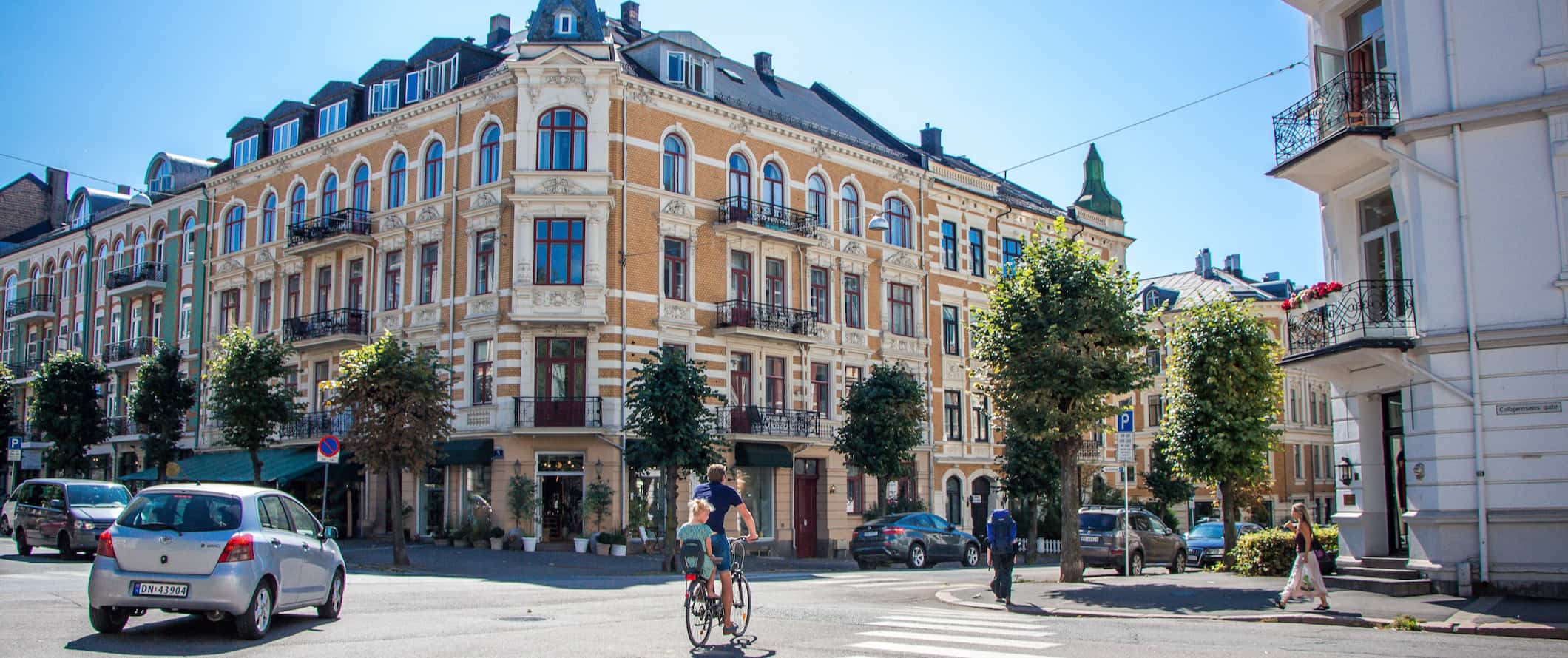
You can buy your ticket onboard, however, it is more expensive that way. To save time and money, download the RuterBillett app. It’s the city’s app for public transportation.
Additionally, free public transportation is included with the Oslo Pass, which can save you money if you plan on seeing a lot of sights.
While you can get on most buses and trams without showing a ticket, ticket patrols are common and the fines are heavy. Don’t risk it — always purchase a ticket!
Oslo is the only city in the country with a metro system (known as the “T-Bane”). Tickets are 39 NOK and the passes above also work for the metro system. There are 5 lines and around 100 stops with service beginning between 5:30am-6am and ending between 12:30am-1am. It’s fast, reliable and an easy way to get across the city.
Taxi – Taxis are prohibitively expensive here. Rates start at 103 NOK and are 15 NOK per kilometer. Avoid them!
Ridesharing – Uber is available in Oslo (it’s the only city in the country where they operate). However, it’s comparable to the taxis here so there’s not much savings.
Bicycle – Cycling is a great way to get around the city as everything is compact and lots of locals cycle as well. You can find rentals for 69 NOK per day from Oslo City Bike. It’s the city’s bike-sharing program and there are over 250 stations around the city where you can get a bike. You just need to download the app to sign up and pay.
Car rental – Car rentals start at around 360 NOK per day for a multi-day rental. If you’re just staying in the city, you won’t need a vehicle, however, having one will let you explore the many parks and forests outside the city.
When to Go to Oslo
The ideal time to visit Oslo is from June to August when the weather is warm and the days are (really) long. The country is at its liveliest during this time and locals take advantage of the good weather at every opportunity. The parks are always full and there are always fun events happening around town. Temperatures hover around the 20s°C (60s and 70s°F) — not too hot, but warm enough to swim, hike, and lounge about.
The downside to visiting in the summer is that, since Norway has a very short summer, Oslo can get busy so be sure to book your accommodation in advance. That being said, “busy” in Oslo is a far cry from “busy” in cities like Paris or London.
The shoulder season makes for a good time to visit as well, with temperatures ranging from 4-10°C (40-50°F). May typically has decent weather with occasional rain, while September gives you cooler temperatures and changing leaves. You’ll beat the crowds and still be able to explore the city on foot without the weather getting in your way (too much).
Attractions begin to close around late September/early October, or at the very least reduce their hours. The days begin to get dark early in October and temperatures start dropping around this time too. However, prices also decrease, and you’re likely to find cheaper airfares and accommodations. Be sure to pack layers if you plan on visiting during this time of year as it can be quite cool — even during the day.
The winter is very cold and sees a lot of snow and darkness. In the depths of the winter, you only get a few hours of light each day, and temperatures plummet below freezing. The plus side of traveling during the off-season, however, is that you’ll be offered the cheapest accommodations, and fees for certain attractions are lower as well. You can also take advantage of all the winter sports, such as cross-country skiing and downhill skiing. This is also the prime time to see the northern lights.
How to Stay Safe in Oslo
Norway is one of the safest countries in the world. In fact, it ranks 17th on the list of the world’s safest countries! Oslo is no exception. However, it’s still good to keep an eye out for pickpockets, especially around the train stations and on public transportation. Be aware of your surroundings and keep your valuables secure and out of reach just to be safe.
Solo female travelers should generally feel safe here. However, the standard precautions apply (never leave your drink unattended at the bar, never walk home alone intoxicated, etc.) but it’s unlikely anything will occur. Check out one of the solo female travel blogs on the web for more specific information on safety.
The tap water in Oslo is safe and clean so you can safely trick the water. There is also no real risk of natural disasters or terrorism here either. If you go hiking, always bring water and sunscreen. Be sure to check the weather before you go as well.
If you rent a car, don’t leave any valuables in it overnight. While break-ins are rare, it never hurts to be safe!
If you experience an emergency, dial 112 for police, 110 for fire, and 113 for ambulance services.
The most important piece of advice I can offer is to purchase good travel insurance. Travel insurance protects you against illness, injury, theft, and cancellations. It’s comprehensive protection in case anything goes wrong. I never go on a trip without it as I’ve had to use it many times in the past. You can use the widget below to find the policy right for you:
Oslo Travel Guide: The Best Booking Resources
These are my favorite companies to use when I travel. They consistently have the best deals, offer world-class customer service and great value, and overall, are better than their competitors. They are the companies I use the most and are always the starting point in my search for travel deals.
- Skyscanner – Skyscanner is my favorite flight search engine. They search small websites and budget airlines that larger search sites tend to miss. They are hands down the number one place to start.
- Hostelworld – This is the best hostel accommodation site out there with the largest inventory, best search interface, and widest availability.
- Booking.com – The best all around booking site that constantly provides the cheapest and lowest rates. They have the widest selection of budget accommodation. In all my tests, they’ve always had the cheapest rates out of all the booking websites.
- HostelPass – This new card gives you up to 20% off hostels throughout Europe. It’s a great way to save money. They’re constantly adding new hostels too. I’ve always wanted something like this and glad it finallt exists.
- Get Your Guide – Get Your Guide is a huge online marketplace for tours and excursions. They have tons of tour options available in cities all around the world, including everything from cooking classes, walking tours, street art lessons, and more!
- The Man in Seat 61 – This website is the ultimate guide to train travel anywhere in the world. They have the most comprehensive information on routes, times, prices, and train conditions. If you are planning a long train journey or some epic train trip, consult this site.
- Rome2Rio – This website allows you to see how to get from point A to point B the best and cheapest way possible. It will give you all the bus, train, plane, or boat routes that can get you there as well as how much they cost.
- FlixBus – Flixbus has routes between 20 European countries with prices starting as low 5 EUR! Their buses include WiFi, electrical outlets, a free checked bag.
- SafetyWing – Safety Wing offers convenient and affordable plans tailored to digital nomads and long-term travelers. They have cheap monthly plans, great customer service, and an easy-to-use claims process that makes it perfect for those on the road.
- LifeStraw – My go-to company for reusable water bottles with built-in filters so you can ensure your drinking water is always clean and safe.
- Unbound Merino – They make lightweight, durable, easy-to-clean travel clothing.
- Top Travel Credit Cards – Points are the best way to cut down travel expenses. Here’s my favorite point earning credit cards so you can get free travel!
Oslo Travel Guide: Related Articles
Want more info? Check out all the articles I’ve written on backpacking/traveling Norway and continue planning your trip:
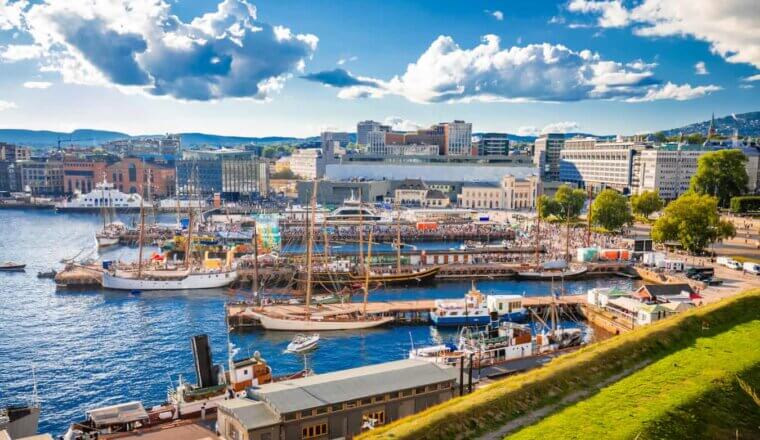
How to Spend 48 Hours in Oslo
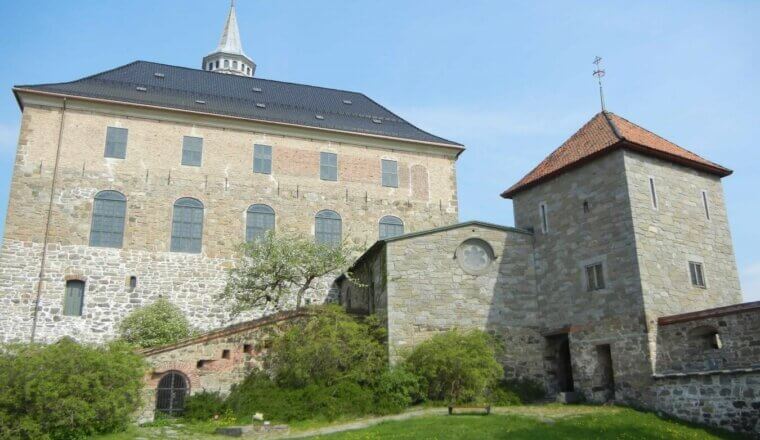
The 22 Best Things to Do in Oslo
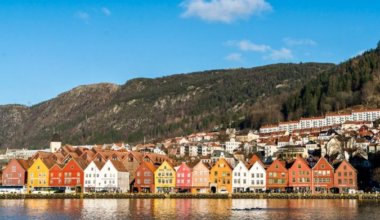
The 14 Best Things to Do in Bergen, Norway
Get my best stuff sent straight to you, pin it on pinterest.
- Where To Stay
- Transportation
- Booking Resources
- Related Blogs
The 8 best things to do in Oslo: art, culture and outrageously beautiful fjords

Jul 27, 2022 • 7 min read
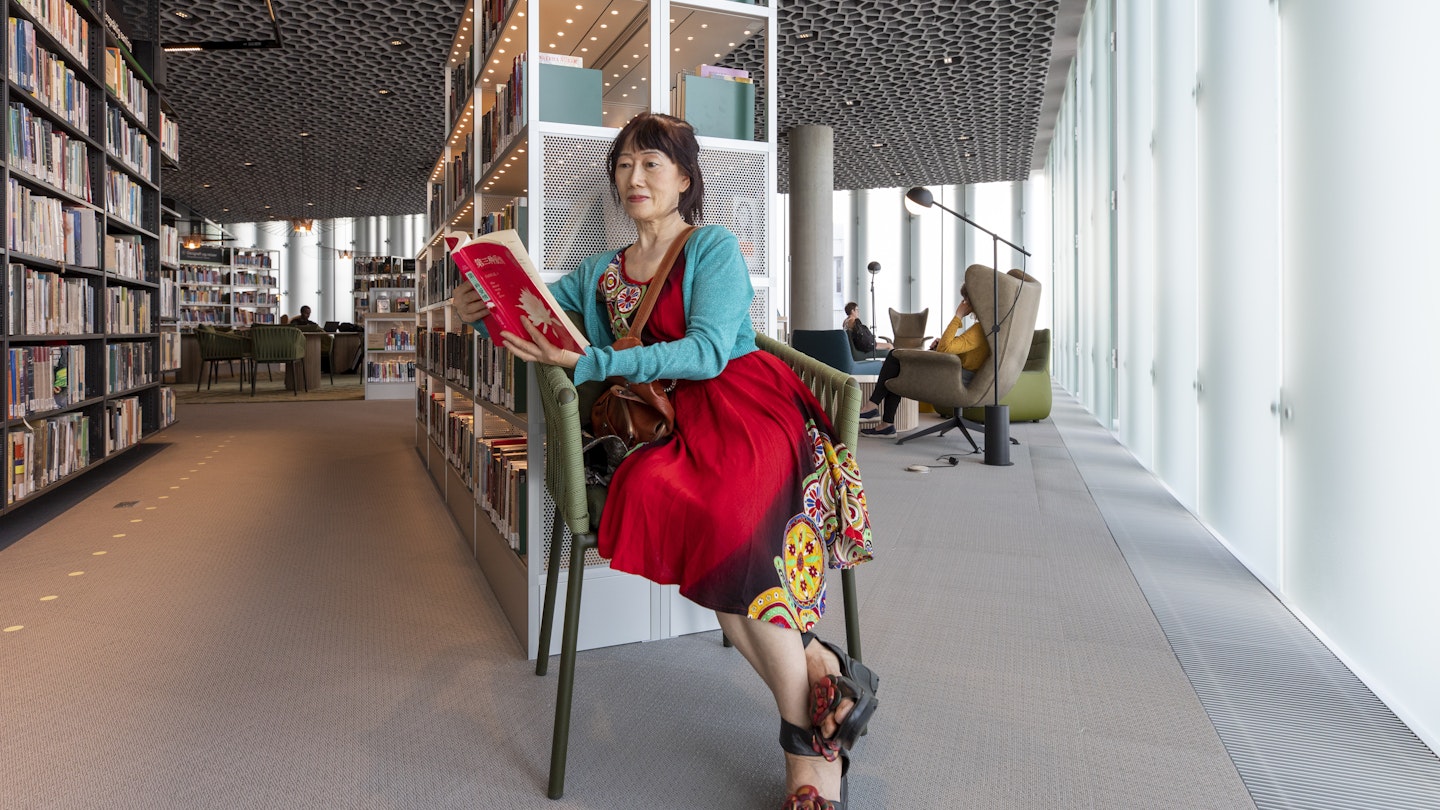
Don't miss the Deichman when visiting Oslo – it's not your usual library
Whether you’re making the most of the midnight sun or deep in the dark depths of the northern winter, you’ll find plenty to do in Oslo , Norway ’s capital city.
New openings in recent years – the Deichman Library, Munch and the National Museum – reflect the city’s commitment to preserving cultural heritage for centuries to come. And there’s plenty of artistic and literary creativity to celebrate here: Not only did local landscapes inspire artworks by painter Edvard Munch , Oslo was also home to Norwegian playwright Henrik Ibsen for the last 15 years of his life. If you’re planning to make the most of the city’s many museums, it’s worth buying the Oslo Pass that gives free admission to 30 different sights as well as use of the public transportation system.
The Viking Ship Museum (Vikingskipshuset) remains closed until 2026 while construction of a new state-of-the-art building is ongoing, but there are many other amazing things you can do in Oslo right now. Here are the very best.

Visit the city’s newest attraction, the world-class National Museum
With the largest collection of art and design in Norway, the brand-new National Museum is now the biggest museum in the Nordics. Don’t rush your visit – there are 6500 objects on display across 86 rooms. Follow the chronological route to explore the best art, design, architecture, crafts, and fashions from antiquity to the present day, seeing how they have shaped or reflected society.
There’s a small collection of Munch’s paintings, including The Scream , and you’ll also spot familiar names such as Vincent van Gogh and Georgia O’Keeffe. Learn about Norway’s folk tales and legends in the Fairy Tale Room and be sure to visit the third-floor Light Hall, an unusual gallery space with walls made of a glass-and-marble composite, currently exhibiting works by contemporary Norwegian artists.

Experience a fjord-side sauna
Finnish sauna culture has been adopted by Oslo over the last 10 years or so and has become a popular thing to do on the harborside. Dress in swimwear and take a seat on a bench in a paneled room that’s heated to 80–95°C (176-200°F) by a wood-burning stove. A towel is recommended to stop an uncomfortable burn on your butt.
From private saunas to huge group events with comedy, DJs and theater entertainment, cultural hub SALT has a sauna that holds up to 80 people. With a maximum capacity of 10, KOK ’s floating saunas are found at Aker Brygge and Bjørvika. If a slow-cook near the harbor isn’t private enough for you, book yourself on a KOK cruise. The whole unit is a boat that can dock at a more secluded part of the fjord. Be sure to jump in, either from the roof or straight from the deck – it’s cold but exhilarating.
Celebrate Norway’s favorite sculptor, Gustav Vigeland
Vigelandsparken is a free-to-visit sculpture park dominating Frognerparken to the western suburbs of Oslo. More than 200 incredible granite, iron and bronze works here form the life’s work of prolific Norwegian sculptor Gustav Vigeland. He was inspired by the complex nature of humankind, which is reflected in the twisted positions and facial expressions of many of his figures.
Here you’ll see everything from a classic Greek-style fountain made up of muscular men weighed down by a dish, to family-like groups including mid-tantrum children with sulky expressions, and the distinctive bronze Little Hot-head , a child in a rage. The remarkable centerpiece is the 17m-tall (56ft) Monolith , a single piece of granite carved to form a huddle of 121 separate human figures. Nearby, the Vigeland Museum , housed in a Neoclassical building, offers a more in-depth look at the artist’s work.

Learn and create at Deichman Library
When you visit Deichman , throw away any thoughts of a traditional library. This six-floor airy art-filled space – voted Public Library of the Year in 2021 – aims to be not only a lender of books, but a warm and welcoming environment for people who want to learn, create, explore, work, and socialize.
Want to learn how to make clothes? There’s a whole section of sewing machines for you to reserve. Interested in how 3D-printing works? You can give it a go. There are music rooms where you can borrow and practice instruments, games to play, a stage overlooking the fjord, and even cinemas, all free for public use. For those preferring a more conventional library experience, don’t worry: The shelves hold 450,000 books with plenty of quiet seating areas dotted around the building.
Get out on the fjord by catamaran, boat, kayak or SUP
You can happily gaze at Oslo Fjord from the harborside, but it’s so much better to get out on the sparkling water for a closer look. Make a day of it on the impressive all-electric catamaran Legacy of the Fjords , which glides almost silently across the water on its two trips per day (1h 45mins) to the island of Oscarsborg (also served by commuter ferries B21 and B22), where you can explore the historic Oscarsborg Fortress .
For a shorter and cheaper fjord trip, head out on the commuter routes that are included in the Oslo Pass. Route B2 departs from Aker Brygge to nearby Hovedøya, Gressholmen and Langøyene, and B10 heads for Nesoddtangen, which takes around 20 minutes. If you’re looking for something a little more active, Mad Goats rents out kayaks, stand-up paddleboards, and offers guided kayak tours of the fjord.

Delve deep into the works for Edvard Munch
Munch opened on the waterfront in Bjørvika in October 2021 as a new home for the collection that the artist Edvard Munch bequeathed to the city four years before his death in 1944. Across 11 galleries, you can see The Scream (yes, there’s a version here too), as well as paintings, prints and sketches exploring themes of sickness, melancholy, and nature. Changing exhibits with new interpretations of Munch’s art keep the displays fresh and engaging.
Enjoy wonderful fjord views from the higher levels of this glass-and-steel building, with fine dining in 12th-floor Bistro Tolvte and an elegant 13th-floor cocktail bar. Don’t miss The Mother by Tracey Emin. The curves of the new bronze sculpture contrast with all those harborside angles, sitting fjord-facing on the pier outside the museum.
Walk up the angled roof of the opera house
One of Oslo’s waterfront architectural masterpieces is the opera house , home to the Norwegian National Opera and Ballet . The glass-and-marble structure was designed by award-winning architects Snøhetta to resemble a glacier, with the aim of not only creating state-of-the-art rehearsal rooms and performance halls ( tours are available), but also to provide a new space for public use. The angled roof is accessed directly from ground level – through walking a series of steps or steep sloped sections you reach the rooftop where there are panoramic views over the harbor and the city.
Hear the good news outside the Nobel Peace Center
The Nobel Peace Center changes its display every November to honor the latest winner or winners of the Peace Prize. In 2021-22 the prize went to Russian editor Dmitiri Muratov and Philippine journalist Marisa Ressa who have relentlessly worked for freedom of the press, questioning, challenging and pushing their governments for answers, often in dangerous circumstances.
A hands-on exhibit explores the legacy of the Peace Prize, giving visitors the chance to see what kind of peacemaker they might be. If you’re nearby at midday on a Friday (April to October) listen out for the “good news” announcement, where something positive that has happened in the world is recognized. A dove is symbolically released from a window of the museum to send the good news out into the world.
Claire traveled to Oslo by invitation from Visit Oslo .
Explore related stories
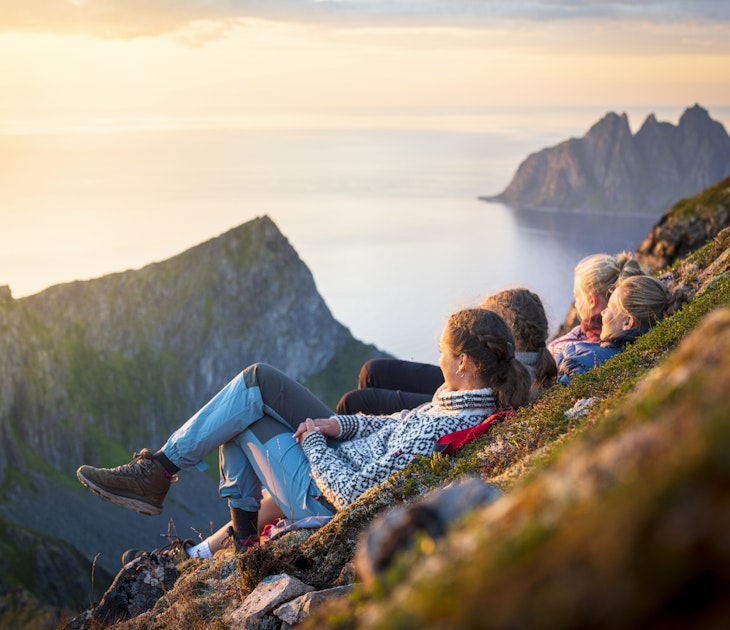
Mar 12, 2024 • 7 min read
From cruising the fjords and wild camping to cities full of culture and incredible food, here are 13 top things to do on a visit to Norway.
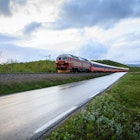
Feb 21, 2017 • 6 min read
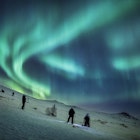
Oct 20, 2014 • 5 min read

Aug 8, 2013 • 6 min read
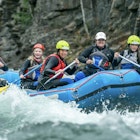
Mar 21, 2024 • 6 min read
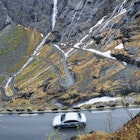
Mar 19, 2024 • 9 min read
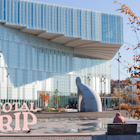
Oct 24, 2023 • 9 min read
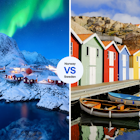
Jul 28, 2023 • 6 min read
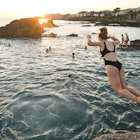
May 22, 2023 • 5 min read
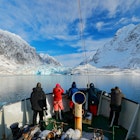
Sep 15, 2022 • 10 min read
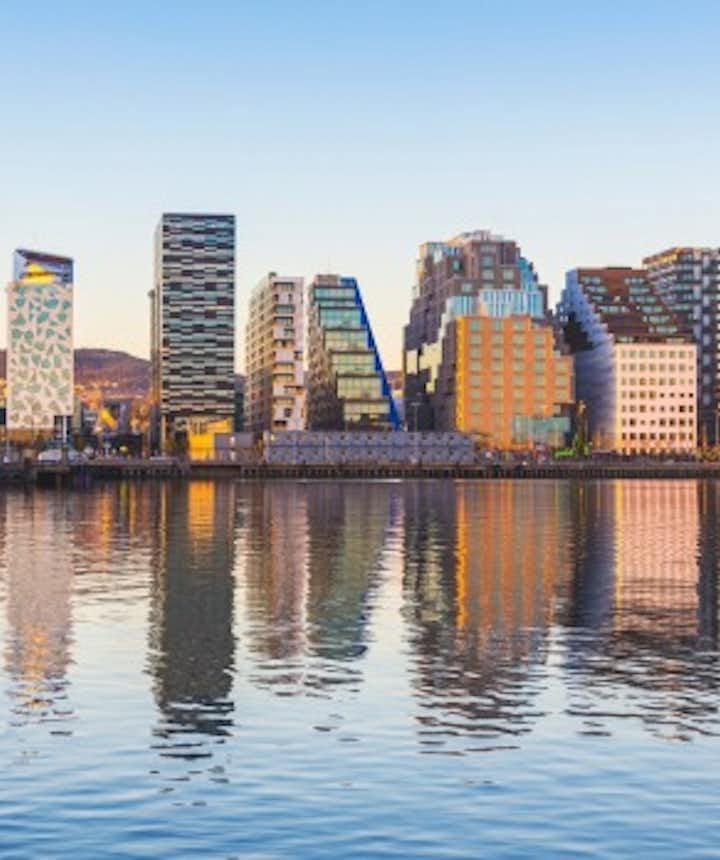
Ultimate Guide to Oslo | City Guide You Need Before You Go

- Getting Around in Oslo
- What to Do - Oslo by Boat
- What to See - Oslo Sculpture and Architecture
- What to Visit - Holmenkollen and Museums
- Where to Stay
- Oslo Pass and Transport Ticket
- Visit Oslo on a Budget
- What to Pack for an Oslo Holiday
- Oslo Food and Drinks
- When to Plan Your Oslo Trip
- Oslo Holiday Travel Tips
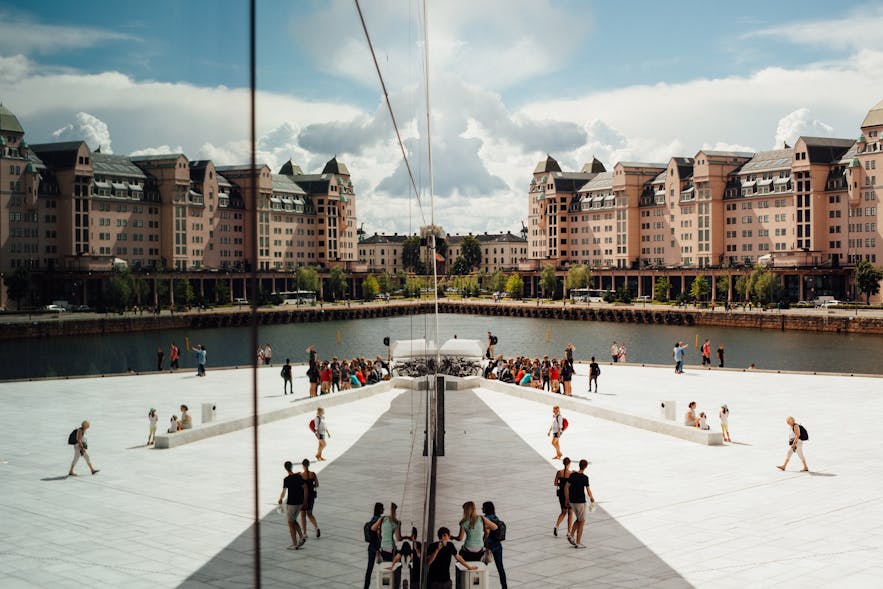
Oslo is one of the most beautiful cities in the world, but when should you visit to make the most of its climate and prices? Which destinations will liven up your Oslo holiday the most? Which tours deliver the best thrills? And which dishes represent Norwegian gastronomy best? We have the answers. Keep reading and book the perfect tour for your interests.
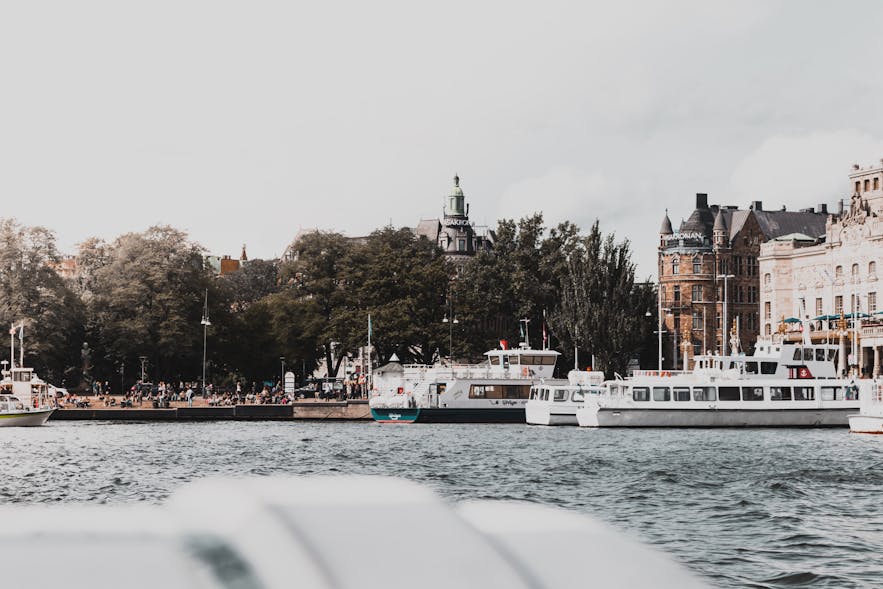
If you’re planning an Oslo holiday, you’ll get the opportunity to tread the same paths Edvard Munch once did, but the city celebrates contemporary art equally well. You can find out what inspired the famous Norwegian-noir writers, Jo Nesbo and Anne Holt.
Oslo was once the stomping grounds of Vikings, but it soon became one of the world’s most interesting art capitals. Its museums cover both Medieval times and contemporary eras. The capital is an innovative one, and you’ll see that spirit in everything from its entrepreneurial heritage to its extraordinary gastronomy and opera
Regardless of how, don’t forget to immerse yourself in its culinary scene, which has become so famous it’s turned Oslo into a culinary destination for the most passionate of foodies. After the sun goes down and your appetite is duly sated, its nightlife awakens in glistening Technicolor. This is the most multicultural of cities, and it welcomes you.
- See also: 7 Things To Do & See in Oslo, The Capital City of Norway
Getting Around in Oslo
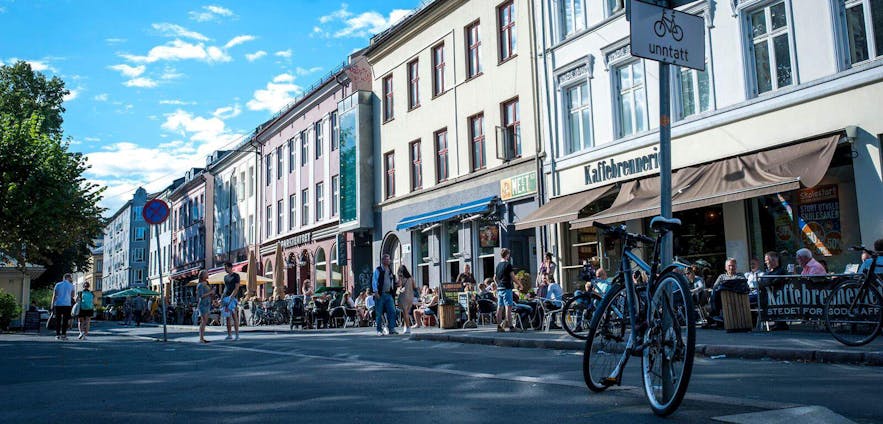
After you deplane at Gardermoen Airport, there are several ways for you to get to Oslo. You can try the car rental service, which you will find several different rental companies at the airport. Or, enjoy the fastest way to downtown by Flytoget . Another public transportation is by Oslo Rail, which is also an environmentally friendly way to go for.
When getting to the city, make Grünerløkka as the first stop. This was once an industrial area, but it’s become Oslo’s trendiest arts spot. It’s home to several art schools, so it’s populated with a range of contemporary art galleries and bars. You’ll get to see global art talent and sample unusual tastes at the Mathallen food market. The riverside walkway is perfect in both summer and winter.
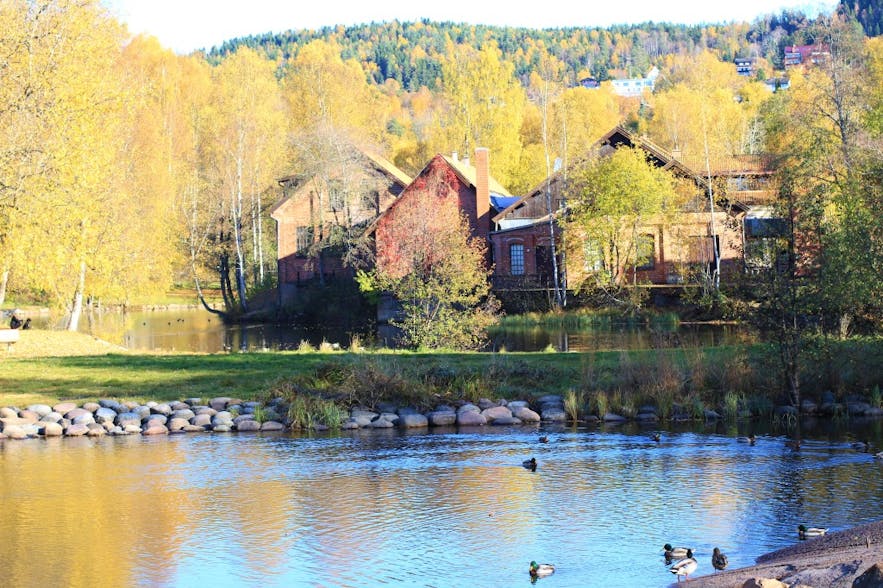
The Akerselva River runs through the center of Oslo, starting from Maridalen and carrying you past the Opera House, Frogner Park, and Grünerløkka. Once the sun sets, stop by at Torggata Botaniske, an unusual botanical bar that’s renowned for its plant-lined walls and impressive cocktail menu. This is the perfect place to try out botanical-laced cocktails and local wines. You’ll feel as though you’re inside a forest, and the ambiance is a global phenomenon.
What to Do - Oslo by Boat
The Oslofjord Sightseeing Boat Tour will carry you to most of Oslo’s most important destinations, from The Viking Ship to the Fram Museums. Hovedøya is a nature lover's paradise and is nestled along the rocky island of Langøyene, where you'll spot breeding waterbirds and pristine vegetation.
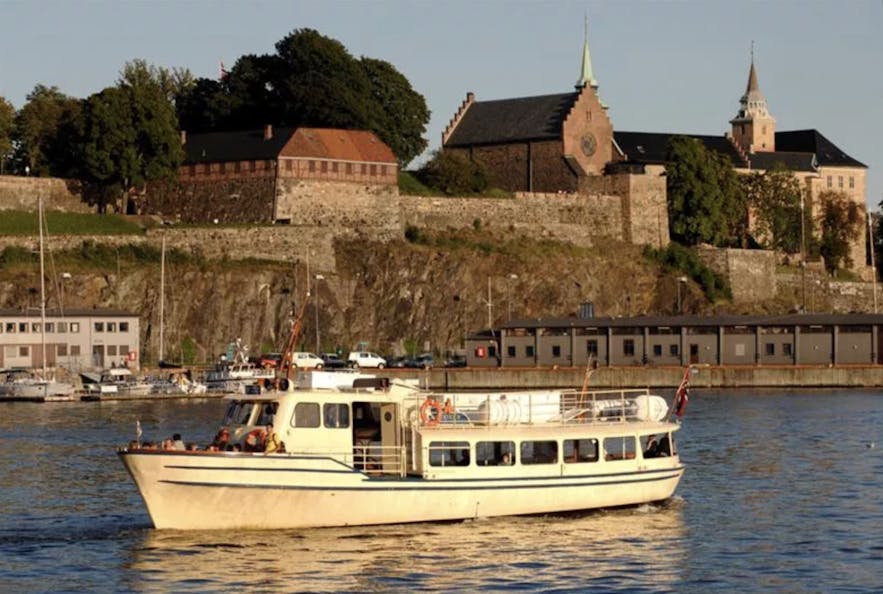
The boat trip will take you to Oslo Opera House, which plays the starring role as an architectural centerpiece. It hosts contemporary opera such as The Magic Flute alongside jazz festivals and workshops. If it’s ballet or modern dance your favour, you’ll find it there, too. It hosts enough performances to keep you entertained throughout the week.
What to See - Oslo Sculpture and Architecture
If you love sculpture and architecture, the Vigelandsparken presents the work of Norway’s famous Gustav Vigeland. There are a total of 212 sculptures in its exhibit, including his famous Sinnataggen. The emotive sculpture park was first planned in the Twenties, with its many artworks being connected by a riverside pathway with its own enormous fountain. It hosts a 20-meter obelisk, which is perhaps its most pronounced feature. Once you've strolled through the park, stop by the Munch Museum, which has a 28,000-strong collection of Munch’s works.
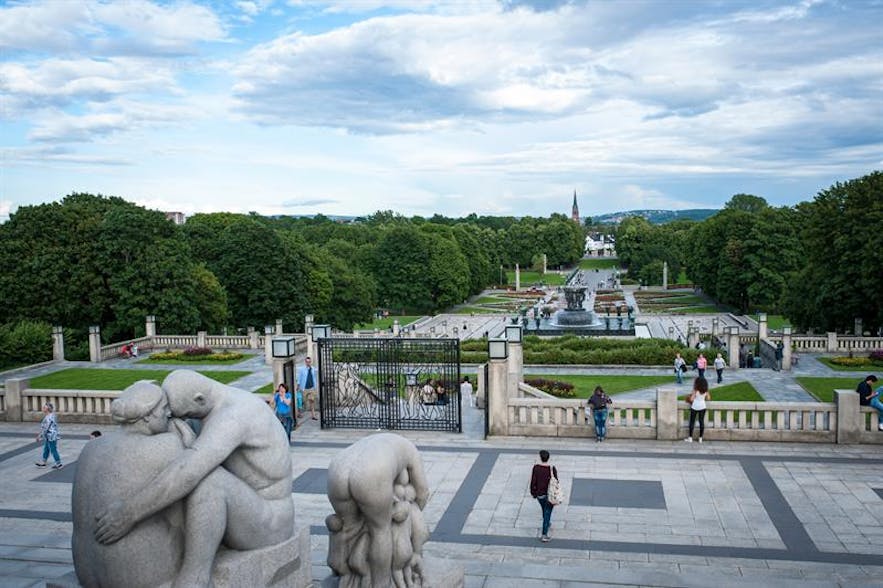
Oslo Cathedral is an impressive 17th-century church that was constructed in the late 1600s. It was restored in the fifties, and its baroque interior is well worth viewing on your Oslo holiday, particularly during one of its many concerts. No tour is complete without a trip to the Rådhuset, which hosts The Nobel Peace Prize Ceremony every year. And if you want to feel som royal vibe, the Royal Palace is open to visitors every Summer.
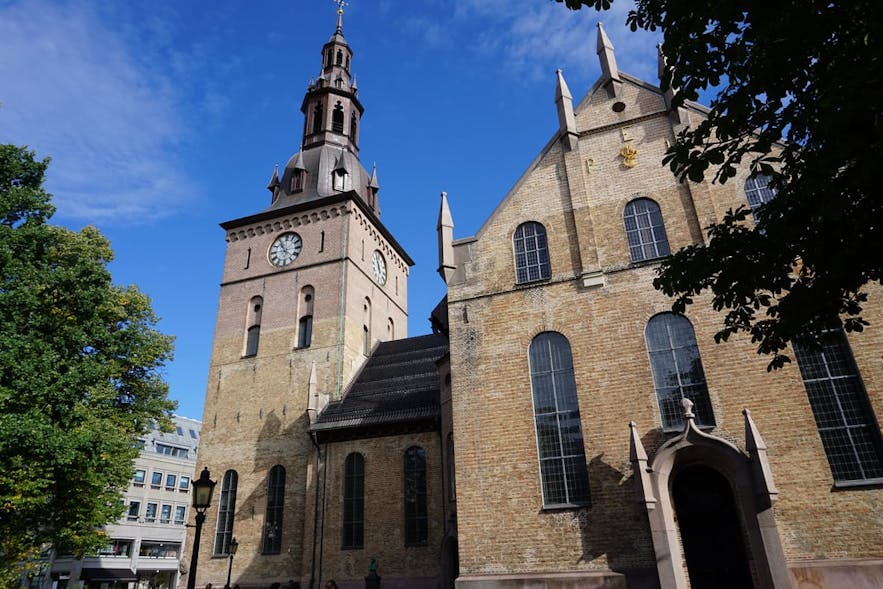
What to Visit - Holmenkollen and Museums
For people who want to have great views over Oslo and Oslofjord, Holmenkollen is definitely ideal and a must visit. Holmenkollen, the ski jump tower is Norway's most visited tourist attraction and one of the world's most famous sports arenas and the ski museum is the world's oldest museum specializing in skis. The ski museum, which opened in 1928 and exhibits over 4000 years of ski history. and its cross-country area has a breathtaking elevation of 325 meters. Taking the lift all the way up a magnificent view of Oslo and the Oslo Fjord. For those seeking a more adrenaline filled experience, there’s a zip line from the top of the hill all the way down to the tribune.
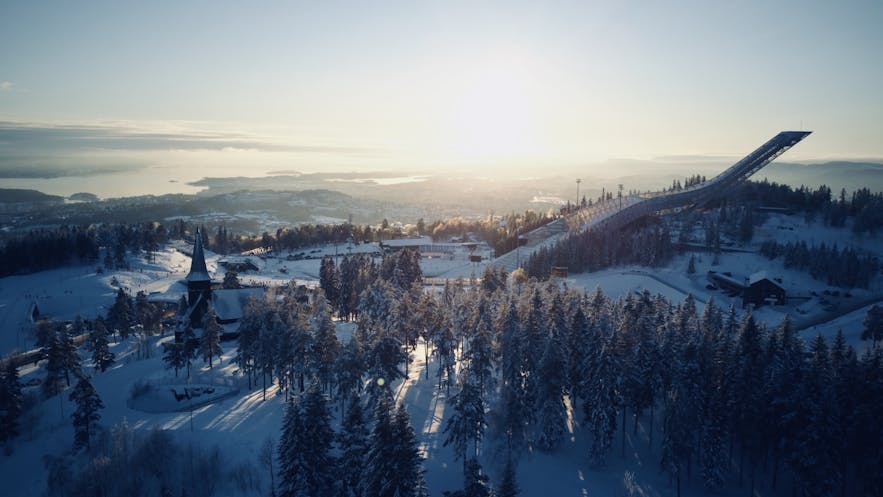
Bygdøy Peninsula is the place for you if you are going to get yourself filled by museums. It boasts a total of five museums . A tip to remember, Oslo Pass will cover all your museum and transport costs.
Kon-Tiki Museum
Norwegian Museum of Cultural History
Viking Ship Museum
Norwegian Maritime Museum
Fram Museum
The Kon-Tiki Museum has an 8000-book library and an adventurers’ museum, replete with the vessels and maps from the Kon-Tiki exhibition. You will learn about the explorer Thor Heyerdahl. He is famous for having crossed the Pacific Ocean in only a balsa wood raft in 1947. That raft, known as the Kon-Tiki, is on display in the museum. You'll also learn about Heyerdahl’s exploration of Easter Island, the Galapagos, and Fatu-Hiva, and how his work impacted geographical knowledge at the time.
The Viking Ship Museum exhibits archaeological finds from the surrounding regions of Oslo. This fascinating museum is dedicated to the history of Norwegian maritime adventure in the time of the Vikings. It is home to some of the best preserved Viking ships in the world. During your visit, you will discover the unique stories of three Viking ships.
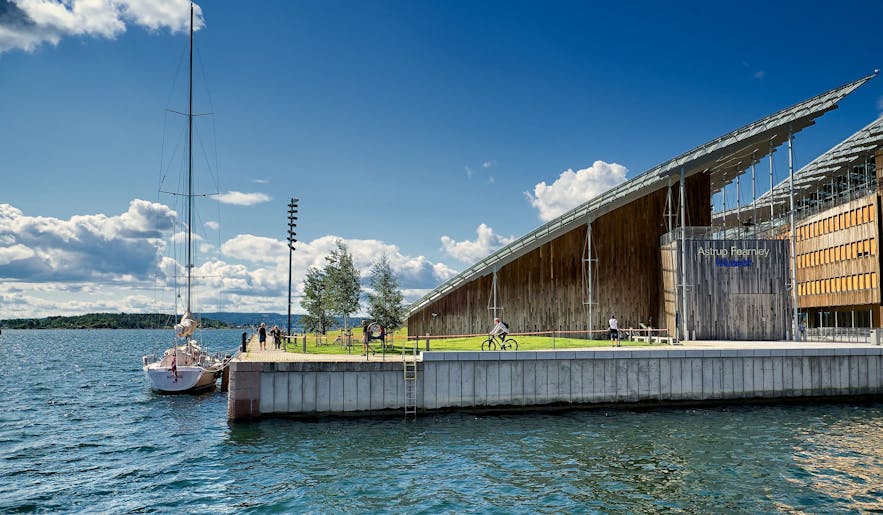
The Astrup Fearnley waterfront museum is a work of art in itself but is also home to an international and contemporary art exhibition. It is not located in Bygdøy Peninsula, it's gorgeously set against the Oslo Fjord and hosts one of the largest Norwegian modern art collections. It was constructed to blend in with the Oslofjord landscape. Its exhibits include works by Jeff Koons, Tom Sachs, and Richard Prince. Its contemporary artists include Ansel Kiefer and Sigmar Polke. The gallery is careful about the art it exhibits, so you won’t find many spurious or pretentious collections within its halls. It opens at 12 and closes at 17:00, so make sure you’re at the door at noon. You’ll need every minute you can spare.
- Press here to find more tours to Holmenkollen and Vigeland Park
At a Glance - Akershus Fortress
Akershus Fortress was constructed to protect the city, but it’s been modified to include a military installation. It’s worth a visit for its medieval history and sprawling grounds alone, but no history tour is complete without a guided trip and musical recital. The fortress was built by King Haakon the Fifth and became home of Princess Margaret of Denmark in 1363.
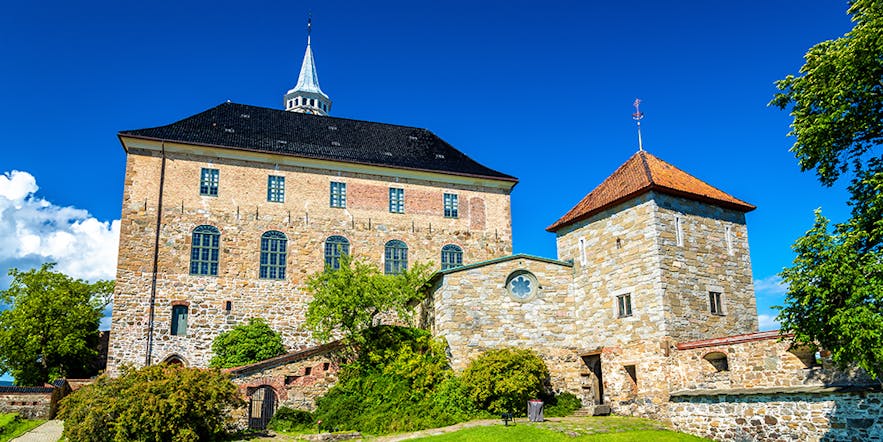
Not long afterward, it was turned into a cheerful renaissance home. In the 19th century, it was used as a prison known for its slave labour. It was ultimately restored and now includes a Norwegian Resistance Museum to celebrate the Norwegian fighters of the Forties. It remains one of the best spots for viewing Oslo Fjord, and it even hosts concerts and dinners at its own private restaurant.
Where to Stay
The city has accommodation along the waterfront, in the city center, and nearby Vigeland Park. Oslo is a relatively small city, so any central hotel will support your transportation routes.
Aker Brygge: If water soothes you, these previously rundown dockyards have been upgraded, turning the area into one of Oslo’s trendiest. It’s a short distance from the city center and is close enough to the highway to support a cross-country tour. Aker Brygge has a number of galleries and canals, so take the opportunity for a sunset stroll.
Majorstuen: It is close to Vigeland Park, but as one of Oslo’s trendiest neighborhoods, it’s a little more expensive than other parts of the city. Even so, it has some affordable accommodations and is close to major public transport routes.
The Frogner District: It is one of the city’s best established, and it’s home to the upper crust of Norwegian society. It’s a quiet area near to the exquisite Frognerparken. Those on budget trips will find affordable shared accommodation in the Frogner District's many apartment blocks or through Airbnb listings.
Grünerløkka: It is Oslo’s most culturally disparate region. It attracted droves of immigrants in the eighties and has thus become an internationally relevant region with a decidedly bohemian flair. This is where some of the city’s trendiest restaurants and bars can be found. It’s a youthful area steeped in Millennial culture.
Akershus County: Consider a bed and breakfast or hotel along the Fjord on Asker road in this municipality. Each morning, you’ll be able to stroll to the public library and station.
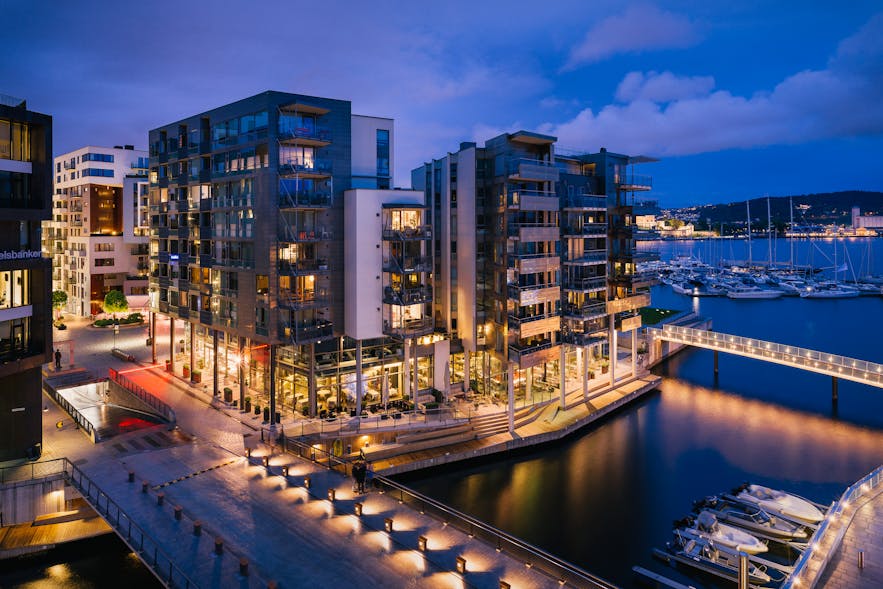
Oslo’s hotels are well-priced. You won’t need to pay more than you would in any UK or US city. It has a thriving Airbnb market, but if you’re looking for a truly unique experience, The Thief and Clarion Collection Hotels are among the most original. The Solbakken and Hotel Continental are expensive but top-rated. Wi-fi, 24-hour front desk, free breakfasts, and paid public parking are typical of the best hotels in the city. All but one Oslo hotel are smoke-free.
Oslo Pass and Transport Ticket
Oslo is a small city with a well-developed public transport system. It won’t take longer than half an hour to travel from its center to the city outskirts by bus or tram. Public transportation is usually on time. The Oslo Pass gives you unlimited free bus and tram travel as well as entrance into the city's museums and galleries. It can be used on the boats to Bygdøy, but not to Oslo Gardermoen Airport.
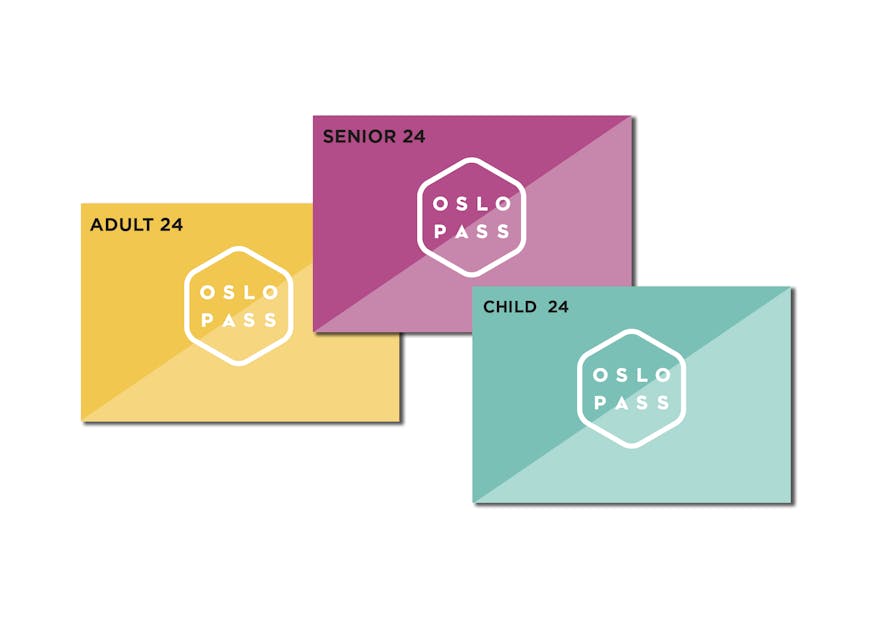
A one-month Ruter transport ticket will cover your costs at a pocket-friendly price, but make sure you choose the one or all-zone option that suits your needs best. The city has the second most expensive taxi tariff in the world, so a monthly ticket will bring down your holiday costs significantly.
Visit Oslo on a Budget
Oslo falls in the center of Europe’s beer index, and its hotel prices are generally affordable, with overheads that equal any world-class destination. It has several free tourist hot spots, and you can expect to pay about 250 NOK ($28) for a meal. The city’s coffee scene is raging right now, with prices that are comparable to Starbucks despite an impressive upgrade in quality. A Ruter monthly public transport ticket will set you back about 750 NOK ($85).
What to Pack for an Oslo Holiday
Even if you’re travelling in summer, you’ll need a jacket and jersey. The weather is unpredictable, which makes for some challenging packing. Spring, autumn, and winter can be chilly and windy, so a lightweight windbreaker is a must. Wintry weather requires ski wear, scarves, and thermals. A heavy coat and walking shoes will keep you comfortable on long winter hikes. Oslo medications are expensive, so fill your prescription before you leave. European over the counter medications often require a script in Norway, so add your OTC medications to your luggage and pack a written doctor’s prescription for them.
Oslo Food and Drinks
Oslo is passionate about fresh ingredients, and no wonder, given its many Michelin restaurants. Chefs grow their own ingredients, even for their garnishes, so you can expect a passionate approach to food. Here is the list of the most recommended restaurants and cafes in Oslo.
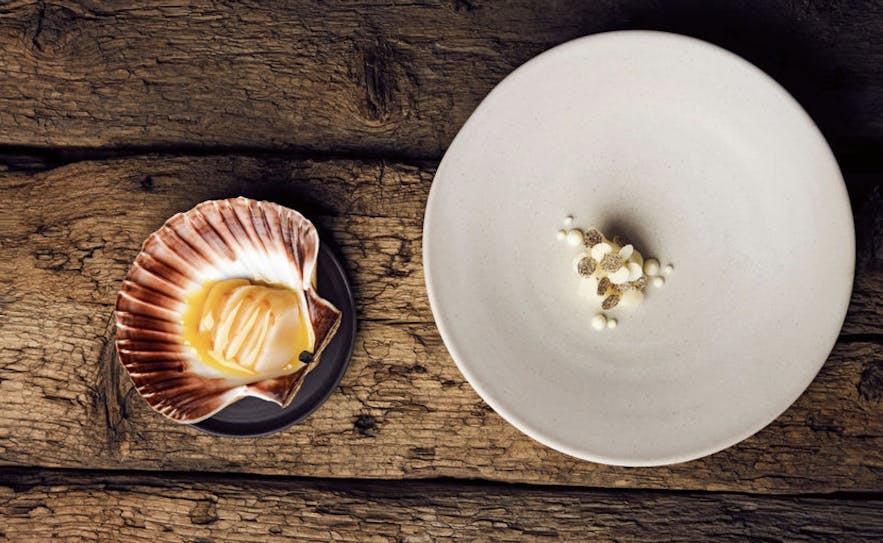
Maaemo is a place for you if you enjoy fine dining. Maaemo is the only three Michelin star restaurant in Norway. In addition to the seasonal Norwegian cuisine, Maaemo focuses on the harmony by highlighting raw and cooked ingredients along with the culture and history of Norway. Chef Esben Holmboe Bang created a menu entitled “A Journey through the Norwegian Landscape.” Isn’t a must try when visiting Oslo?
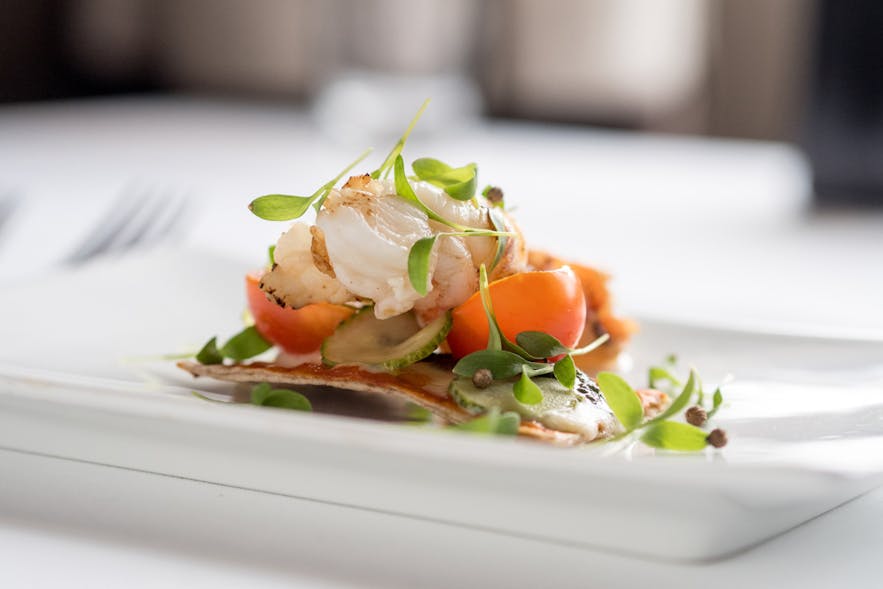
Hos Thea is another restaurant that has numerous awards, which is located in a 100-year-old butcher shop in Skillebekk. The chef and owner Sergio make sure all the customers will taste the seasonal dishes, such as homemade crayfish ravioli and deer with blueberry sauce. How about having a glass of wine and enjoying this creative cuisine in an intimate place like Hos Thea?
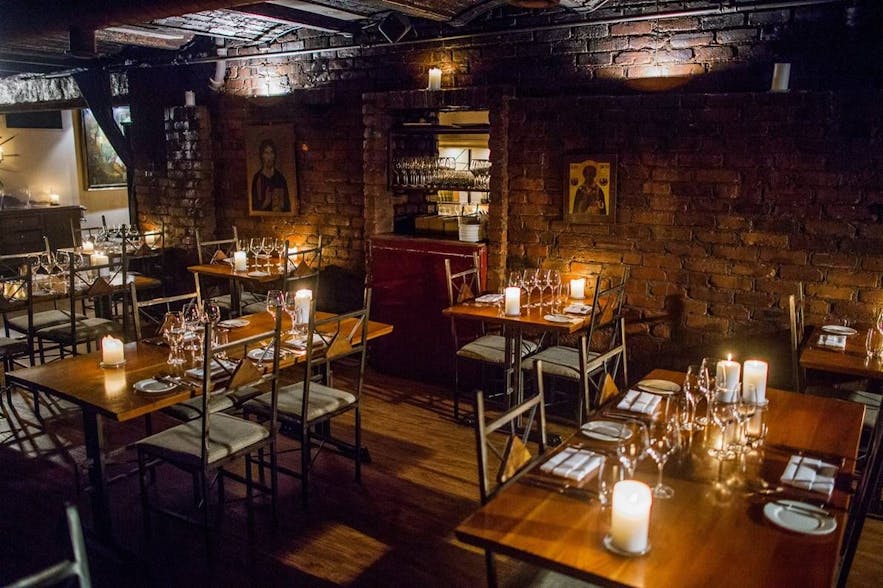
Klosteret Restaurant let you dining in the building that was built in 1899. Klosteret Restaurant insists on only use ingredients supplied by local farmers and artisans. Here, Norwegian and European fine dining is what you expect to have. Organic salmon with asparagus, trout roe & dill foam, and veal with sweetbread & cabbage. Try all of these in the candlelit space of exposed brick walls and arches.
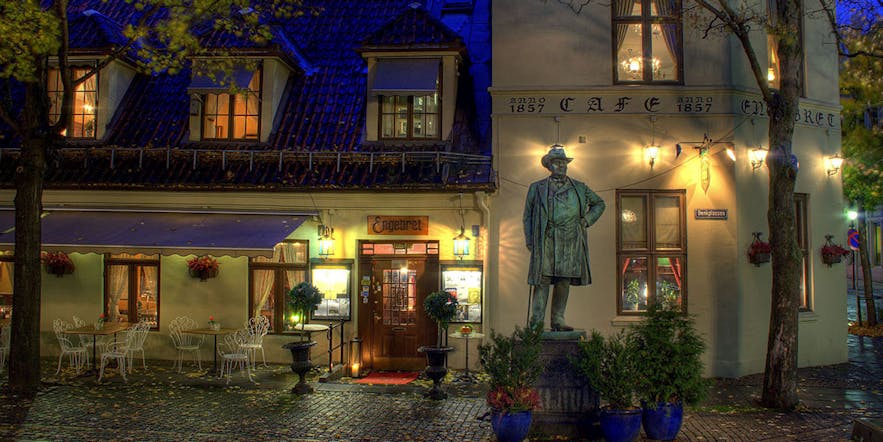
Engebret Café is the local institution among gourmets. This is also the oldest restaurant in Oslo in a building from the early 1700s. Within the historic neighborhood of Kvadraturen, you will find “Engebret Cafe’”. This restaurant dates back to 1857 and provides guests the opportunity to experience traditional Norwegian cuisine. Dishes include reindeer carpaccio with grilled goat cheese and cured herring with potato salad. Even Edvard Grieg and Edvard Munch were one of the guests.
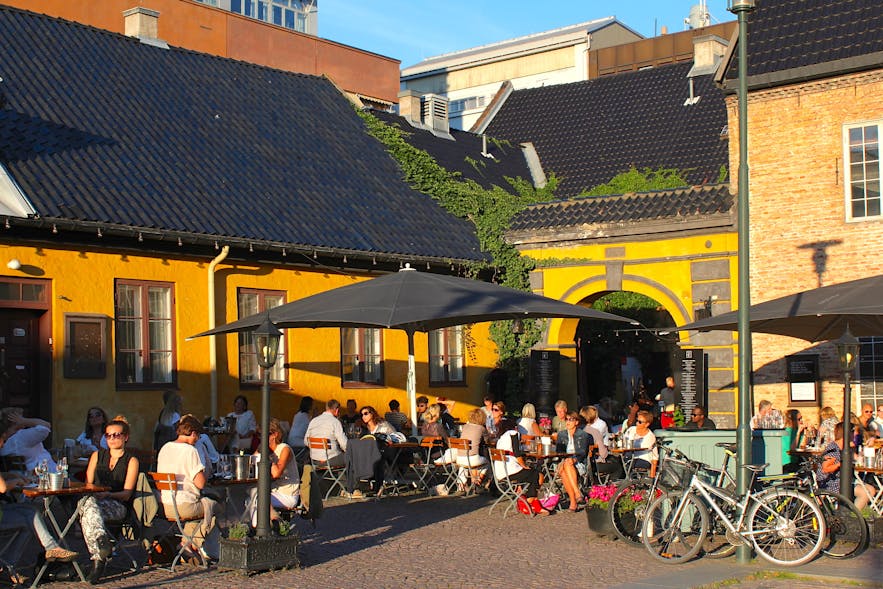
Kafe Celsius offers a cup of black coffee with a vanilla marinated strawberry dessert sound like something everyone wants to have on a cozy afternoon. Kafe Celsius, in addition to outstanding dessert and coffee, is located in Christiania Square, which is surrounded by some of the oldest buildings in town. This is a perfect place for you to sit down and enjoy a peaceful moment in Oslo and recharge for your next adventure.
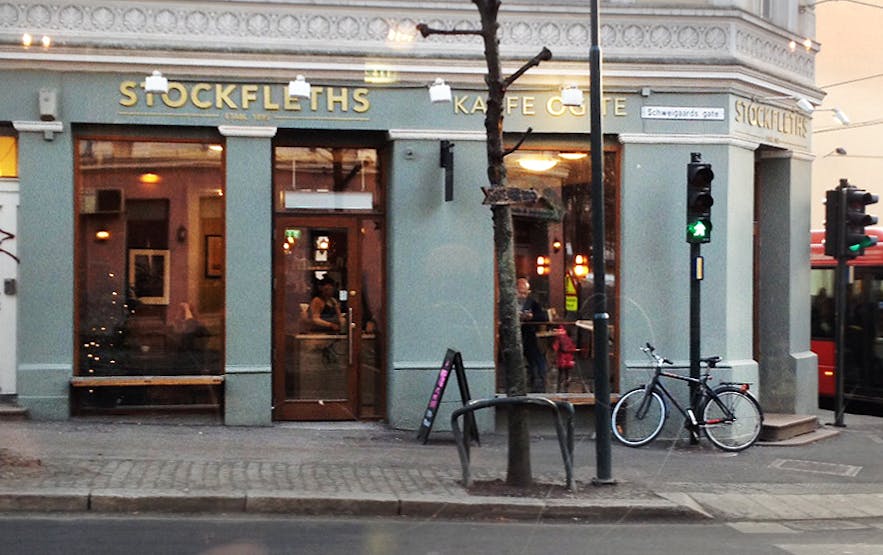
Stockfleths let us go back to 1895 when the first Stockfleths opened. Almost 120 years old, Stockfleths has helped characterize the new Norwegian coffee culture as we know it today. Nowadays, the chain has been expanded to greater Oslo. You don’t need to go back in time to taste the amazing brew from Stockfleths.
When to Plan Your Oslo Trip
Norway’s climate is mild but unpredictable. It experiences snow along the coast, with chillier weather in its inland regions.
In summer, temperatures rise to an easy 18 degrees Celsius.
If you’re visiting for the region’s natural heritage, Oslo's landscape breaks into sparkling colour between May and June.
June and August bring midnight sunshine ideal for cycling or hiking tours.
The two periods when the city attracts the fewest tourists is between September & October. So if you favour quiet roads and fewer clicking cameras, that's your best season
Skiing is at its best during March, and the snowy sport gives you a pocket-friendly way to enjoy the region.
If you're planning a hiking or cycling holiday, summer is the best season for you.
Tourism season happens from May to August when the weather is chilly but sunny. This is the most expensive time to visit the city.
December is the rainy season, with as many as 28 days of precipitation, so if your visit falls on Christmas, book a car or travel by Uber.
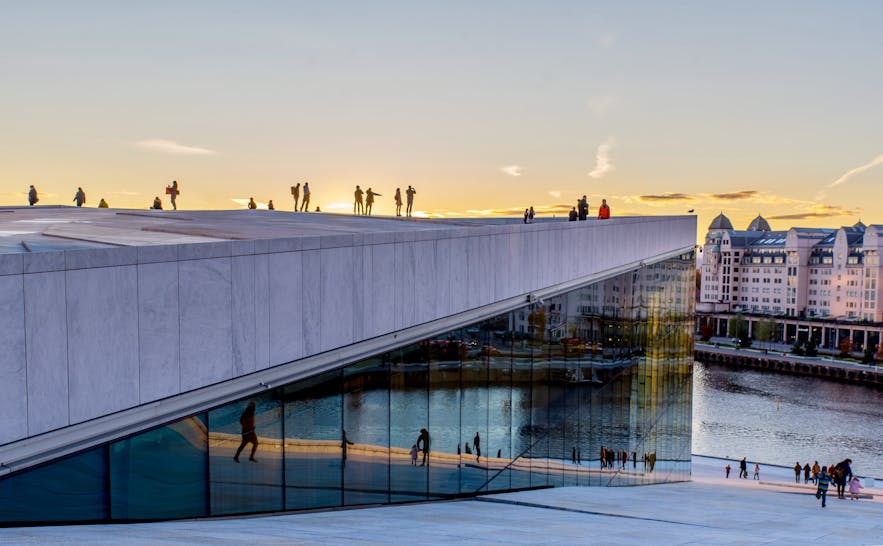
Oslo Holiday Travel Tips
Oslo is a tourist-friendly destination with economical tours and free guides.
You’ll need a two-pin adapter for your gadgets. The city uses the Europlug Type C&F.
To bring some cash may be wise but not necessary. Cash will be around in most societies for many decades; however, some nations are already well on the road to going entirely cash free. One of these nations is Norway.
A wide-angle lens and polarizer will adapt your camera to Oslo’s sunny landscapes.
If you book your bus tickets before you land, you can usually secure tickets for half the price of last-minute offerings.
Oslo’s Uber services are far cheaper than taxis, so they’re the best way to get around. The service has share rides via the UberPool option for a truly pocket-friendly alternative.
Oslo’s recreational and museum areas are tightly packed together, and if you take a boat to Bygdoy from Pier 3, you’ll be able to cover several destinations at once.
One entry fee will give you access to Norway’s biggest art exhibit as well as a large collection of museums.
You can travel with Panorama tour which will carry you to the Holmenkollen Ski Jump and Museum. There are spectacular hiking trails in the area. You can do a little island-hopping at your destination on the local ferries.
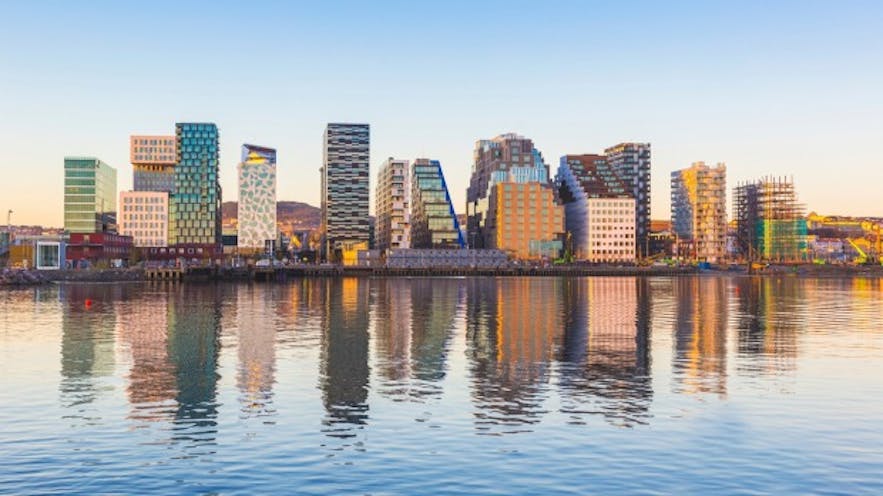
National Geographic calls Oslo “The Queen of Nordic Cool,” and no wonder. As one of the trendiest capitals in an already edgy country, it delivers a wealth of contemporary culture. It’s known as one of the most expensive capitals in the world, but with a little forethought, you can craft an affordable itinerary. To book a tour that's crafted to include the city's most glistening destinations, check availability by choosing a date now.
Popular articles
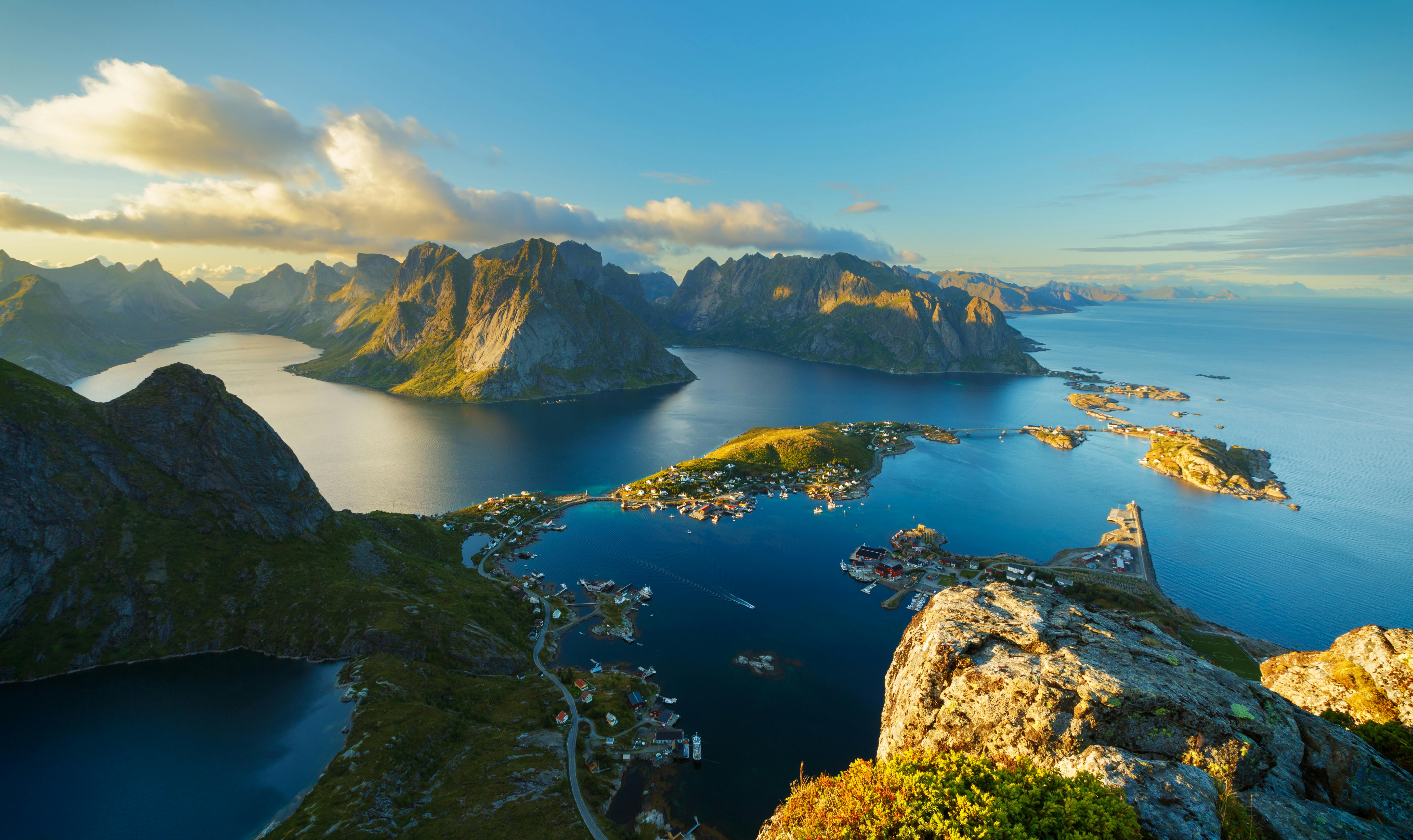
7 Amazing Hikes in Norway
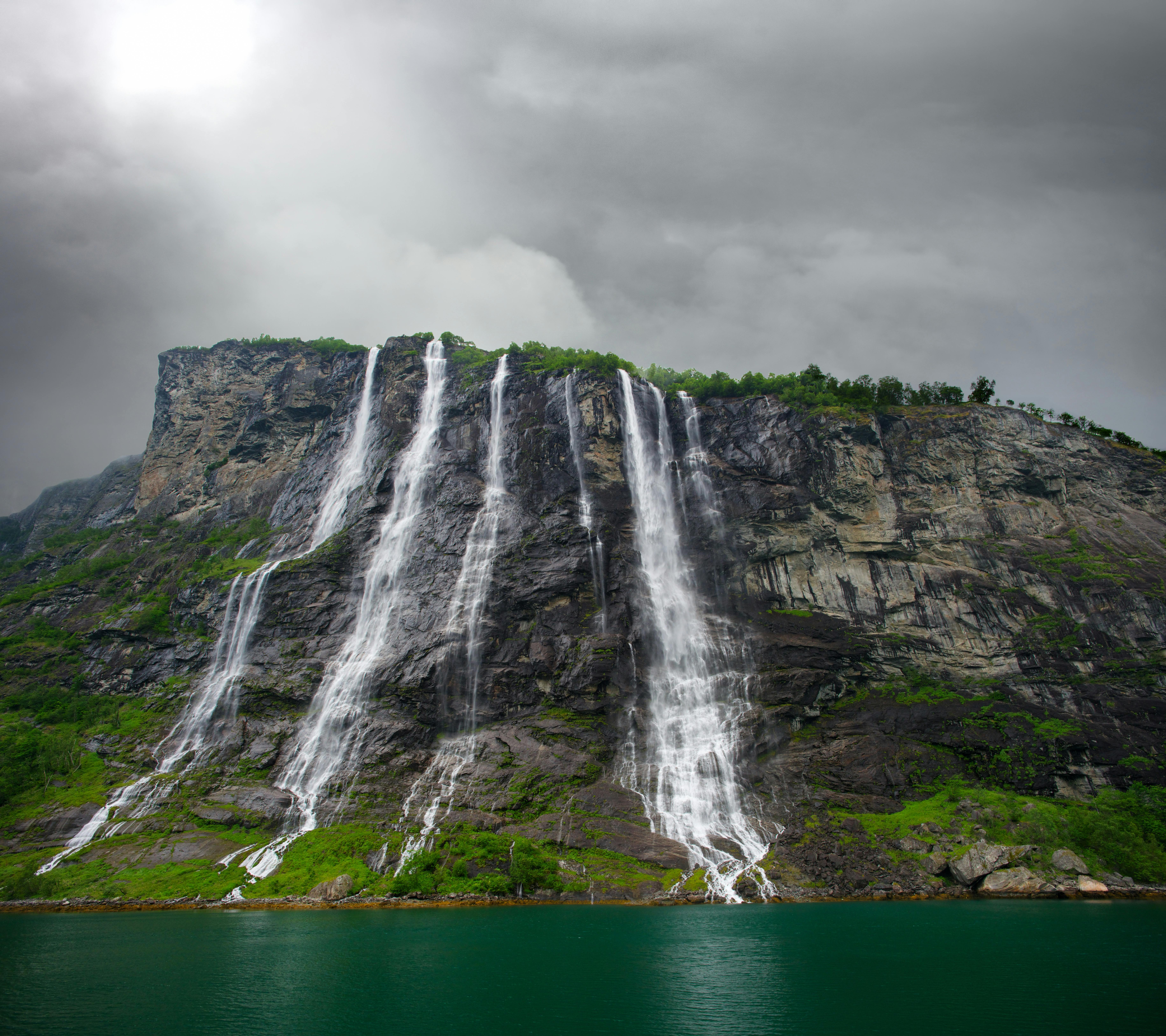
Top 10 Waterfalls in Norway
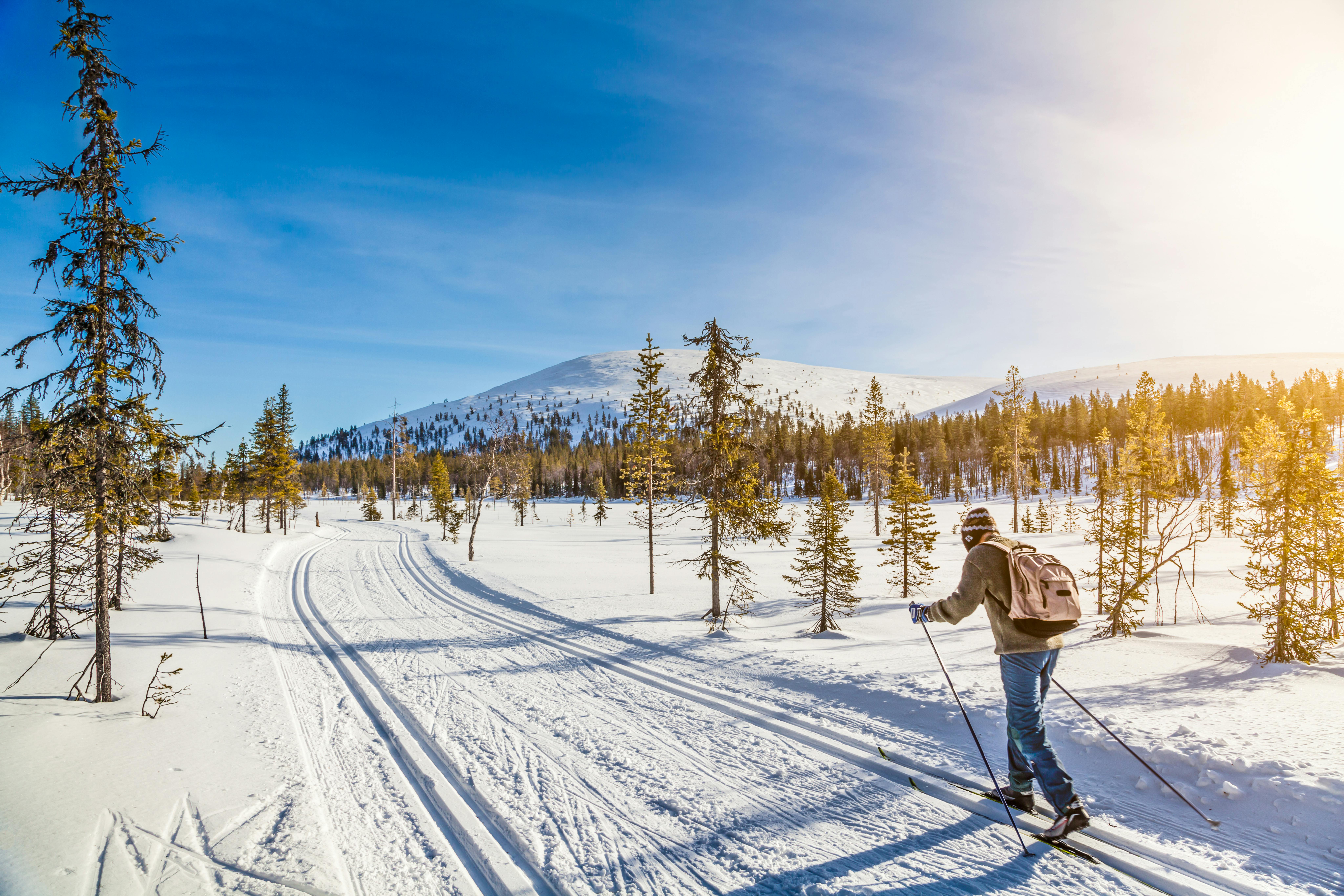
Top 10 Things To Do In Norway
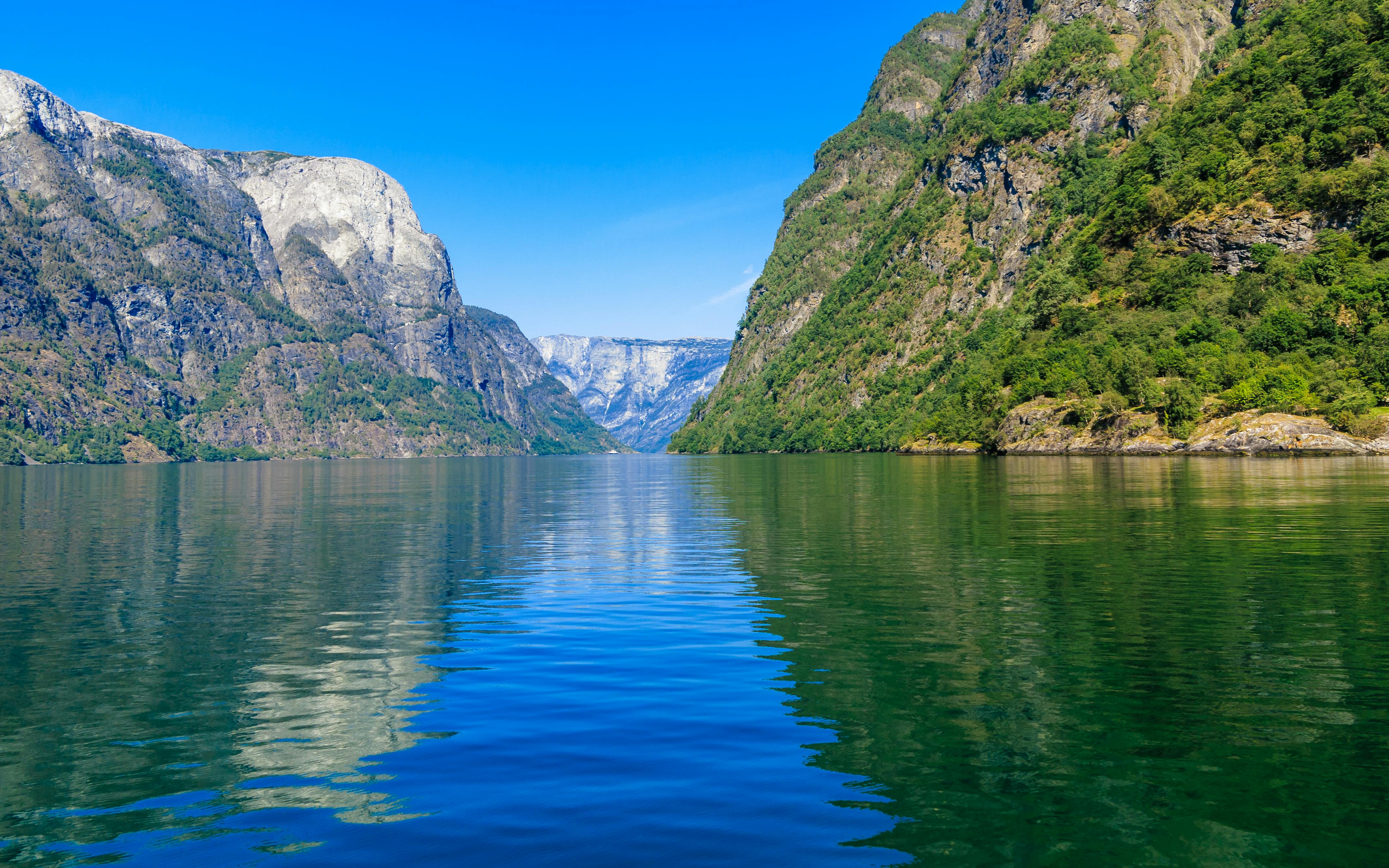
The Ultimate Countdown of Norway's Fjords
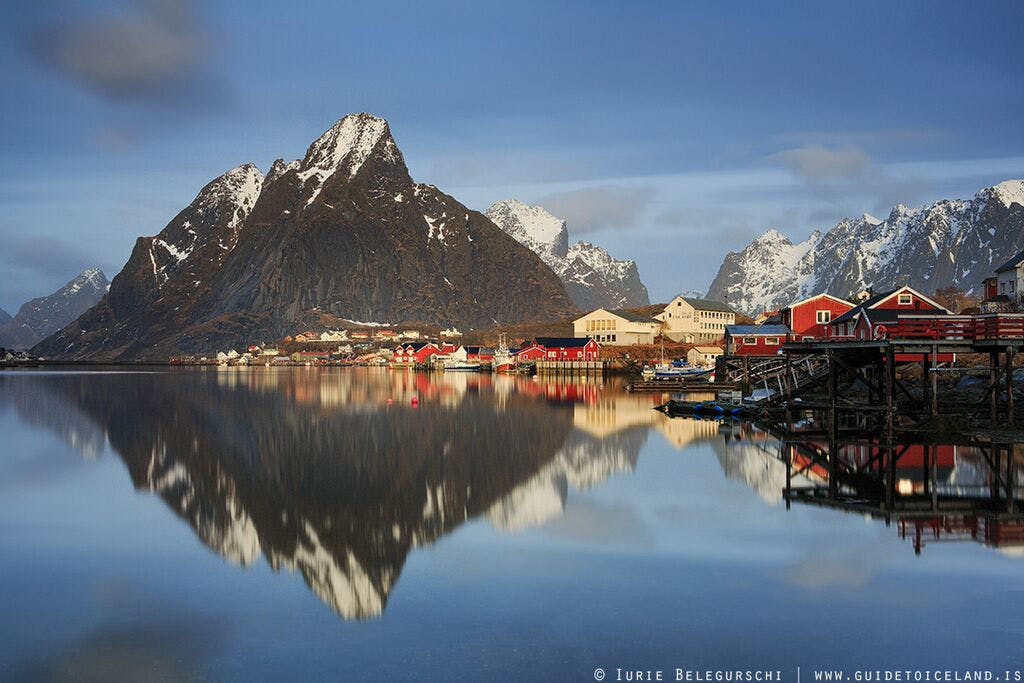
8 Things You Didn't Know About Norway
Other interesting articles.
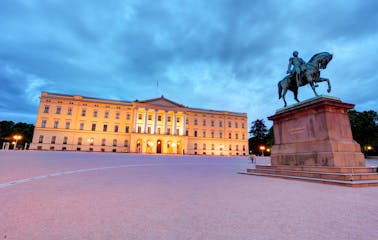
7 Things To Do & See in Oslo, The Capital City of Norway
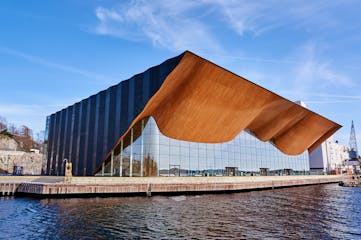
A Guide to Kristiansand
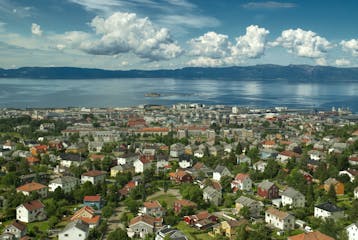
A Guide to Trondheim
Top things to do in norway.
Book your complete trip with the best companies only
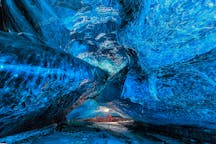
Adventure Tours
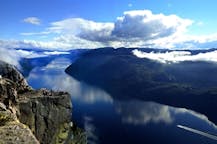
Fjord Tours
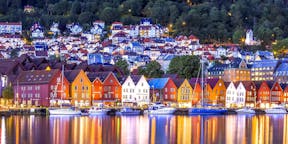
Vacation Packages
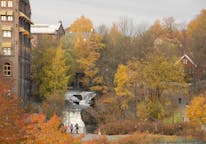
Biking Tours
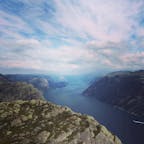
Sightseeing Tours
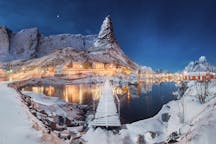
Lofoten Tours
The Best Time to Visit Oslo – and When to Avoid it!

Oslo; it’s the land of hygge, beautiful fjords, and thriving nature. It’s a city of many faces. To some, the perfect destination for a romantic weekend getaway; to others, it’s the ideal place to spend an action-packed summer holiday. To me? Well, it’s a bit of both.
Travelers come from all over the world to experience Norway’s Viking capital, but there’s one question on everyone’s mind – when exactly is the best time to visit? The answer, unfortunately, is not so simple. Oslo is a city that experiences all four seasons, and each has its own unique charm.
The good news is that there really is no wrong time to visit Oslo. But, depending on what you’re looking for in a vacation, there are certain times of year that are better than others. To ensure you make the most of your trip, I’ve put together the ultimate seasonal guide to the best (and worst) times to visit Oslo.
Read on to find out when is the best time for you to travel to Norway’s picturesque capital city!
Hint: See if you can figure out what the missing month is!
You might also like: My Top Hotel Recommendations for Bergen
Fall ( Mid-August – October)

Say hello to crisp air, beautiful autumn colors, and long walks along the Aker River. Fall is a wonderful time to visit Oslo if you’re looking to escape the crowds but still enjoy all the city has to offer.
There are significantly fewer tourists than in peak season, which means shorter lines at attractions, cheaper accommodation rates, and a more authentic experience overall. Just be sure to pack a jacket – the weather can be unpredictable!
You might also like: One of My Favorite Hotels in Oslo
The fall season may start in mid-August or early September. The average fall temperature is +12C, but it begins to get even colder as October approaches. There’s no doubt that some of the most beautiful months in Oslo, Norway, are September and October, when the sky often glows in warm hues, the air is crisp, and leaves start to turn yellow.
Best things to do in Oslo during the Fall season:
● Visit the Oslo Opera House – One of Oslo’s most iconic buildings, the Opera House is worth a visit even if you don’t plan on seeing a show. The sloping white exterior is made from Italian marble and granite, and offers incredible views of the surrounding fjord. The Opera House is free to visit, but tours cost 120 kroner (about $15) for each adult and 70 kroner (around $8.50) for children between the ages of 4 and 16. Oslo Passholders get a discounted rate.
● Appreciate Art and Nature at Vigelandsparken ( Frogner Park ) – This is one of the most famous landmarks in Oslo, with thousands of people uploading photos of the sculptures in the park every year. It has more than 900 distinct works of art by Norwegian sculptor Gustav Vigeland, making it the world’s biggest sculpture park. It’s a beautiful spot to spend an afternoon, especially in September when the roses are in full bloom. If you visit in October, you’ll be able to see the leaves changing color.
● Explore the VÍKINGR – This is an immersive exhibit that transports visitors to the Viking Age and immerses them in the daily life of Vikings. See if you can spot the Gjermundbu helmet while you’re there, it’s the best preserved Viking helmet in the world! Check out my previous article to learn more about this incredible exhibition.
● Hiking in Nordmarka – Nordmarka is Oslo’s green lung, and it’s the perfect place to escape the hustle and bustle of the city. There are numerous hiking and biking trails to explore, but you’re also sure to find a quiet spot to relax. The hiking trails in Nordmarka are usually well-marked, but a map is recommended for lengthier stretches.
● Sample Norwegian Comfort Food – Kjøttkaker (meatballs) , Pølse i Lompe (hot dog in a potato tortilla) and Vafler (Norwegian waffles) are just three of the many delicious Norwegian dishes you’ll find in Oslo. Be sure to also try out a shot of Aquavit – Norway’s national spirit!
Winter (December – Mid(end)-March

Photo: Michael Ankes – @w83design
Hibernation mode is real in Oslo during the winter months. From December until March, the city is often blanketed in snow, and temperatures hover around the freezing point. This might not sound appealing, but wintertime in Oslo, Norway, can actually be quite magical.
If you’re lucky enough to visit during the Christmas season, you’ll be treated to festive markets, twinkling lights, and gingerbread galore. However, even if you’re not visiting during December, winter is still a great time to experience Oslo’s unique culture. Ice skating, cross-country skiing, and sledding are just some of the fun activities you can enjoy in the snow.
Best things to do in Oslo during the Winter season:
● Visit the Christmas markets – One of the best things to do in Oslo during winter is to visit the Christmas markets. You’ll find them in various locations around the city. Expect to find handicrafts, gifts, and, of course, plenty of festive food and drink. Check here for 2022-2023 Christmas festival dates!
● Go Skiing, Sledding, or Skating! – Oslo is the perfect place to enjoy winter sports. There are several ski resorts within a day-trip distance, and cross-country skiing is also popular in the Oslo forest. If you’re looking for something a little more low-key, go ice skating at one of the city’s many rinks. Some of the most popular downhill ski resorts near Oslo include Winter Park, Tryvann, and Grefsenkollen ski slope. For cross country skiing start out at Sognsvann or Frognerseteren.
● Embrace Nature – Just because it’s cold outside doesn’t mean you have to stay indoors. One of the best things about Oslo is its proximity to nature. There are several parks and forests within the city limits, so you can easily escape into the wilderness for a day of hiking or cross-country skiing. Nordmarka is a particularly popular spot for outdoor enthusiasts.
● Hibernate With a Good Book – If you’re not a fan of the cold, you can always hibernate indoors with a good book. Oslo has many cozy cafes where you can relax with a cup of coffee and a good read. Deichmanske Bibliotek in Bjørvika is one of my favorite places to curl up with a book. It’s the city’s main public library, and it has an extensive collection of both Norwegian and international literature.
● Rent a Cabin or a Hotel room In the Snowy Oslo Forest – For a truly Norwegian experience, rent a cabin in the Oslo forest. There are many cabins to choose from, and they’re the perfect place to relax after a long day of skiing or hiking. It’s a truly magical experience, and it’s one you won’t soon forget.
From the Voksenasen Hotel , the cross-country ski trails of Oslomarka (the Oslo forest) are directly accessible from just outside the front door.
You might also like: My Top Hotel Recommendations for Bergen
Spring (April – Mid-June)

As the snow begins to melt and the days get longer, Oslo comes alive. The city is filled with blooming flowers, and the trees are starting to turn a lovely shade of green. Spring is the perfect time to visit if you’re looking for a more relaxed atmosphere. Easter is particularly lovely in Oslo, as many flock to the mountains.
The 17th of May is our national day and a big celebration in Oslo. The streets are filled with people in traditional dress, and there are parades and celebrations throughout the city.
If you’re planning a trip to Oslo in the Spring, be sure to pack your walking shoes. This is the perfect time of year to explore the city on foot, and you’ll have plenty of opportunities to take in that fresh flowery air. Spring is also an excellent time for outdoor activities, so don’t hesitate to get out and about. Hiking, biking, and kayaking are all popular activities in Oslo at this time!
Some of the best things to do in Oslo during the springtime include:
● Take a Boat Ride on the Oslofjord – As the weather gets warmer, the Oslofjord becomes a popular spot for boat rides. This is a great way to see some of Oslo’s best scenery; you’ll have the opportunity to see charming landscapes, fantastic city views, and the beautiful hills surrounding it. There are several boat tours to choose from, so you’re sure to find one that’s perfect for you.
Find cruises on the Oslo fjord here .
● Explore the Akershus Fortress – The Akershus Fortress is a must-see for any history buff. This medieval castle is one of Oslo’s most popular tourist attractions, and it’s definitely worth a visit. Be sure to explore the fortress grounds, as there is a lot to see.
● Visit the Munch Museum – The Munch Museum is one of Oslo’s most famous museums. This museum is home to a collection of paintings by Edvard Munch, one of Norway’s most renowned artists. You’ll also find several other artworks on display, and you’re sure to learn something new.
● Hike to Holmenkollen – One of the best things to do in Oslo is to hike to the top of Holmenkollen. This is one of Oslo’s most popular tourist attractions, and it’s definitely worth the effort. The views from the top are absolutely breathtaking, and you’ll have the opportunity to see some of Oslo’s best scenery. Oslo Hiking actively plans scenic trips in the area for whoever wants to join; you can book via their website for 75 euros.
● Kayak on the Oslofjord – As the weather gets warmer, the Oslofjord becomes a popular spot for kayaking. This is a great way to get some exercise, and you’ll have the opportunity to take in some of Oslo’s best scenery. Throughout it, you’ll see the beautiful city sights and wilderness highlights like bays, beaches, and islands. No prior kayaking experience is required.
Find available kayaking tours on the Oslofjord here.
Summer (Mid-June – Mid-August)

My personal favorite; Summertime. In Oslo, late Summer is often referred to as “sensommer.” The days begin to get longer, the weather is warm, and the city is filled with people enjoying the outdoors. This is the perfect time to visit if you’re looking for some fun in the sun. Swimming in the fjord, fishing, park life, staying up late, and enjoying the summer nights should all be on your to-do list.
In the Summer, you can pretty much do everything you can do in the Spring, but better. The weather is nicer, so you can enjoy all of the outdoor activities without worrying about the cold. This is also the busiest time of year for tourism, so be sure to book your hotel room in advance.
Some of the best things to do in Oslo during the summertime include:
● Swim in Oslofjord! – As the weather gets warmer, the beautiful fjord becomes a popular spot for locals and tourists alike. The fjord is incredibly clean and refreshing, and there are plenty of places along the waterfront to just dive right in! This is a great way to cool off, and you’ll have the opportunity to take in some of Oslo’s best scenery. You can find entrances either from the docks, or from some public beaches. There is one at Bygdøy, one next to the Opera House, or jump off the docks right next to the Astrup Fearnley Museum of Contemporary Art!
● Fjord Galore – Oslofjord is unsurprisingly lovely in the Summer. As I mentioned above, this is a great time to swim, but it’s also awesome for fishing, or just simply enjoying the views. On Oslofjord, you can also take a boat ride, kayak, or splish splash while taking in all of the beauty Oslo offers. Many people also enjoy taking the small ferries out to the islands for swimming and a BBQ!
● Visit the Norsk Folkemuseum Open-Air Folk Museum – The Norsk Folkemuseum, located on Bygdøy in Oslo, Norway, has one of the world’s most comprehensive collections of artifacts from all social classes and areas of the country. It also features a large open-air museum with more than 150 reconstructed structures from across Norway.
● Rooftop Concerts at the Opera – During the summertime, the Opera House hosts a number of rooftop concerts, which are a great way to enjoy some live music. Sit back and relax as you let the sweet sounds of the city wash over you.
You might also like: The Best Low Budget Hotel in Oslo
So, Did You Figure it Out?
If you remember correctly, I mentioned that there would be a missing month at the beginning of this post. Did you figure it out?
It’s November! But why November, you ask?
Well, in my opinion, it’s just not a great time to visit Oslo. The weather is starting to get colder, and the days are shorter. There are also fewer things to do, as many of the tourist attractions are closed for the winter. It’s cold, it’s dark, and it’s often raining. So, in my opinion, it’s just not worth it.
With that being said, if you would still love to visit Oslo and don’t want to wait until December or for the weather to get warmer, then you still have the option to embrace yourself in the history of it all. For example, you can check out two fantastic museums in Bygdøy:
● Kon-Tiki Museum : This museum is about the adventures of the famous explorer Thor Heyerdahl. The museum is located in a beautiful setting, and has plenty to see and do!
● Fram Museum : The Fram museum is also located in Bygdøy, and is a great place to visit if you are interested in the history of polar exploration. This museum has a lot to offer, including a huge ice-breaking ship called FRAM, as well as an impressive amount of artifacts!
You can also take a walk to the beautiful Oslo City Hall, where you can see architecture at its finest and take in the views of the city. Read all about Oslo City Hall in my previous blog, “ Visit the Oslo City Hall – A public living room .” Or, enjoy a Sauna by the fjord, which is a great way to relax and bond with your friends or family, and they’re open all year round! Check out my blog post Enjoy Sauna by the Oslo Fjord , to learn more about this remarkable experience.
If you’re looking for the best time to visit Oslo, I would recommend either Summertime or Wintertime. Both have their own unique charm, there is plenty to do, and the seasonal weather is perfect for enjoying all that the city offers.
Thanks for reading! I hope this ultimate seasonal guide has provided you with all the information you need to plan the perfect trip to Oslo. Happy and safe travels!
Traveling to Oslo soon? Check out my YouTube videos for visuals, and tips, and join me on my many adventures!
Your friend in Norway,

Pål of Norway With Pål
Norway native, veteran travel guide, sailor, filmmaker, and writer (you might have seen me in one of Rick Steves’ guidebooks!). I want to help you enjoy Norway the right way — like a local. Learn more about me.
DISCLAIMER: Products on this page may contain affiliate links, and I might make a small sum per purchase. For you this does not affect the product price, but supports me and my work, and makes me able to continue sharing my passion for Norway with you. Read the Disclaimer policy . Thank you, tusen takk!
Join on Patreon
Donate on paypal, watch on youtube.
Maybe we should come and stay for a year!!! but go away in November. LOL Actually your November sounds like our November – just not a fun month. I have to say this is a great article. Kudos to you. Ha en fantastisk Sommer!
haha that sounds like a great plan! I’m glad you enjoyed the article, tusen takk! Hope you’ll have en fantastisk sommer as well
Leave a Comment Cancel Reply
Save my name, email, and website in this browser for the next time I comment.
Join the Newsletter

Get my digital recipe book with seven traditional and tasty Norwegian delights!
Your privacy is important to me. View my Privacy Policy.

Become a part of the virtual viking Norway With Pål family, support, and get exclusive content and perks!
Looking for something?
Norwegian culture, travel in norway, countryside, norway travel tips, norwegian food, norwegian history, norwegian language, norwegian traditions, places to stay, things to do.

Your support helps me to continue sharing my passion for Norway with you. Tusen takk! Thank you!
- South Africa
- Afghanistan
- North Korea
- Adventure + Outdoors
- Amusement Parks
- Backpacking Trips
- Boating + Cruises
- Budget Travel
- Bus + Train Travel
- Coasts + Islands
- Country Trips
- Fall Vacations
- Family Vacations
- Green Travel
- Heritage + History
- Honeymoons + Romance
- Inspiration + Guide
- Landmarks + Attractions
- LGBT Travel
- Markets + Bazaars
- National Parks + Reserves
- Nature + Wildlife
- Parks + Gardens
- Pets + Animals
- Photography
- Airlines + Airports
- Budgeting + Currency
- Business Travel
- Celebrity Travel
- Customs + Immigration
- Deals + Rewards
- Family Travel
- Hotels + Resorts
- Luggage + Packing Tips
- Offbeat News
- Photography Tips
- Responsible Travel
- Solo Travel
- Tech + Gear
- Travel Etiquette
- Travel Warnings
- Bars + Clubs
- Celebrity Chefs
- Restaurants + Cafés
- Wine + Vineyards
- Beach Hotels
- Boutique Hotels
- Hotel Openings
- Hotel Reviews
- Luxury Hotels
- Mountain + Ski Resorts
- Spa Resorts
- Vacation Rentals
- Asia Cruises
- European Cruises
- Festivals + Events
- Museums + Galleries
- Style + Design
- Travel’s Best
- Hotel with Agoda.com
- Hotel with Booking.com

JR Rail Pass Guide. All things you need to know, how…

Mövenpick Resort Kuredhivaru Maldives reviews. The detailed review of my vacation…

Hyatt Regency Danang Resort and Spa reviews. The resort is highly…

+7 luxury resorts you must stay in Danang, Vietnam
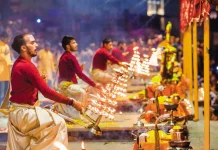
Where to go & what to do in Varanasi? — 15+…
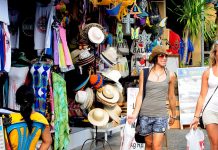
What to buy in Indonesia? — Top +9 famous gifts, souvenirs…

What to buy in Kyoto? — 31+ must-buy Kyoto souvenirs, gifts…
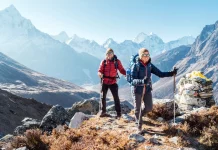
How to prepare for trekking in Nepal? — 10+ Nepal trekking…

India trip tips — 9+ things to know before going to…

All about tips in Nepal — How much to tip in…

Where to eat in Nha Trang? — 27+ budget, best places…

What to eat in Singapore? — 10+ must-eat & best street…

Must eat in Nha Trang — 45+ best street food in…

Must eat in Hong Kong — 7+ must eat & must…

Top hotels in Siem Reap — 8+ best places to stay…

10 must-know things for your best first time European river cruise

Top 3 best luxury cruises in Halong Bay, Vietnam

Cherry blossom festival Korea 2024 — Top 5 cherry blossom festivals…


Ghibli museum blog — The fullest Ghibli museum guide for first-timers

Kyoto festival — Top 10 best events & most famous festivals…

National Palace Museum Taipei blog — What to see in National…

Japanese waterfall — Top 10 most beautiful waterfalls in Japan in…

19+ most beautiful towns in Europe every tourist need to visit…

Georgia travel photos — 20+ captivating photos show Georgia is heaven…

Explore Damnoen Floating Market — The oldest floating market of Thailand

Visiting Fenghuang Ancient Town — One of the most charming ancient…

Mekong Delta travel blog — Beyond rivers of Southwestern Vietnam

14 reasons why you should travel when you are young

Shigaraki Tanuki – An animal symbol of good luck in Japan

Living in the charms of cave houses in Andalucia, Southern Spain

20+ jaw-dropping tiny homes around the world
Oslo travel blog — the fullest oslo travel guide for a beautiful budget trip for first-timers.
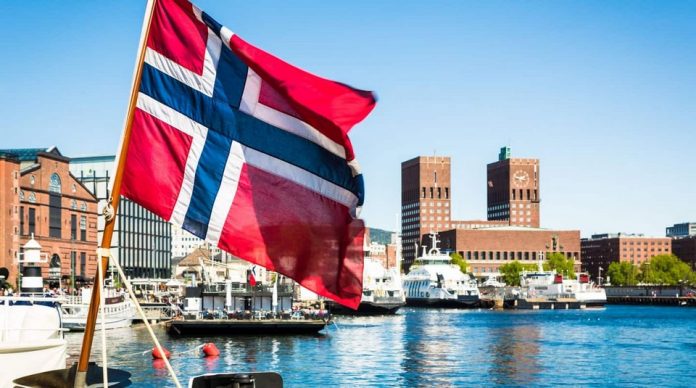
There are not many cities in the world where you can swim in the summer and ski in the winter like Oslo – The Norway’s largest city and also its capital. Oslo is a charming Scandinavian city in Northern Europe (Nordic countries), but it has many interesting hybrid cultures associated with the Southern Europe. Oslo is not only the capital of Norway but also considered the home of the prestigious Nobel Peace Prize. Oslo is also known as the “city of museums” because it has nearly 100 all kinds of different large and small museums. So, traveling to Oslo, Norway: Should you go or not and if so, what to do and how to plan a budget perfect trip to Oslo for the first-time? Let’s check out our Oslo travel blog (Oslo blog) with the fullest Oslo travel guide (Oslo guide, Oslo Norway travel guide, Oslo tourist guide) from how to get, best time to come, where to stay, best places to visit and top things to do to find out the answer!
- Flam Norway travel blog — The fullest Flam guide for first-timers
- Lofoten travel blog — The fullest Lofoten travel guide & what to do in Lofoten for first-timers
- Scandinavia itinerary — How to make a best itinerary for Scandinavia for 8 days?
- Trolltunga blog — The fullest Trolltunga guided hike & How to get to Troll’s Tongue Norway?
- Bergen travel blog — The fullest Bergen travel guide & suggested how to spend 3 days in Bergen perfectly?

Oslo travel blog: Overview of Oslo
Oslo city was established in the early 11th century, but it was not until two centuries later that it officially became the capital of Norway. Since then, this city has made great progress and became a luxury city that everyone wants to once set foot in.
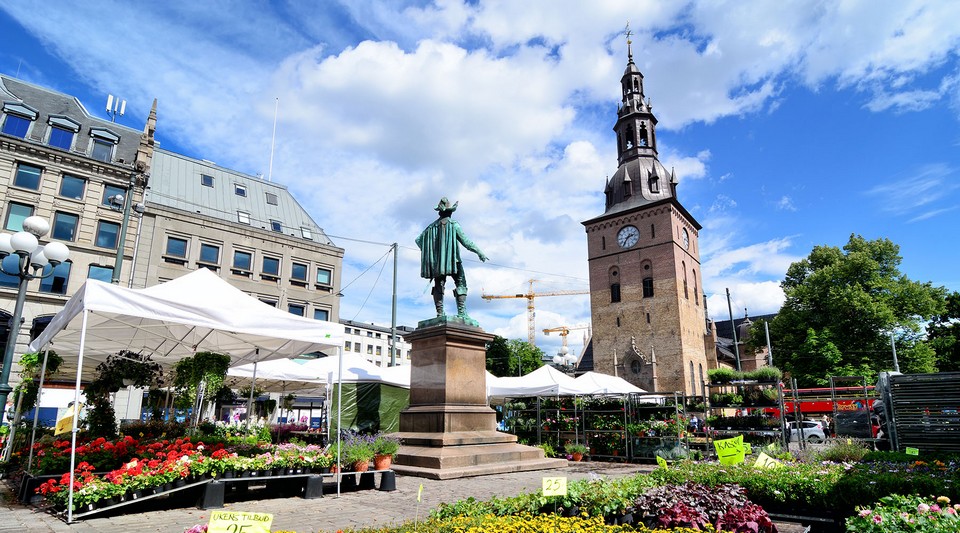
Oslo is also the most populous city of the country with an area of 454 km² and a population of more than 1 million people. It was founded by King Harald III in 1048. However by 1624 it was severely destroyed by a fire.
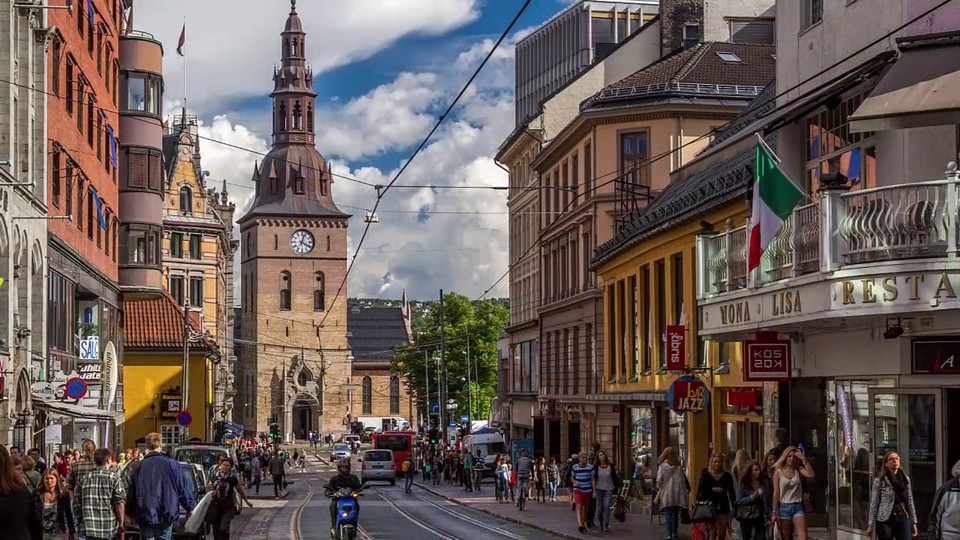
Oslo travel blog: Should I travel to Oslo and how long is enough?
As I posed the question at the beginning of this article, there are many people will indeed wonder whether to travel to Oslo or not? – A Nordic country has always been praised as one of the most livable places in the world. For me, the answer is probably both yes and no. If you only have 2-3 weeks to explore Europe while there are so many other fascinating destinations, the answer based on my European travel experience will be perfectly appropriate for.
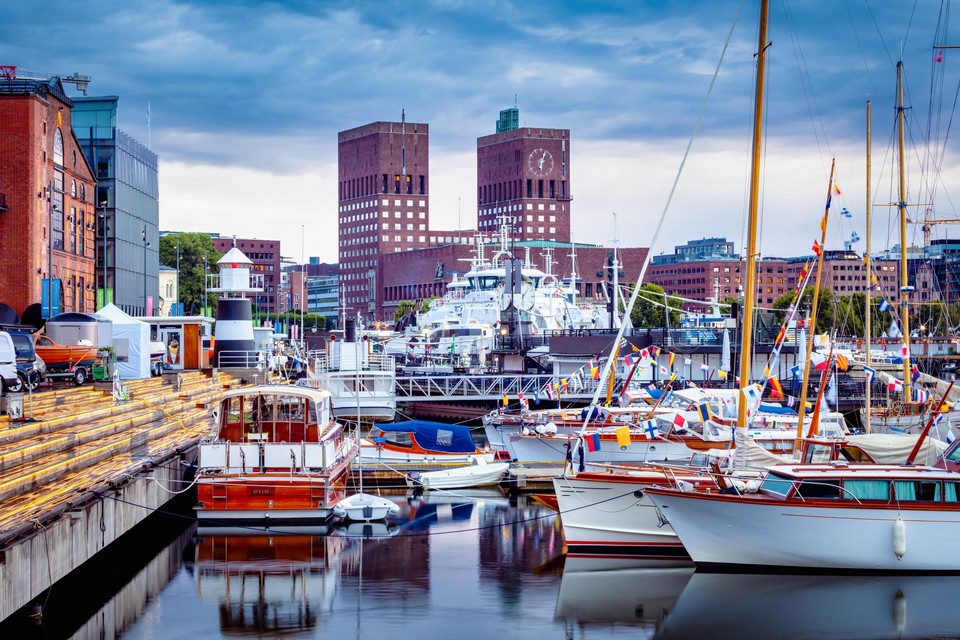
YES, if you intend to go to fjords in Bergen or other majestic natural landscapes, and NO, if you are only traveling to Oslo! Referring to Norway, perhaps the most outstanding thing is its enchanting, breathtaking natural landscapes with majestic mountains or spectacular, stunning fjords and beautiful lakes. For example, the Sognefjorden is considered one of the most beautiful fjords and one of the most beautiful places on earth. Nature lovers absolutely should not miss this land if you intend to come to Norway. However, if you have already been to Norway, of course you should visit Oslo. Because from here you will easily traveling to Bergen or other surrounding areas.
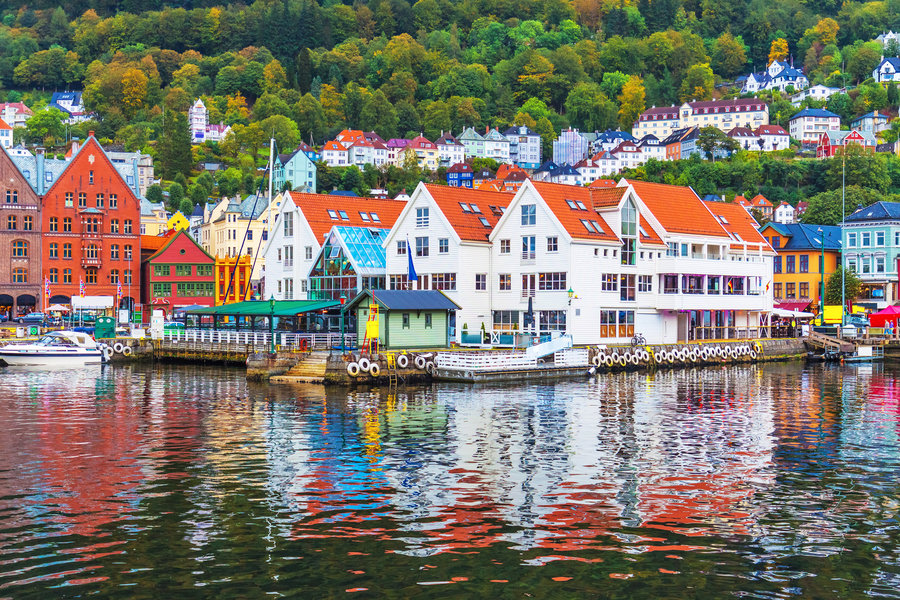
My personal feeling when I first arrived here is that this place is quite open to foreigners. Like the little America of Europe. It must be said that it is complete opposite of Denmark. Here I see a lot of the expat community.
Besides the popular groups of Chinese or Japanese tourists, the settlers from Asia, Turkey, Somalia … are not less at all. In the heart of Oslo, there is a separate street of Asian or Turkish grocery stores (There are several Vietnamese stores). Said that but if you travel alone here is also very safe compared to other countries.
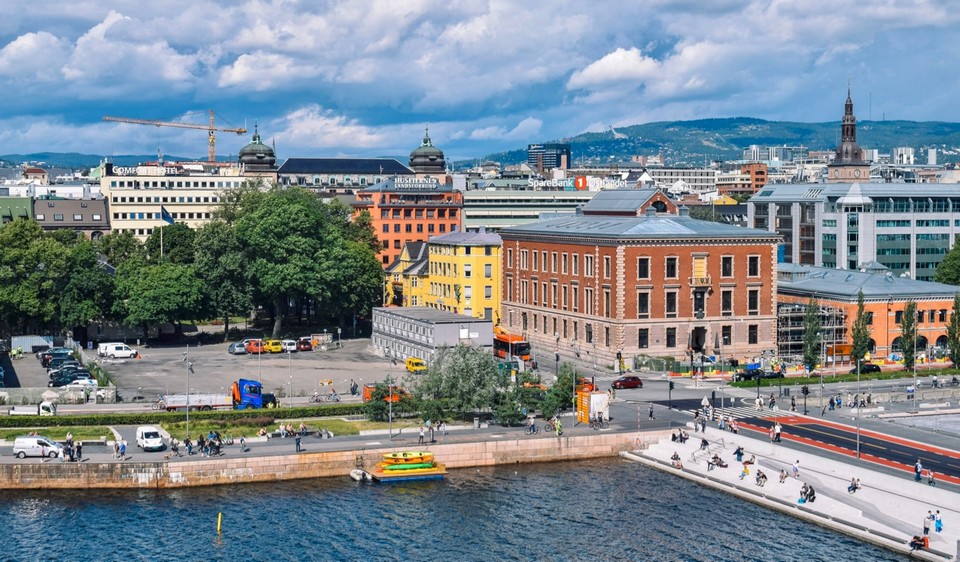
Norway is like other Nordic countries, the architecture is often quite simple, so you will not see epic architectures like the Parliament of Budapest or magnificent beautiful works like Arc de Triomphe in Paris. Even the Norwegian Royal Palace is designed in a very simple style.
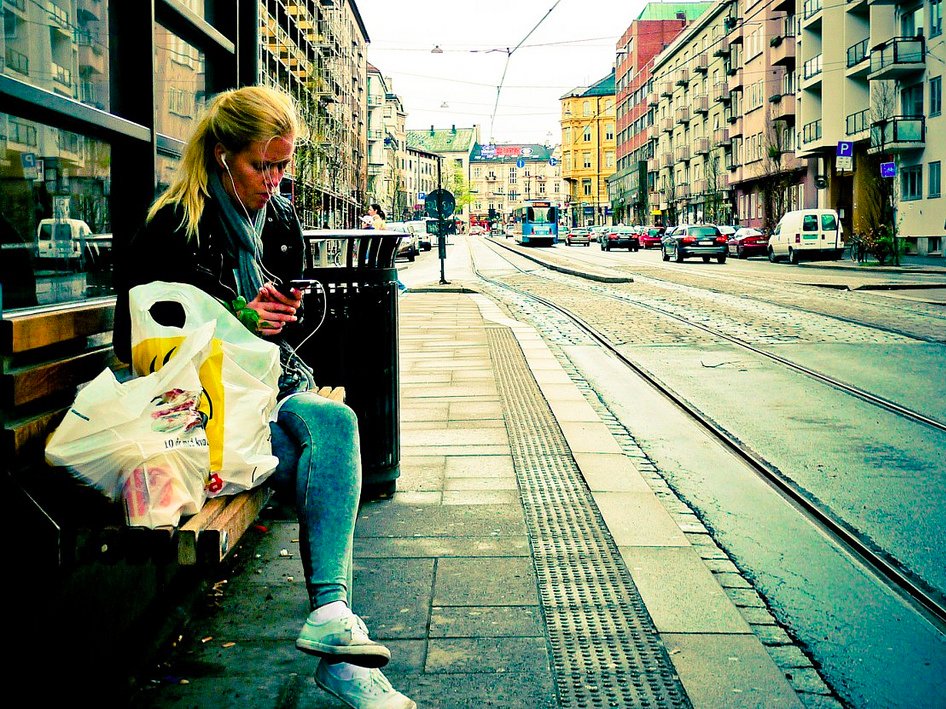
So in my opinion, you should spend 1-2 days here is enough, you should still focus on discovering other beautiful places in Norway. A perfect Norway travel itinerary will including 1 day for Oslo capital, 1 day for Trolltunga (Devil’s Tongue) and 2 days to exploring Bergen city. When I haven’t traveled to Oslo, I think Helsinki is boring, there’s nothing to play or see there. But when I went to Norway and saw it, well, there was also Oslo city, too :)). But in short, when you have come here, you also need to know how to travel, where to go and what to do… Right?!! Let’s get started!
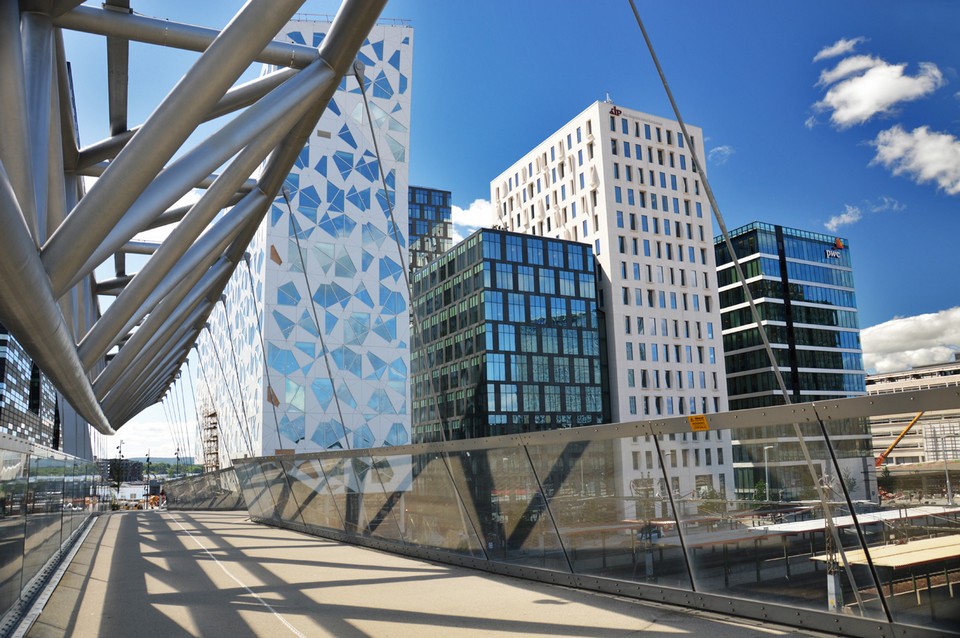
Oslo blog: When to visit?
The weather and climate in Oslo are like many other cities in Northern Europe with very cold winters and cool, pleasant summers. The best time to come here is from June to September during summer season with pleasant weather, the average temperature is about 20 degrees Celsius. The sunshine time is long and the sunset time last until 10 pm. So, it is very suitable for sightseeing and outdoor activities.

Late October to early November, snow starts to fall. During the period from November to January, sunny hours are very short, it usually starts at 10am and get dark at 3pm or 4pm and most of times are rainy and snowy days. This time is more suitable for visiting museums.
In March, the sunshine duration lasting longer which is suitable for some ice sports such as skiing, snowboarding, etc. Late March and early April, the snow will begin to melt and spring begins in May.
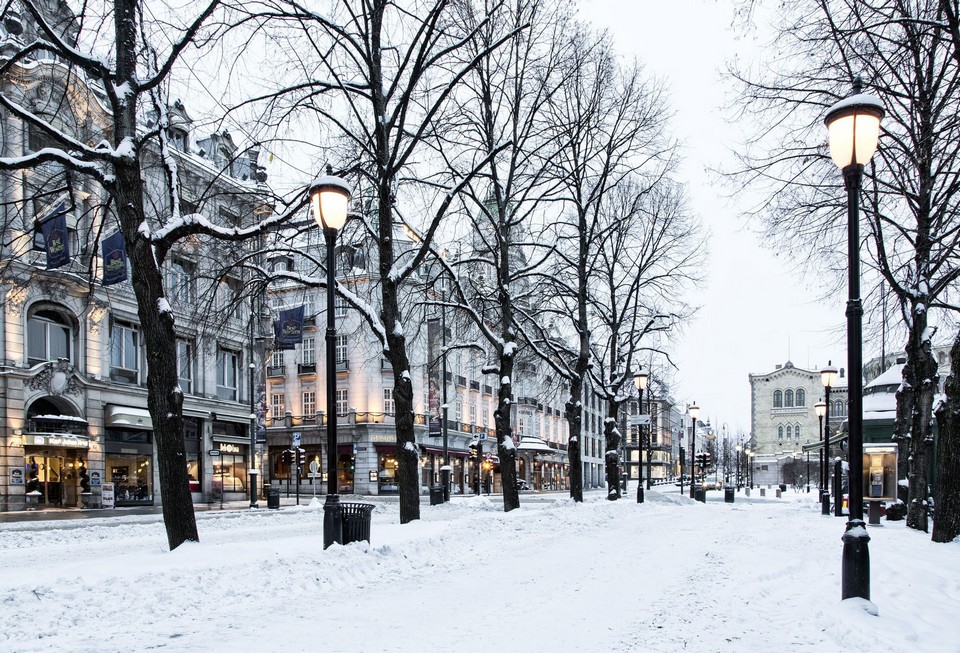
If you want to participate in winter outdoor activities like skiing or ice skating, you can also visit Oslo in winter which starts from December to March every year.
Oslo travel guide: How to get to Oslo?
From Vietnam and other Southeast Asian countries, there are many international flights such as Aeroflot, Emirates, Qatar Airways, Singapore Airlines, Cathay Airways… can take you to Norway with a quite convenient route, you only have to transit once.
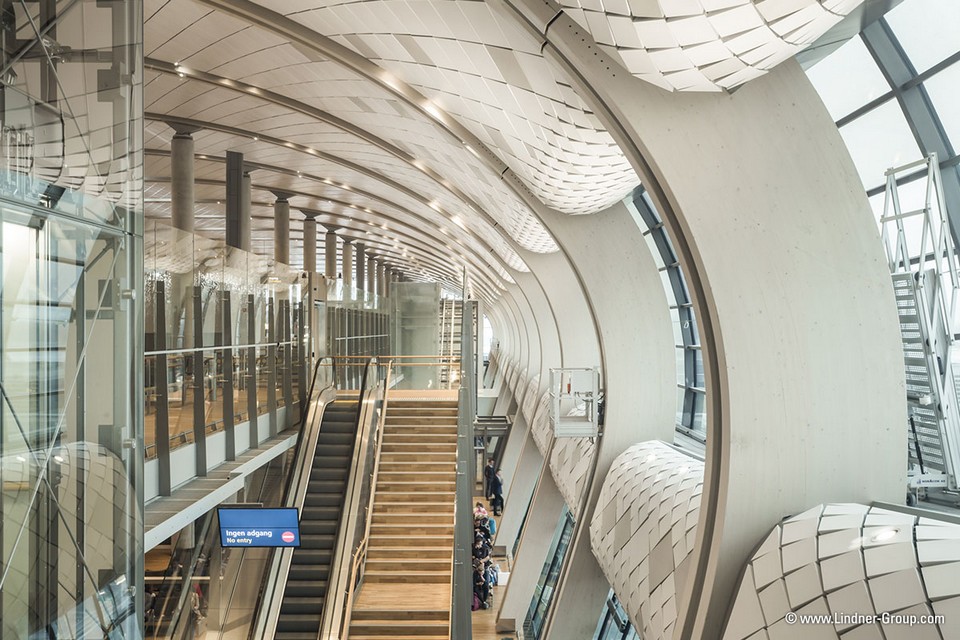
Getting from the airport to the city center of Oslo
Oslo Airport is located in Gardermoen, 35 km (22 miles) to the northeast of Oslo. The cheapest way is to take NSB train. From Oslo Airport (OSL), you should take a normal train to Oslo S (Oslo Central Station). Ticket price is 101 kroner / adult, valid within 2.5 hours. You can take the trains with R10 symbol for Drammen direction, R11 for Skien direction and L12 for Kongsberg direction. Details of train departure times can be found HERE .
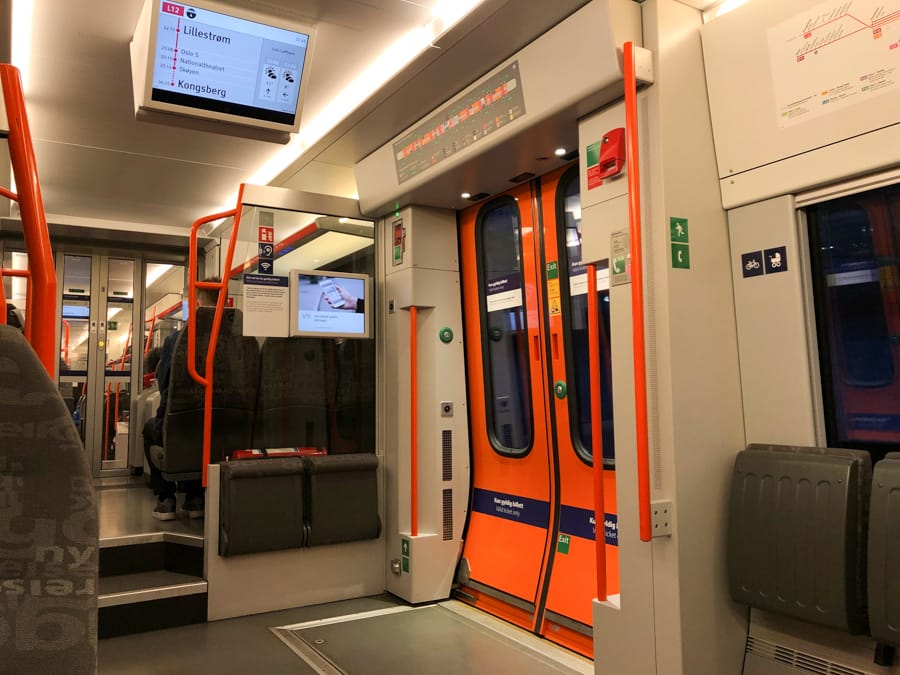
Children and the elderly (4-15 years old or over 67 years old) off 50%, students off 25%. If you stay far from the center you can use this ticket to continue moving to the hotel if still within the valid time of the ticket. Please do not take the Flytoget train (the Airport Express Train), the fare is much more expensive with €20 /one-way.
Norway in particular and other European countries in general have a convenient public transport system and well connected. In addition getting here by air, from neighboring countries you can reach Norway by boat. Due to being part of Scandinavian peninsula, Norway has a fairly long coastline with many large ports with ferries and cruise ships connecting countries in the same region which is convenient for tourists to getting here by boat. You can refer to some direct ferries from Copenhaghen, UK, and other Nordic countries to Oslo here .

Oslo travel blog: Getting around Oslo
Getting around in Oslo city center. Below are types of tickets you should consider to buy to traveling around Oslo as well as Norway.
Oslo Hop On – Hop Off Sightseeing Bus 24h
Ticket price: €36 / 24h
There is only one ticket type for this time frame. With this ticket you can reach up to 18 points in the city and 1 trip every 30 minutes.
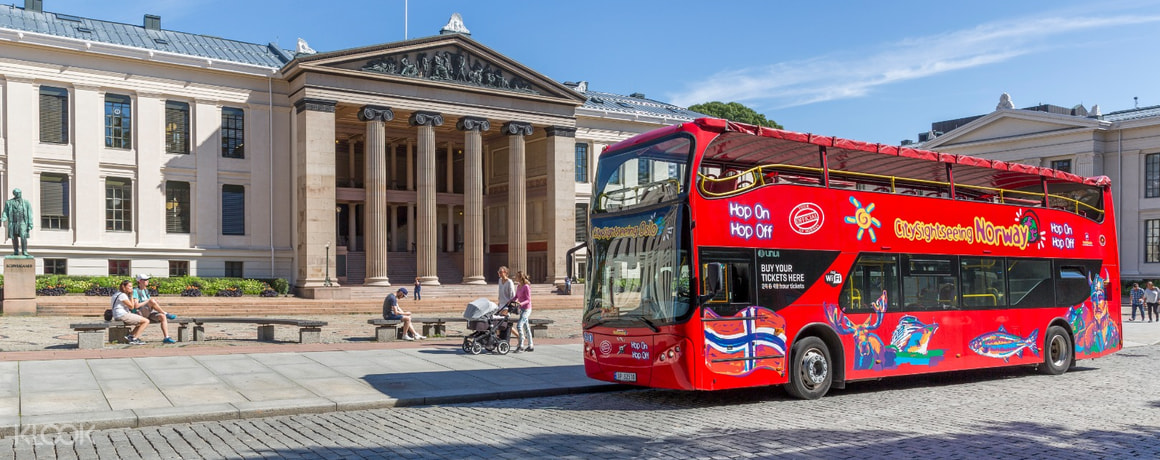
- Oslo City Sightseeing Hop-On Hop-Off Bus Pass
With this ticket, you can travel within Zone 1 and Zone 2 of Oslo and get free admission at most attractions. Note: Not applicable for airport-city center route.
Ticket price:
- €45 / 24h (starting from 2019 this price takes effect).
- €66 / 48h for adult.
Child tickets (6-15 years old) are half the price above and seniors over 67 are equivalent to €36 and €52. (Remember to bring personal proof papers if you are eligible for a discount). I find this pass is quite cheap compared to the neighboring Denmark.
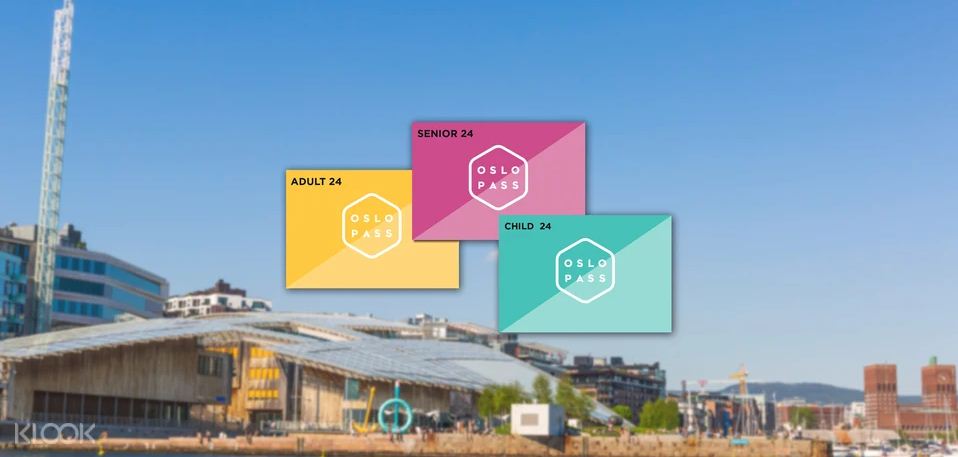
Buy Oslo Pass in advance here.
Public transport when traveling in Norway
If you buy single tickets or daily tickets to travel by public transport (tram, train, bus…), you should download the RuterBillett app ( iOS , Android ) to buy tickets. You refer to the price list below and note that the price does not apply to ferry to get to Bygdøy Island.
Single ticket pre-bought (free transfer / return within 1 hour) Adult NOK 35 = €3.5 (you use rate: NOK 10 = €1 for easy calculation) Child / senior: NOK 18
Single ticket, bought from driver (free transfer / return within 1 hour) Adult: NOK 55 Child / senior: NOK 28
24-hour ticket (flexible start time, non-personal ticket) Adult: NOK 105 Child / senior: NOK 53
7-day ticket (flexible start date, non-personal ticket) Adult: NOK 249 Child / youth / senior: NOK 125
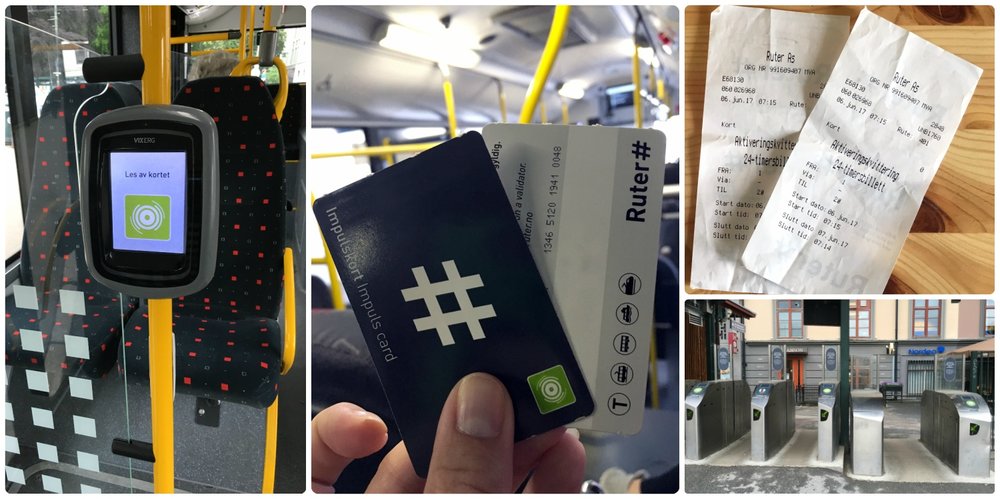
In short, traveling in Oslo is quite expensive. Particularly, the cost for the airport-hotel route is about 20 Euros, adding a daily ticket if you choose a day ticket is about 10 Euros and for Oslo pass it is 41 Euros.
In addition, you can get around Oslo by ferry. All information about timetables, routes, tickets… can be found here .
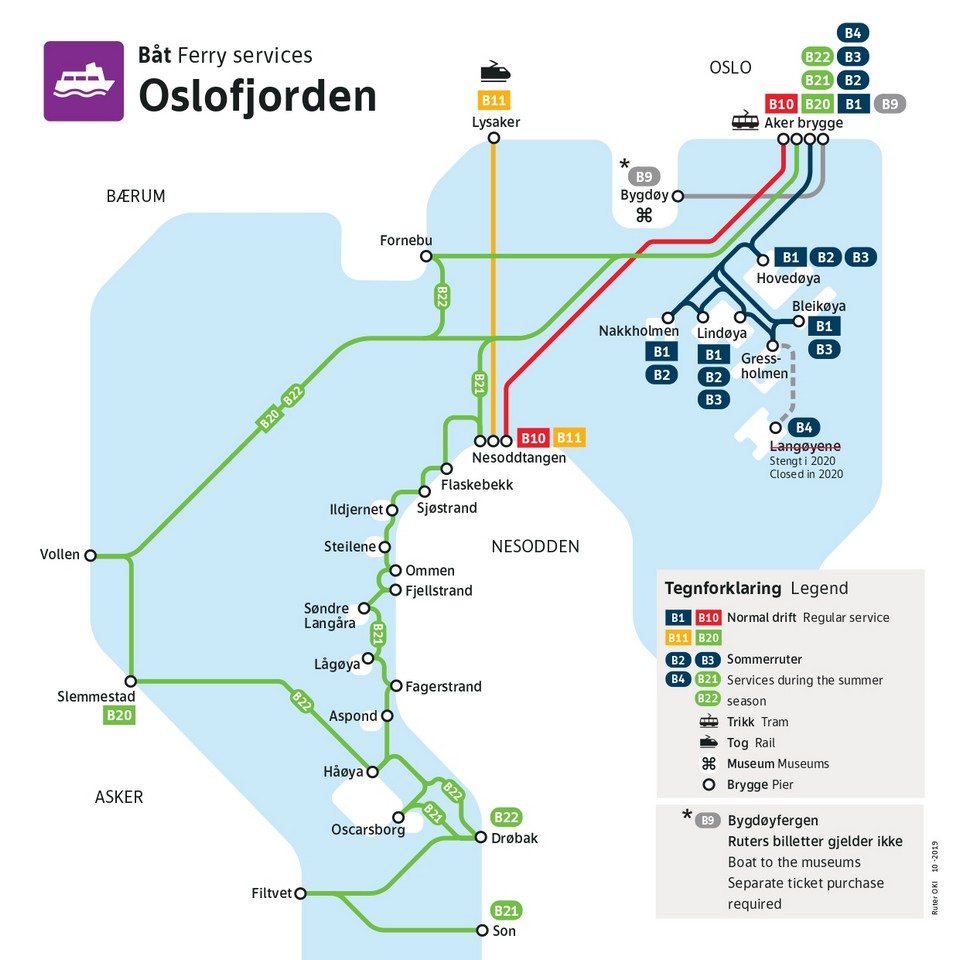
Oslo travel blog: What to do and where to go?
Vigeland sculpture park.
Vigeland Sculpture Park (Vigeland Nudist Park) (Norwegian: Vigelandsparken) is one of the places that attracts the most tourists in Oslo with more than 1 million visitors annually. This is a famous sculpture park was established in 1939-1949 with 212 sculptures in bronze, granite and cast iron created by Gustav Vigeland and are placed along the 850 meter long avenue of Frogner Park.
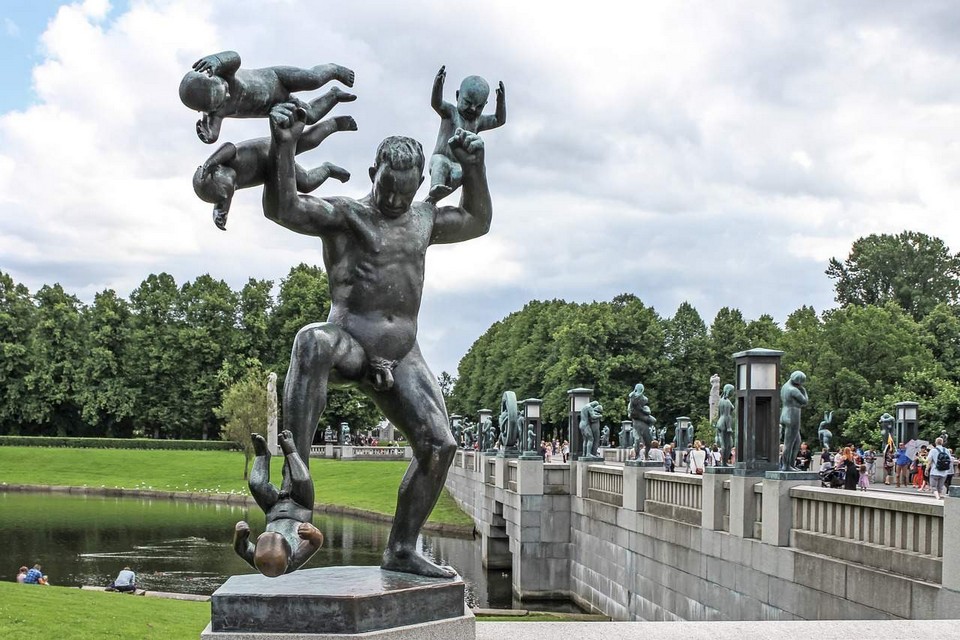
One of the most famous sculptures in Vigelandsparken is the Monolith work. This is a “Human Tower” over 14 meters high and was carved from just one single granite block. The tower consists of 121 human figures arranged from foot to top.
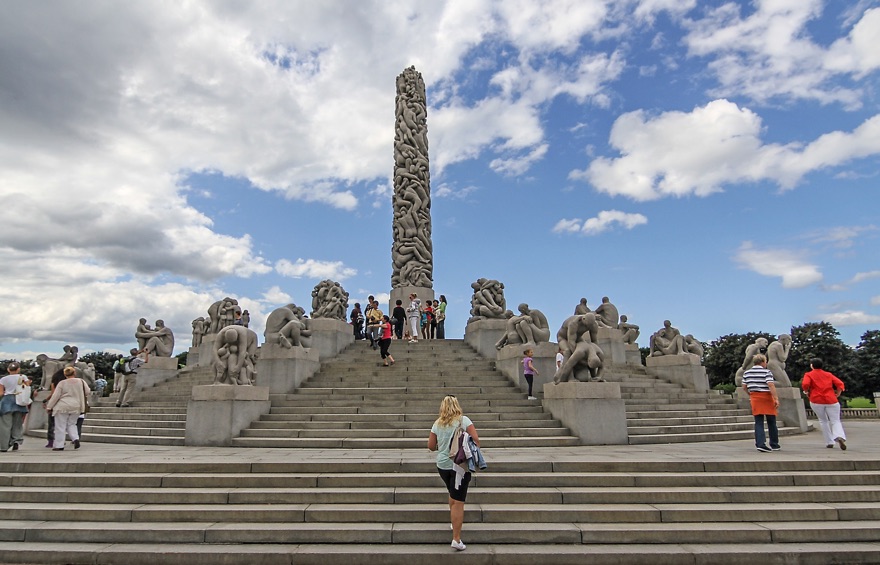
In addition, there is an Angry Boy statue with one-legged standing. Any visitor who comes here will rub and hold his hand as if to comfort him … to lessen his anger :), so that his left hand is much more shiny.
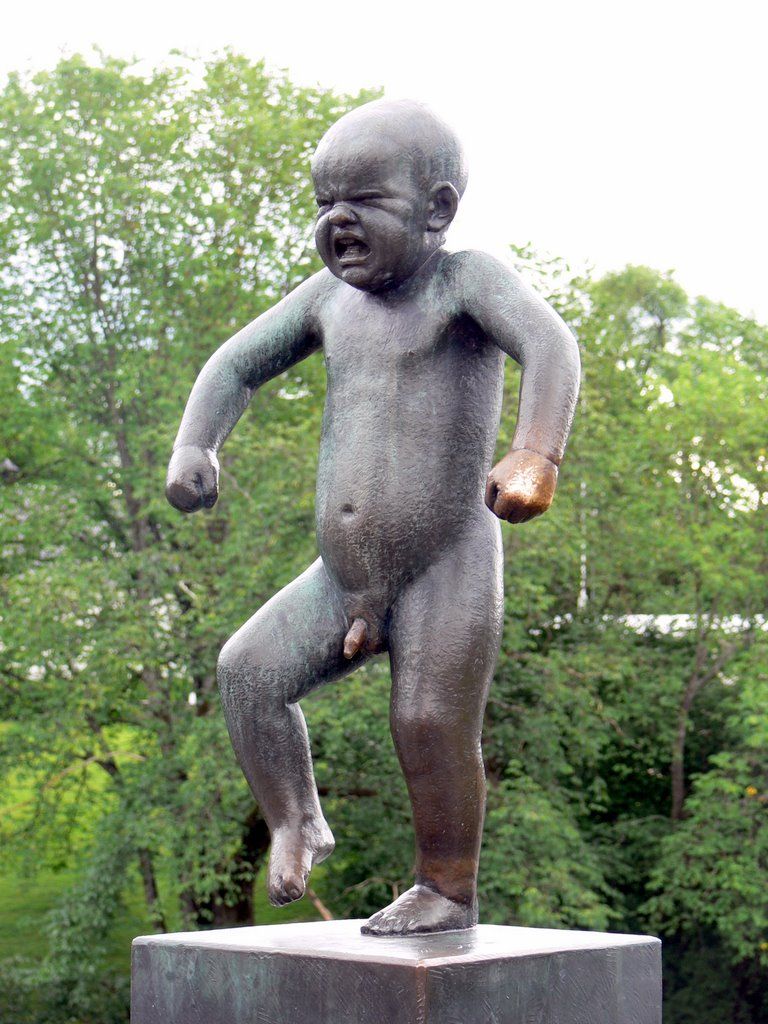
The fountain is also one of the park’s notable stops which surrounded by 20 statues that representing different stages in human life from childhood to death.
You can also visit the Vigeland Museum, the designer studio with plaster mold castings, a 5-minute walk from the park. I am quite impressed with this park, perhaps this is one of the places I like the most when traveling to Oslo.
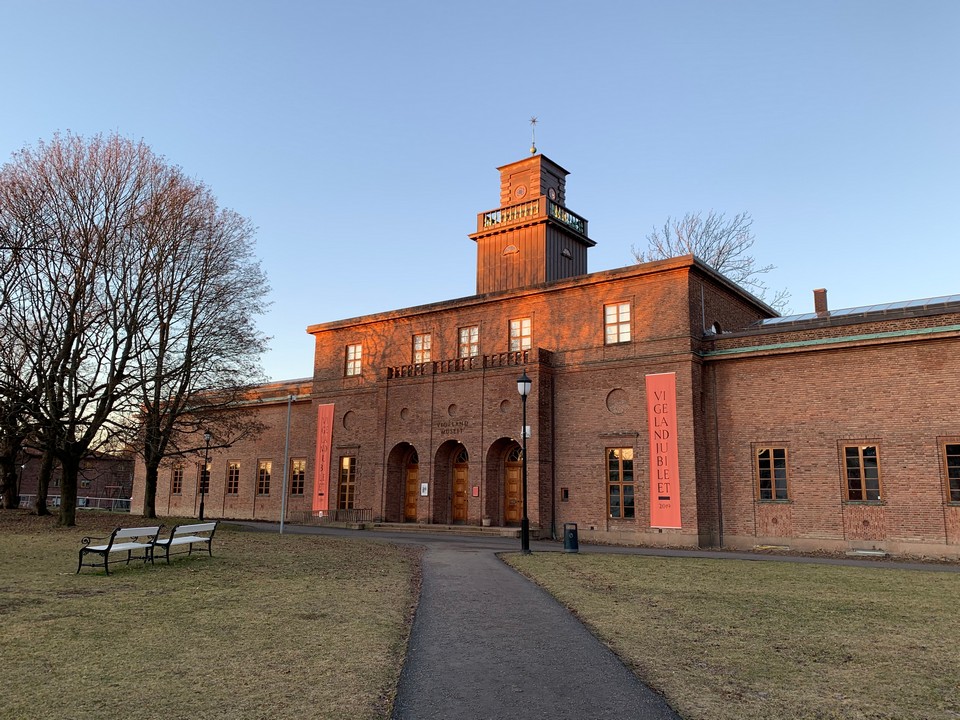
Located in: Frogner Park Address: Nobels gate 32, 0268 Oslo, Norway Opened: 1907 Hours: Open 24 hours Admission: Free
Akershus Castle
The castle (also a fortress) was built in 1299, used to the residence of the Norwegian royal family, then the castle became a fortress in 1592, and was rebuilt as a Renaissance castle in 1637-1648.
Akershus consists of several large halls, the Akershus church and the Royal Mausoleum, the government’s reception rooms and the halls where the banquets are held. The small historic church at Akershus castle is now the royal grave of Norway.
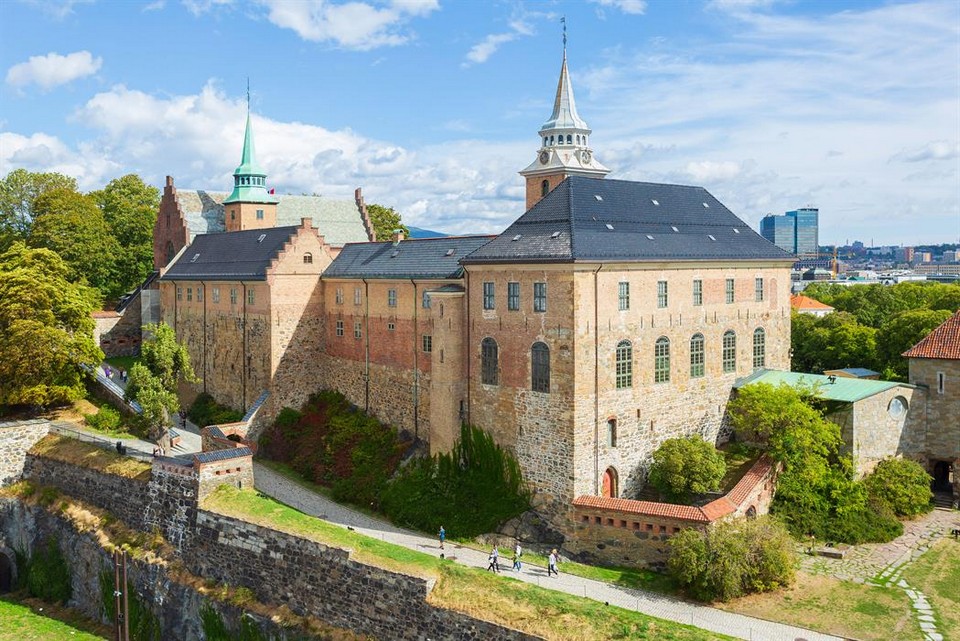
Address: 0150 Oslo, Norway Opened: 1300 Hours: 6AM–9PM Architectural style: Medieval architecture
The Norwegian Opera and Ballet
The Oslo Opera House is the largest cultural center built in Norway since the beginning of the 14th century. The theater has three stages and more than 1,000 rooms.
The building’s standout design feature is the roof that slopes up from the water of the Oslo Fjord. The roof is also a walkable public plaza. In summer, there are many people sunbathing and picnic on its rooftop.
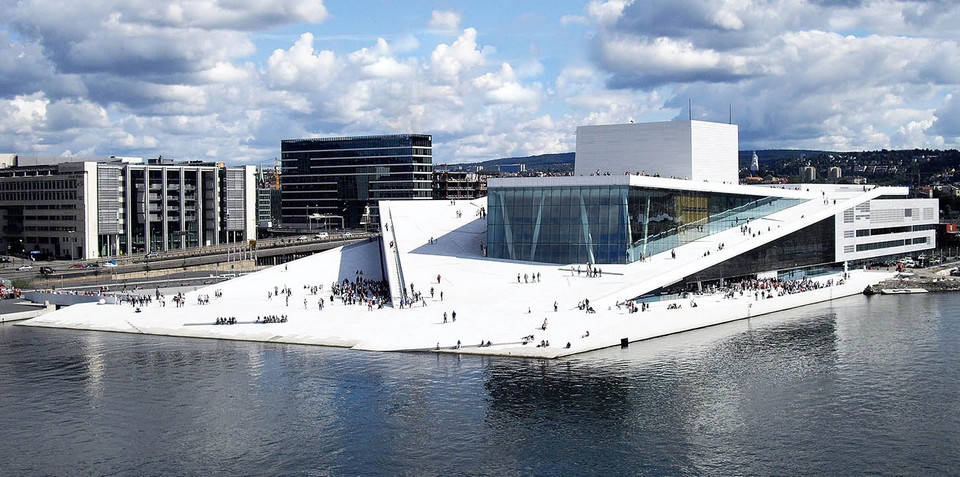
This theater is located right next to the coast, so the view is also very beautiful, but it is located close to the Oslo central station, so it is also very convenient to travel. Ticket prices vary depending on the types of shows, but if you want to buy a short time tour with the guide, the price is the same as I mentioned below.
Address: Kirsten Flagstads Pl. 1, Oslo 0150, Norway Opened: April 12, 2008 Capacity: 1,400 Opening hours: 10:00 AM – 8:00 PM Admission fee: €10 / adult; €6 / child or student.
Det kongelige Slott (The Royal Palace)
The Norwegian Royal Palace is where the King and Queen live and was built in the early 19th century.
You can witness the Changing of the Guard ceremony when the palace guards finish their duty and the new guards take over their positions at 1:30pm everyday and last for about 40 minutes.
During summer, the palace is open to guided tours at the same fare mentioned below. If not, you just looking and walking around the royal park right there is enough. The park is extremely large and is considered as the largest public park in the city of Oslo. The Norwegian Royal Palace and its park are also considered one of the must-visit places in Oslo.
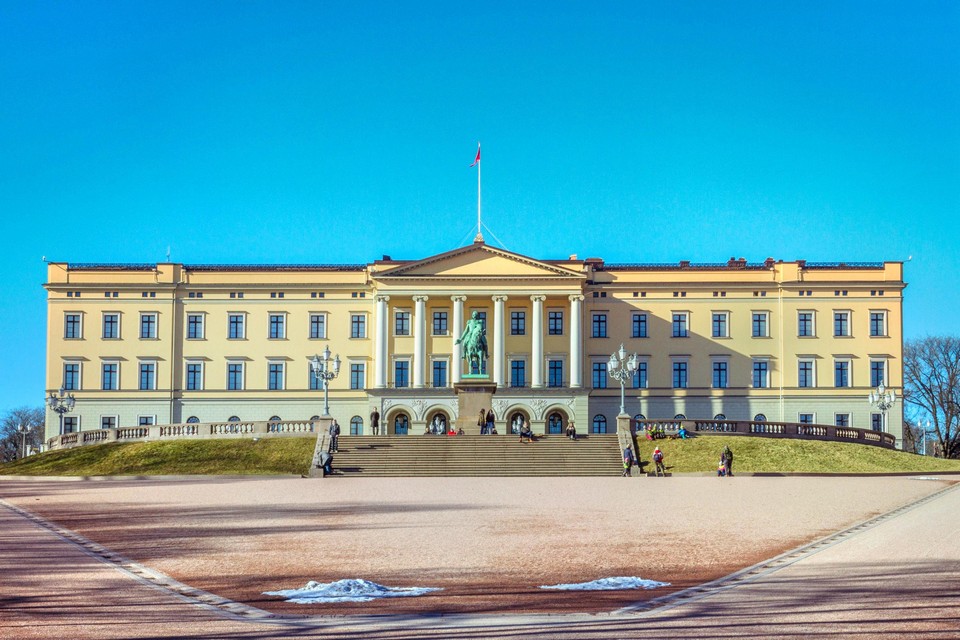
Address: Slottsplassen 1, 0010 Oslo, Norway Opened: July 26, 1849 Construction started: 1825 Architectural style: Neoclassical architecture Architect: Hans Linstow Admission fee: €10 / adult; €9 / Children
Karl Johans gate (Karl Johan Street)
This is the main shopping street in the capital of Oslo with a length of 1.02km, mainly focused on branded shops, souvenir shops, cafes etc … You just need to strolling along the street to know more about the city. If you are a shopping lover with abundant budget can drop by branded shops to freely shopping.
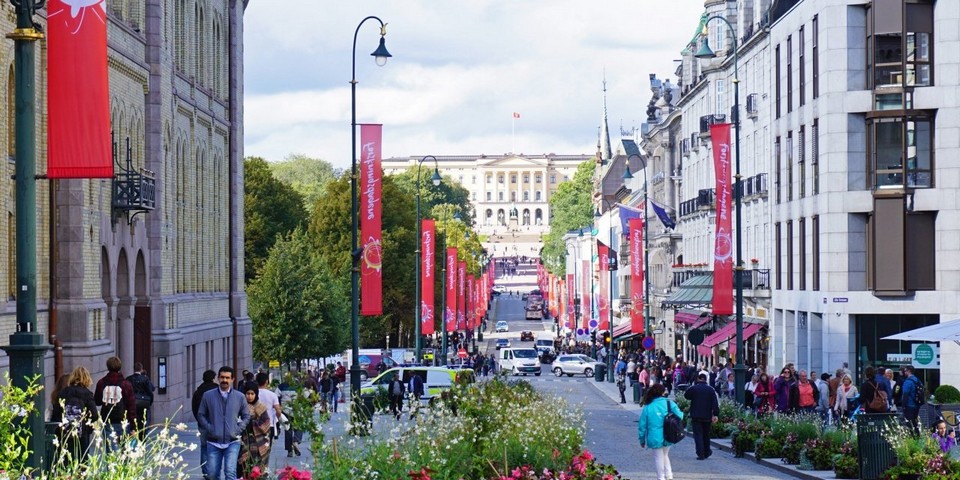
Viking Ship Museum
Viking pirates used to lay down the law in Europe in Middle Ages are terrifying for many people. Coming to this museum you will see the Viking ancient ships which were built more than 1000 years ago, these are long and narrow ships with a length of more than 20 meters, used to for long journeys with masts about 20 meters high. There is a total of 5 Viking ships intact and some are under restored. In addition to boats, the museum also displays items such as clothing, weapons, hats and jewelry, and other household items.
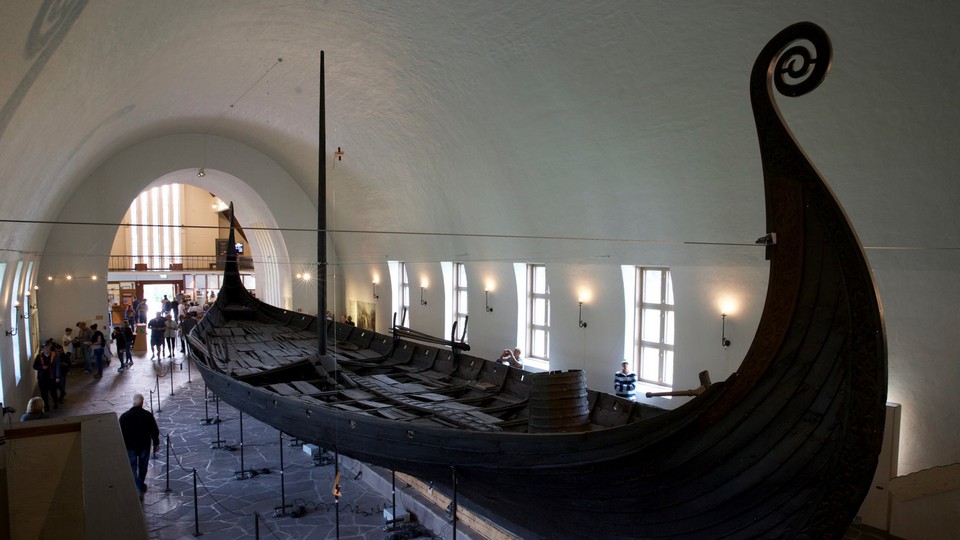
- Oslo City and Viking Ship Museum Private Walking Tour
The museum is a large hall, specifically designed to display three ships from 9th century: the Gokstad, the Tune and the Oseberg. These three ships were found in the 12th century in southern Norway.
Address: Huk Aveny 35, 0287 Oslo, Norway Opened: 1926 Architect: Arnstein Arneberg
The Fram Polarship Museum
The Fram Museum is home to recreate one of the most dangerous expeditions in the history of steam or sail ships. In the museum, the Fram is the central and strongest wooden ship ever made by the Nowaygeian to bring explorer Roald Amundsen to the Antarctica and where he discovered the South Pole.
From 1893 to 1912, the ship Fram took part in three major expeditions to both polar regions. Currently, around the three floors of the ship are artifacts from those expeditions.
The museum is located on the Bygdøy Peninsula and you can easily reach by bus from the center of Oslo (The bus number 30 minutes and takes 20 minutes, every 10 minutes with a trip) or in summer by boat from the port in front of the city hall (1 trip every 20 minutes and travel time is about 10 minutes).
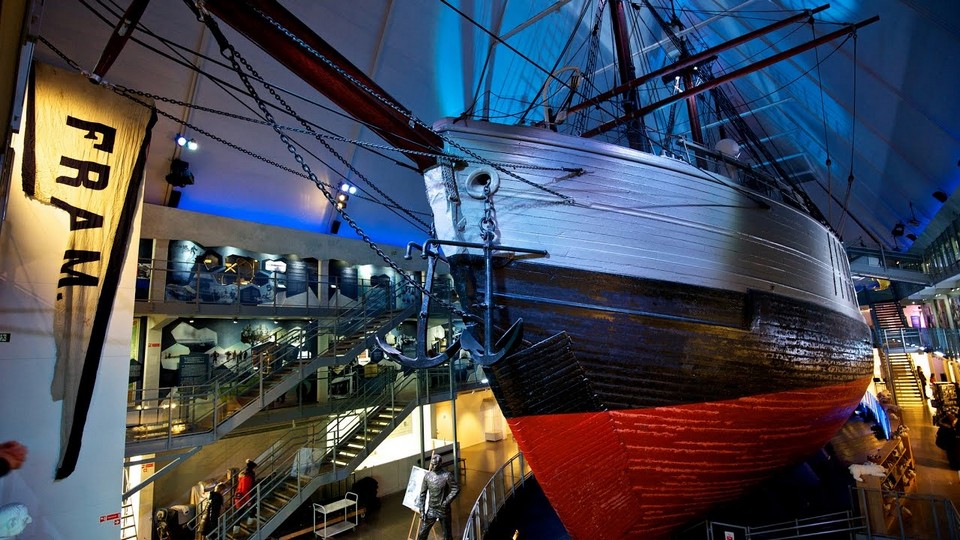
Oslo Fram Museum and Kon-Tiki Museum Private Tour
Address: Bygdøynesveien 39, 0286 Oslo, Norway Established: May 20, 1936 Opening hours: 10:00 AM – 5:00 PM Admission fee: €13
There are also many other museums around such as the Kon-Tiki Museum , the Norwegian Maritime Museum , The Viking Ship Museum , Norwegian Folk Museum is about 15-minute walk away from there. If you have a Oslo Pass, you can freely visit without worrying about the fares. For me personally, this is the most beautiful museum among the museums I have visited while traveling to Oslo, Norway.
Nobel Peace Center
Everyone knows that the annual Nobel Prize is awarded in the capital of Stockholm, Sweden. But did you know that only the Nobel Peace Prize is awarded in Oslo? This center displays artifacts related to the settlement of war, peace and conflicts in Norway as well as abroad.
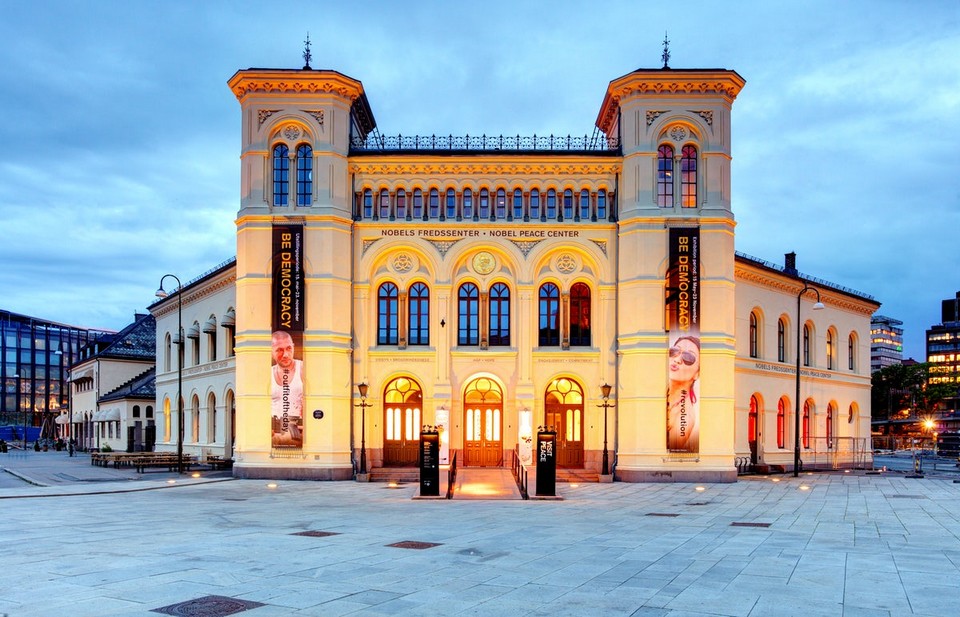
Admission is 120 kroner (it’s free if you have Oslo Pass), but if you’re just walking outside it’s free, of course. In front of the building is a fairly spacious plaza overlooking the Oslo harbour and ferry terminal, perfect for… check-in photo taking!
Address: Brynjulf Bulls plass 1, 0250 Oslo, Norway Hours: Saturday; Sunday: 10AM–5PM
Rådhuset (Oslo City Hall)
Oslo City Hall is similar in architecture to Stockholm city hall and is another free place to visit in the city!
Inside, the walls are decorated with paintings in the style of the first half of the twentieth century with the content about the culture and life of the Norwegian people. Alternatively, you can also visit the other rooms inside Rådhuset.
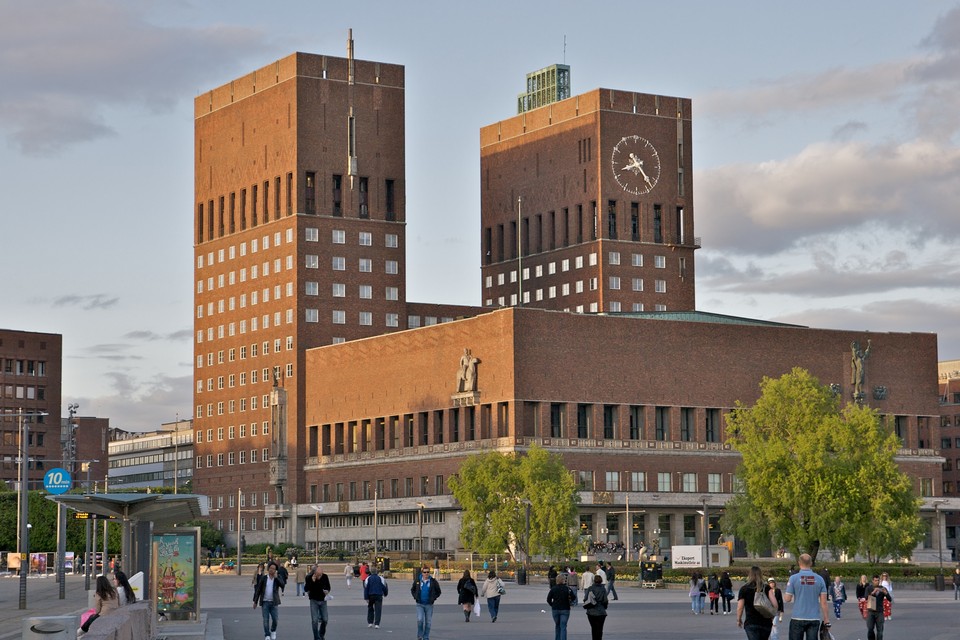
Address: Rådhusplassen 1, 0037 Oslo, Norway Hours: 9AM–4PM Construction started: 1931
Oslo Domkirke (Oslo Cathedral)
Norwegian people in particular and Northern Europe in general are mostly atheists, or if they do follow the Lutheran lineage, so the church here is not as majestic as in the south (France, Italy, Spain …). The Oslo Domkirke is the cathedral in Oslo, but on the outside it is very modest, no one knows it is the cathedral!
In the summer of 2011, after the terrible massacre on the island of Utøya performed by Breivik (Norwegian), the entire church seemed to be covered with roses to commemorating the dead.
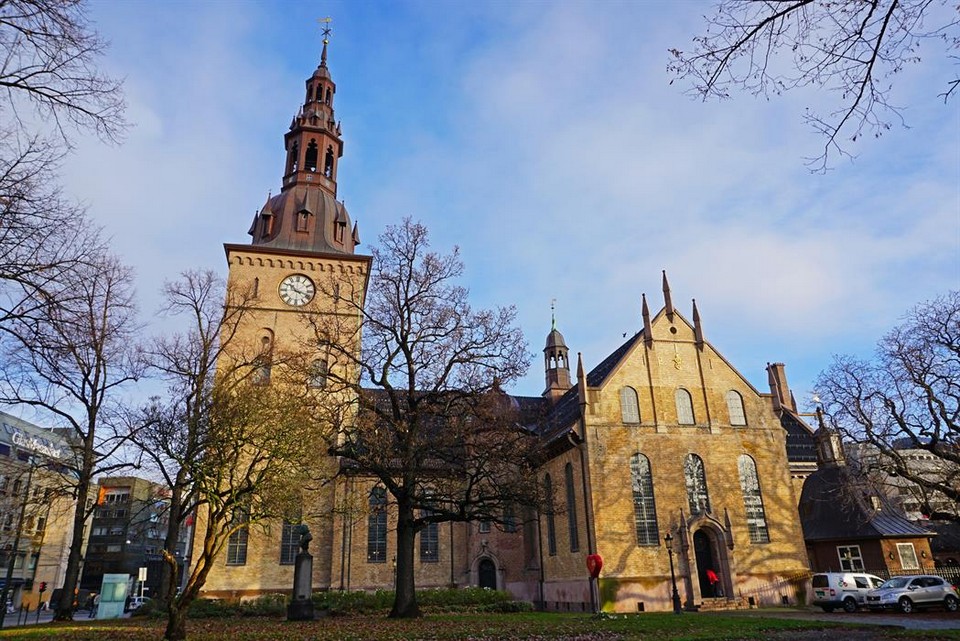
Behind the church is Basarhallene (The bazaar halls) with very beautiful arched architecture. The houses here are now cafes, shops for antiques and handicrafts.
Address: Karl Johans gate 11, 0154 Oslo, Norway Architectural style: Baroque architecture
Damstredet & Telthusbakken
These are 2 streets located close to each other in the Gamle Aker area. The special feature in these two streets is the wooden houses and brick houses dating from the 18th century bearing the Nordic traditional house style. Telthusbakken street is a bit steep (bakken means steep hill) but the street is longer and more houses.
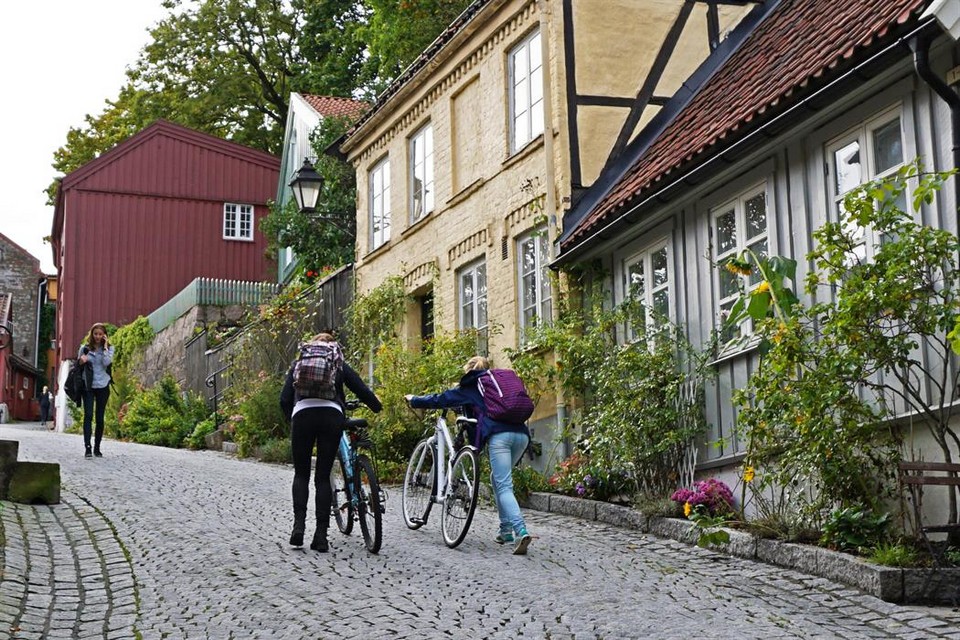
Also, from Telthusbakken you can look up Google Maps to get to Kjærlighetsstien – The Love Trail. This is a short walk street, I saw the pictures on the internet and found it quite beautiful and also romantic. Maybe that’s why it got a name like this ?!
Address: Damstredet 4A, 0177 Oslo, Norway Hours: Open 24 hours
Holmenkollen
Holmenkollen Ski Jump can be seen from every corner of Oslo. You can walk to visit the Ski Jump Museum (the oldest ski museum in the world) if you want to learn more about this seemingly crazy sport. Ski Jump Holmenkollen is 60 meters high and has room for around 70,000 spectators (Norwegians love winter sports!).
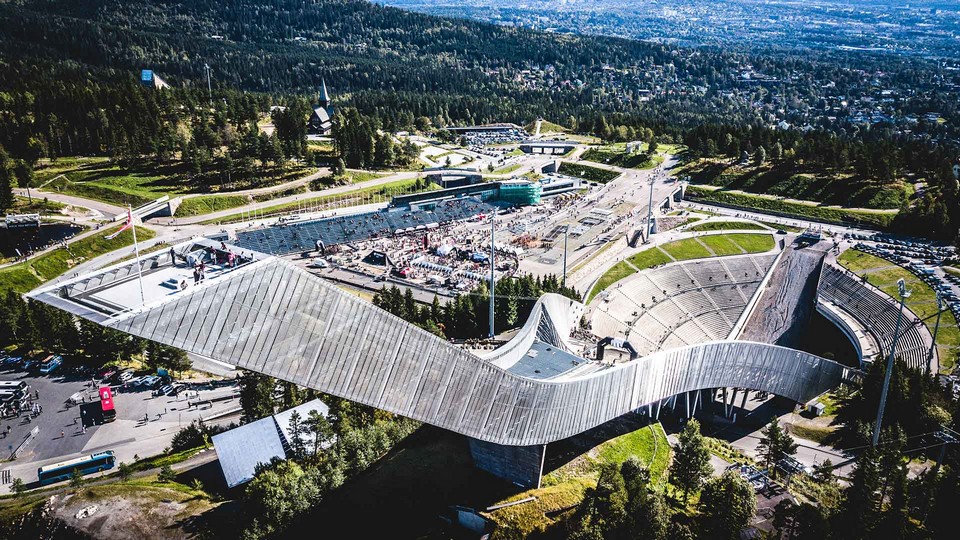
From here, you can also walk to Nordmarka for hiking. It’s a forested area in the north of Oslo, with hiking and cycling trails.
Oslo blog: Shopping in Oslo
Aker brygge.
Previously, Aker Brygge was a very large shipyard in Norway. From 1982 until today, it has “turned” into a bustling entertainment and shopping area. This place attracts about 12 million visitors each year. They come here to shop for fashion items, jewelry, hair salon, photography, dining …
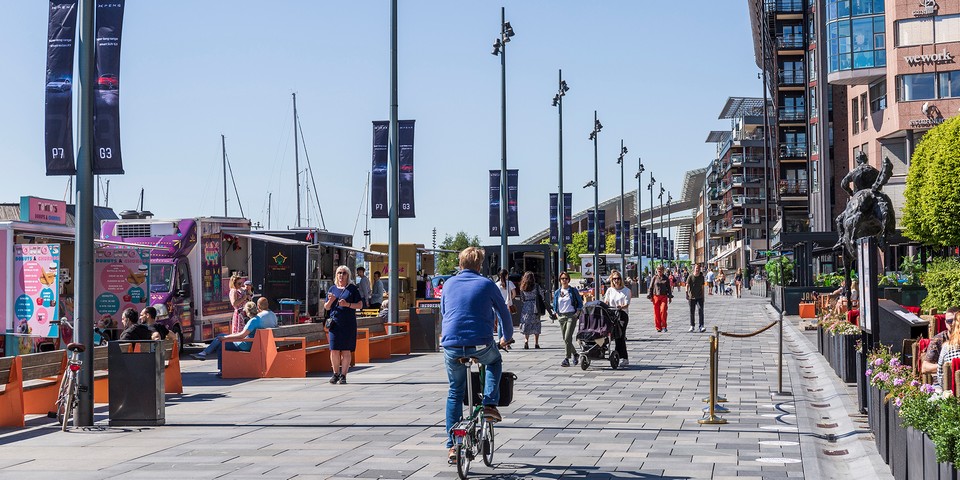
At various times of the year, the Aker Brygge area hosts large-scale public events such as the Midsummer celebration or the Oslo Wine Festival. You can follow, update information and planning your trip during such festivals.
You can buy lovely products as souvenirs such as: key chains, t-shirts, ..
Oslo travel blog: How much you will spend for a Oslo trip?
The mid-range cost when solo traveling to Oslo, you can refer to as follows:
- Traveling cost from the airport to Oslo city center: €20
- Traveling cost in the city of Oslo: €20 / 2 days
- Hotel in Oslo: €80 / 2 nights
- Meals: €70 / 2 days
- Total: €190 / 2 days excluding the entrance tickets of the attractions.
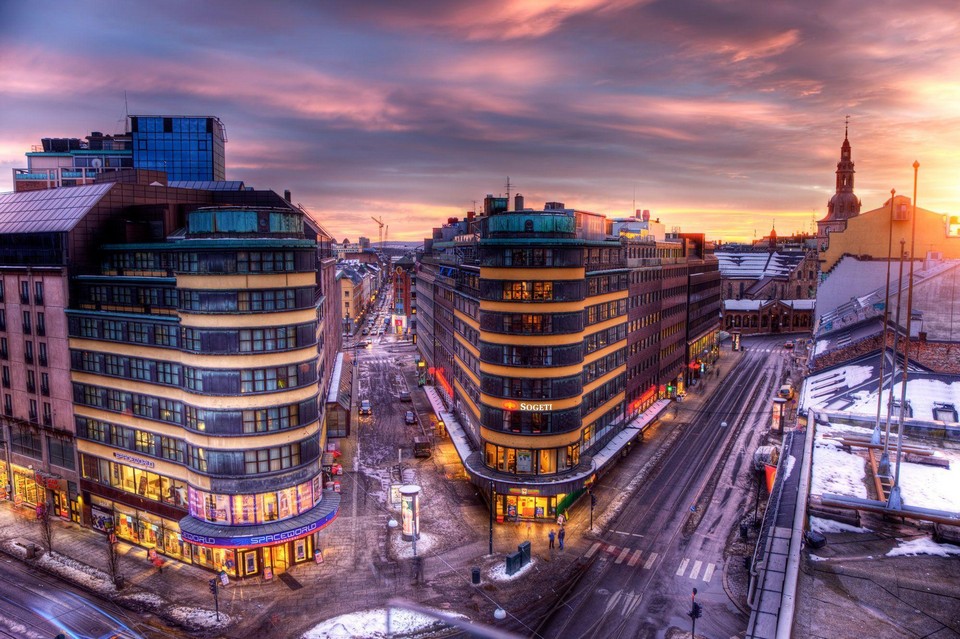
- Norwegian people are friendly, speak English well.
- Like other Nordic countries, Norwegian architecture is simple, not too massive and majestic.
- The cost of traveling and eating when traveling to Norway is quite expensive.
Oslo blog: What to eat?
Tip to eat cheap.
To save money, it is best to rent an apartment with a convenient kitchen and then go to the supermarket to buy food and prepare breakfast for yourself. The supermarket in Norway is quite similar to Denmark and slightly different from the rest of Europe because there is no Lidl chain. Here the cheapest supermarket is Rema 1000 then Kiwi. If you stay in Airbnb or other accommodation types with kitchen, remember the order of supermarkets in Norway from cheap to expensive as follows: Rema 1000 – Kiwi – Coop – Spar – Meny. In addition, the Rema 1000 has a very delicious salad bar, priced at only 15 kroner / 100g.

I see that the food prices here are the same as those of Denmark, Sweden. So in general, if you know how to shop economically, you can still get it, for example fruit: €2-4 /1 kg, sweet bread €0.5-2, pizza about €3-5, a box of grilled chicken or other Bacon costs €2-5. I often buy them for breakfast and side meals.
At noon, I have a habit of visiting a restaurant near the place I am visiting, so I rarely note what the restaurant name. Generally, cheapest foods maybe are pizza, kebab, normally the minimum price for a meal is €12.
Rakfisk (Norwegian fermented fish)
This dish is made from trout or char, salted and fermented in water for two to 3 months, or even up to a year. To prepare this dish, fish will filter out all the bones, leaving only the fish meat, then salted for a few days and then dried. Until the fish is dried and smell, it is soaked in alkaline solution to create a specific viscosity and flavor.

Rakfisk is often eaten without cooking and has a mild and slightly salty flavor and strong smell or it also served with cooked butter, potatoes or dried peas and sliced bread will make you remember forever. I ate this dish once and it really tastes bad, so terrible. I don’t know how to describe it. But true to the name of fermented fish. But this dish is very proud of Norwegian cuisine.
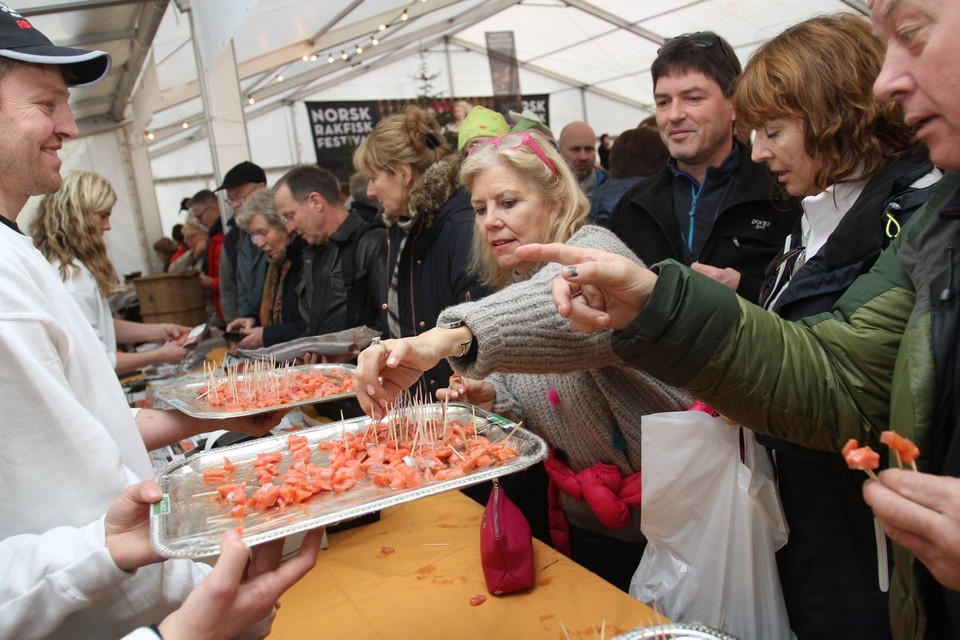
It is a traditional dish of the Oslo people in particular and the Norwegians in general. At first, visitors will find it difficult to eat, but full of excitement and curiosity. The sincere advice for you is to boldly taste this dish once. Make sure its taste will quickly defeat the initial fear as its name.
Some other dishes you should try in Oslo: Smoked Salmon or Røkt Laks ; Tørrfisk ; Kjøttboller (meatballs); Fårikål (mutton stew); Krumkake (paper-thin rolls of a waffle, filled with whipped cream or any other desired filling); Pinnekjøtt (lamb-based dish); Smalahove (sheep’s head); Akevitt (Norway’s national drink).
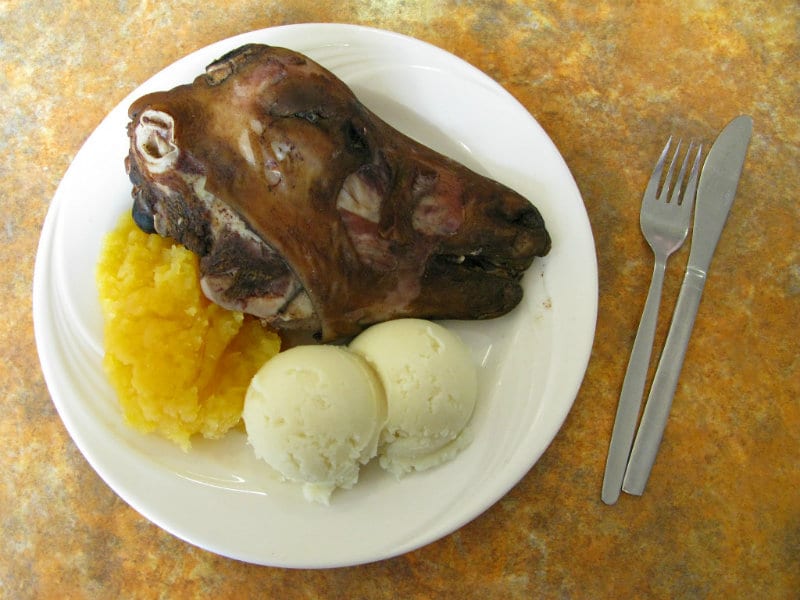
Where to stay?
During my trip, I chose to stay at Central City Apartments for €78 / 1 night. I feel quite ok, about 15 minutes walk from the center of Oslo, clean room with full kitchen and cooking utensils. Generally speaking, traveling in one of Europe’s most expensive cities and finding a room like this is too good. (You can check rates, reviews and book on Agoda.com or Booking.com ).

Below we recommend more best cheap, budget, mid-range and upscale hotels with good ratings and reviews you can refer to.
- Radisson Blu Plaza Hotel , a top rated 4-star hotel with room rates from $152/night (Check rates on Agoda.com or Booking.com ).
- Thon Hotel Rosenkrantz Oslo , a top rated 4-star hotel with room rates from $188/night (Check rates on Agoda.com or Booking.com ).
- Thon Hotel Opera , a top rated 4-star hotel with room rates from $188/night (Check rates on Agoda.com or Booking.com ).
- Hotel Bristol , a top rated 5-star hotel with room rates from $200/night (Check rates on Agoda.com or Booking.com ).
- Saga Hotel Oslo , a top rated 3-star hotel with room rates from $137/night (Check rates on Agoda.com or Booking.com ).
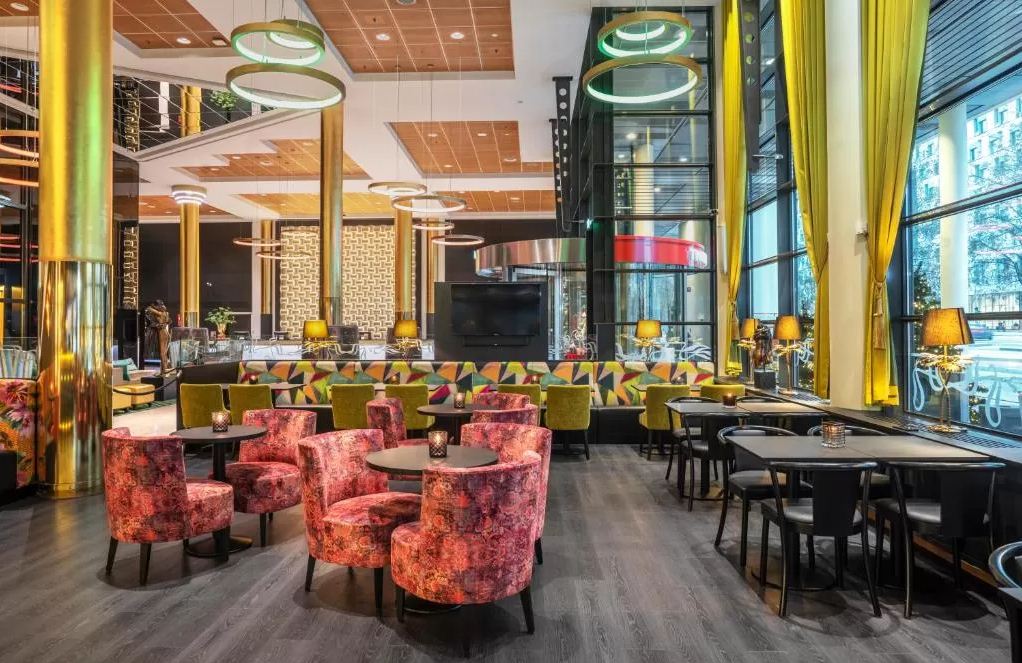
The hotel here is definitely not cheap at all. You can check carefully at Booking.com or Agoda.com before booking. I still prefer a place with a kitchen when going to expensive countries like Norway.
Oslo travel blog: Some best day tours, trips, activities and transfer services, tickets in, from and to Oslo you can refer to
- The Viking Planet Digital Museum Ticket in Oslo
- Oslo City Highlights Walking Tour
- Oslo Must-Sees Walking Tour
- Oslo Fjord 2-Hour Sightseeing Cruise
- Oslo Off the Beaten Path Bike Tour
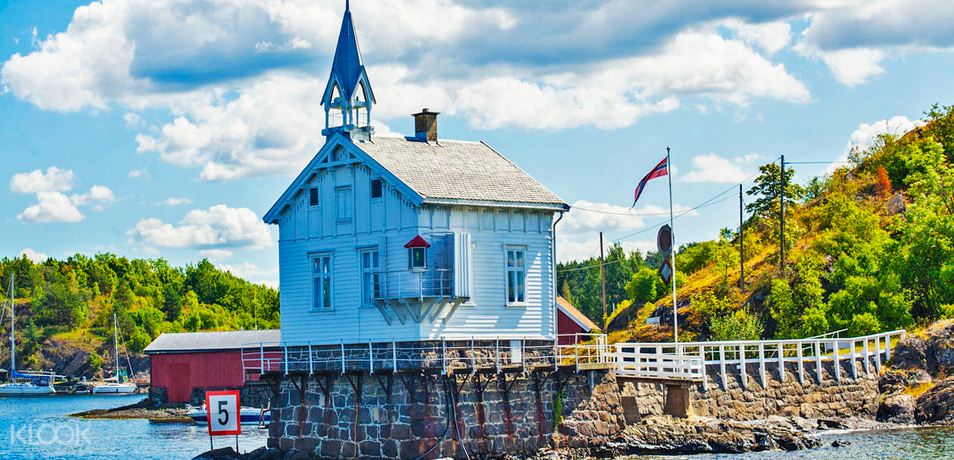
Are you looking for more top things to do in Oslo: Tours, activities, attractions and other things? Let’s check it out here.
Related articles
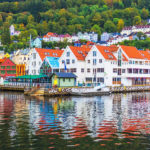
RELATED ARTICLES MORE FROM AUTHOR
Jr rail pass guide. all things you need to know, how to buy, how to use along with japan rail pass faqs, where to go & what to do in varanasi — 15+ places to visit & best things to do in varanasi, what to buy in indonesia — top +9 famous gifts, souvenirs & best things to buy in indonesia, what to buy in kyoto — 31+ must-buy kyoto souvenirs, gifts & best things to buy in kyoto.

What to buy in India? — 29+ best gifts from India & best things to buy in India

What to buy in Korea? — Top +23 cheap, famous & best things to buy in Korea

What to buy in USA? — 17+ must buy in USA & best things to buy in USA
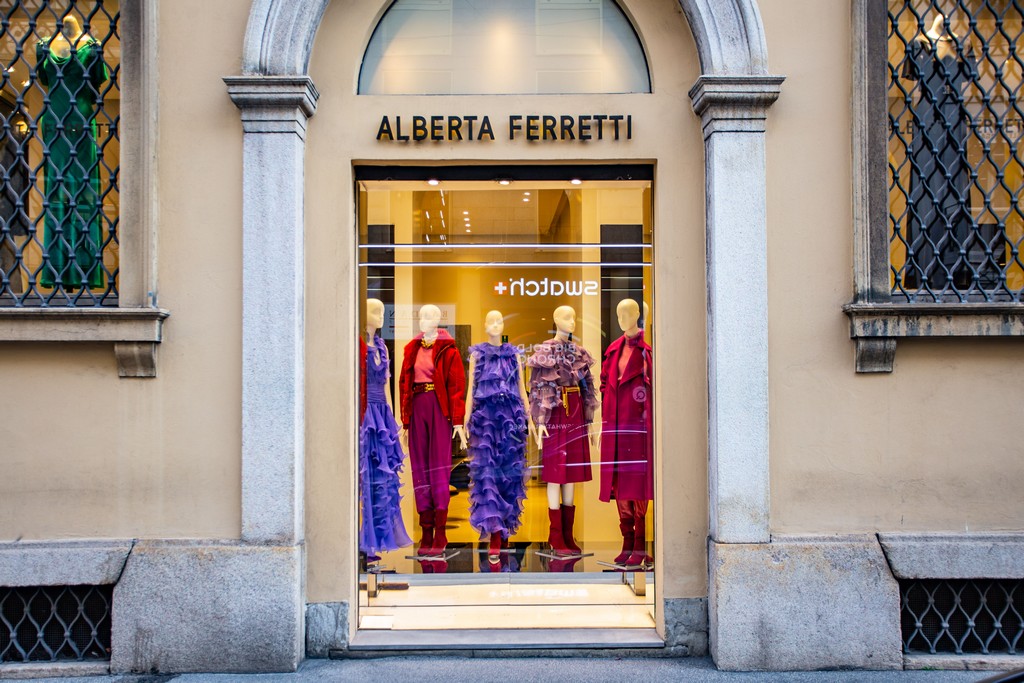
What to buy in Italy? — 19+ top souvenirs & best things to buy in Italy
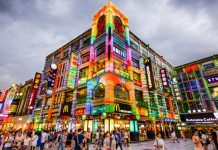
What to buy in Guangzhou? — 11+ best things to buy in Guangzhou & best shopping places in Guangzhou
Editor picks.

JR Rail Pass Guide. All things you need to know, how...

Mövenpick Resort Kuredhivaru Maldives reviews. The detailed review of my vacation...

Hyatt Regency Danang Resort and Spa reviews. The resort is highly...
Popular posts.

What to buy in USA? — 17+ must buy in USA...

What to buy in Korea? — Top +23 cheap, famous &...

Must buy souvenir in Taiwan — Top 17+ most famous, cheap...
Popular category.
- Inspiration + Guide 1463
- Trip Inspiration 468
- Food + Drink 211
- Thailand 209
- Coasts + Islands 193
- Vietnam 169
- South Korea 168
- Travel Photos 144
- Work for Us
- Terms & Conditions
- Privacy Policy

How to Spend An Incredible Three Days in Oslo (A 2023 Itinerary)
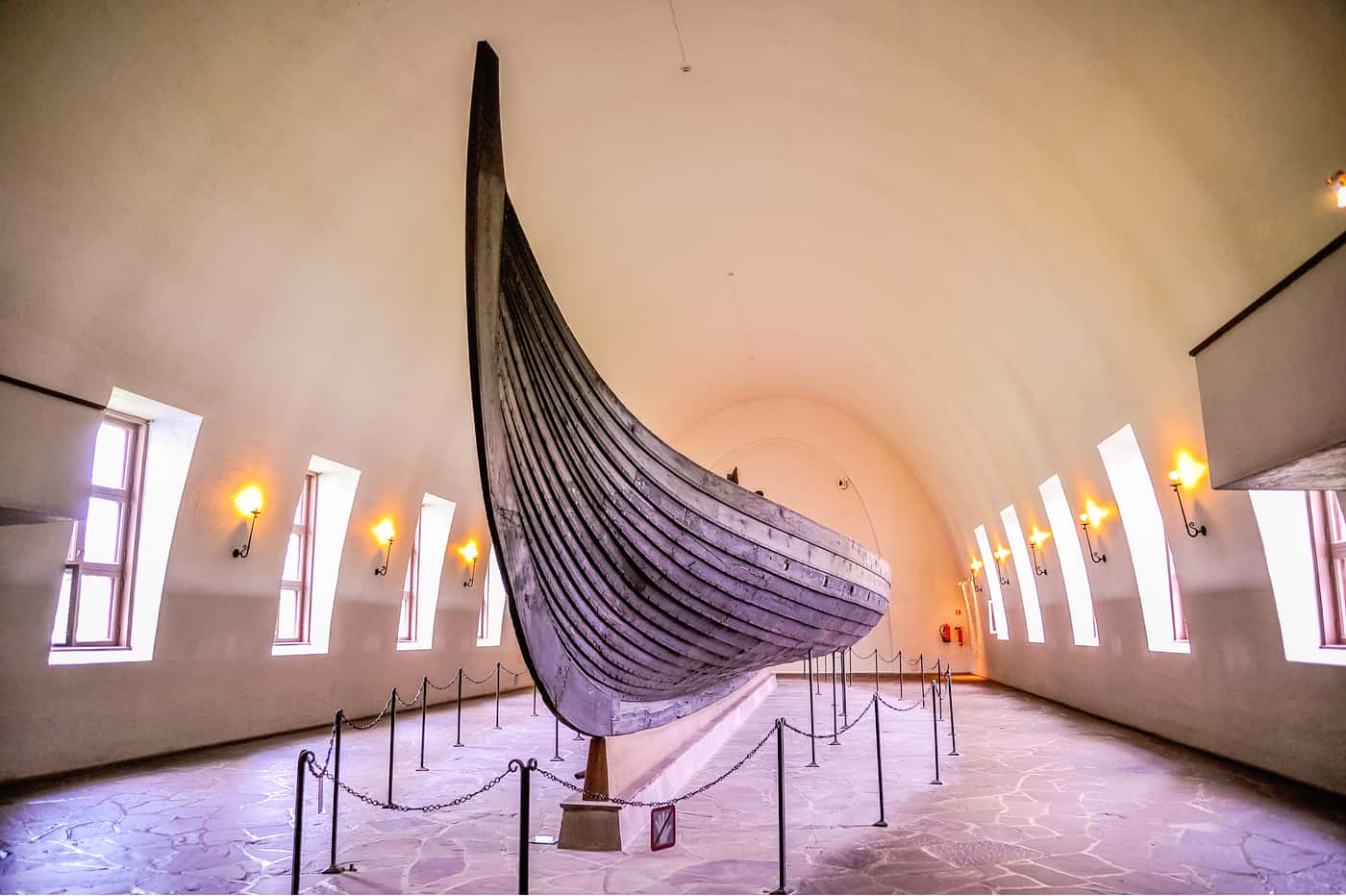
At the top of the Oslo Fjord at the southern tip of Norway, Oslo is Norway’s biggest county and capital city. It’s not very often one gets urged to visit the city because it is often overshadowed by its stunning fjords and natural settings. Well, I’m here to change that.
Oslo is an incredible Scandinavian city, bursting at the seams with greenery, fun outdoor activities, exciting museums, and tons of excellent seafood. It’s one of the fastest-growing capital cities on the continent, with an ultra-modern build of incredible contemporary architecture.
But this modern facade covers a long and fascinating history. Founded as a city at the end of the Viking Age in 1040, the city has been home to Vikings, Medieval communities, and still-reigning royals before it became the modern city it is today.
The city is clean, quiet, and overflowing with green spaces. While the capital is only home to around 700 thousand people (one of the smaller capitals in Europe), locals are friendly and welcoming and live an excellent quality of life.
With an international airport, a seaport, and major train stations, the city is a fantastic base to explore southern Norway and even branch into Sweden and Denmark. While it’s certainly not the cheapest city on the bucket list, the incredible natural scenery, impressive architecture, and cleanliness will make up for it. There are also tons of free activities that you can do in the city that make it possible to travel without breaking the bank.
Norwegians love to spend time outdoors. Even in the midst of winter, when the sun only shines for a few hours each day, locals like to take advantage of the sunshine and spend time skiing, cross-country skiing, and hiking through snowy trails. That said, the city really comes alive in the summer, when some fantastic hiking and biking trails open up to the public, along with opportunities to swim, fish, waterski, and go boating.
In this article, I will look at how to spend three days in Oslo, Norway’s capital and most diverse city. Continue reading if you’re in the market for a relaxing yet exciting Scandinavian adventure!
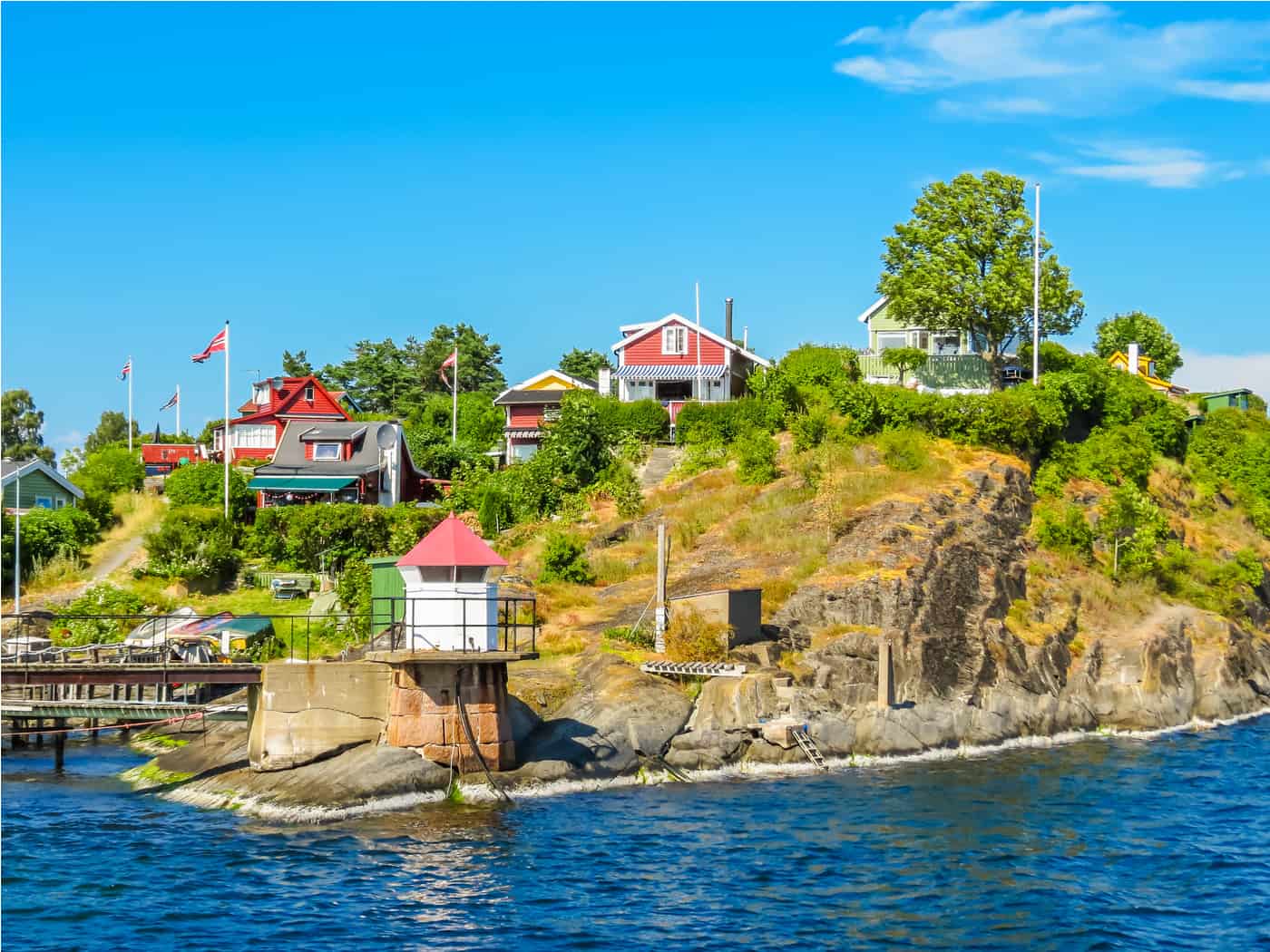
How Long Should I Spend in Oslo?
If you’re wondering how many days to spend in Oslo, the capital of Norway is the perfect destination for a long weekend visit. It’s small enough to explore the highlights of the city as well as its surroundings, dive into the city’s historical background, and enjoy some of Norway’s most pristine nature.
With three days in Oslo, you could easily fit in all the major attractions without rushing around from destination to destination, all while waking up at a reasonable hour and enjoying a bunch of time to relax.
Conveniently, the city is super easy to walk around, with few hills and abundant pedestrian footpaths. Of course, Oslo also has an efficient public transport network that connects the inner city with just about any residential area you might want to visit during a short trip. This ease of getting around means you won’t have to spend hours in transit from one attraction to the next and can make more of the little time you have in the city.
That being said, I highly advise following our efficient itinerary and making some changes according to what interests you most. Fitting in the best highlights of any capital city in three days can be overwhelming, so make sure you plan out your routes to ensure you don’t skip out on anything important!
Day 1 – The City Center: Exploring Gamle Oslo and Sentrum
Whenever I visit a new city, my favorite thing to do is walk. Walking is one of the best ways to see the ins and outs of a city, passing by places and people you would otherwise miss if using public transport. This route runs through the entire center of the city, hitting all the classic landmarks and beginning and ending at two gorgeous spots to swim in the fjords.
The route begins at the Sorenga Waterfront on the city’s eastern side. This area houses one of Oslo’s best seawater pools, with clean and safe water perfect for a morning dip. Sorenga is a new neighborhood with a vibrant young community. The pool is open year-round, with saunas popular during winter, and cold water swimming is encouraged for summer dips when the weather is warm.
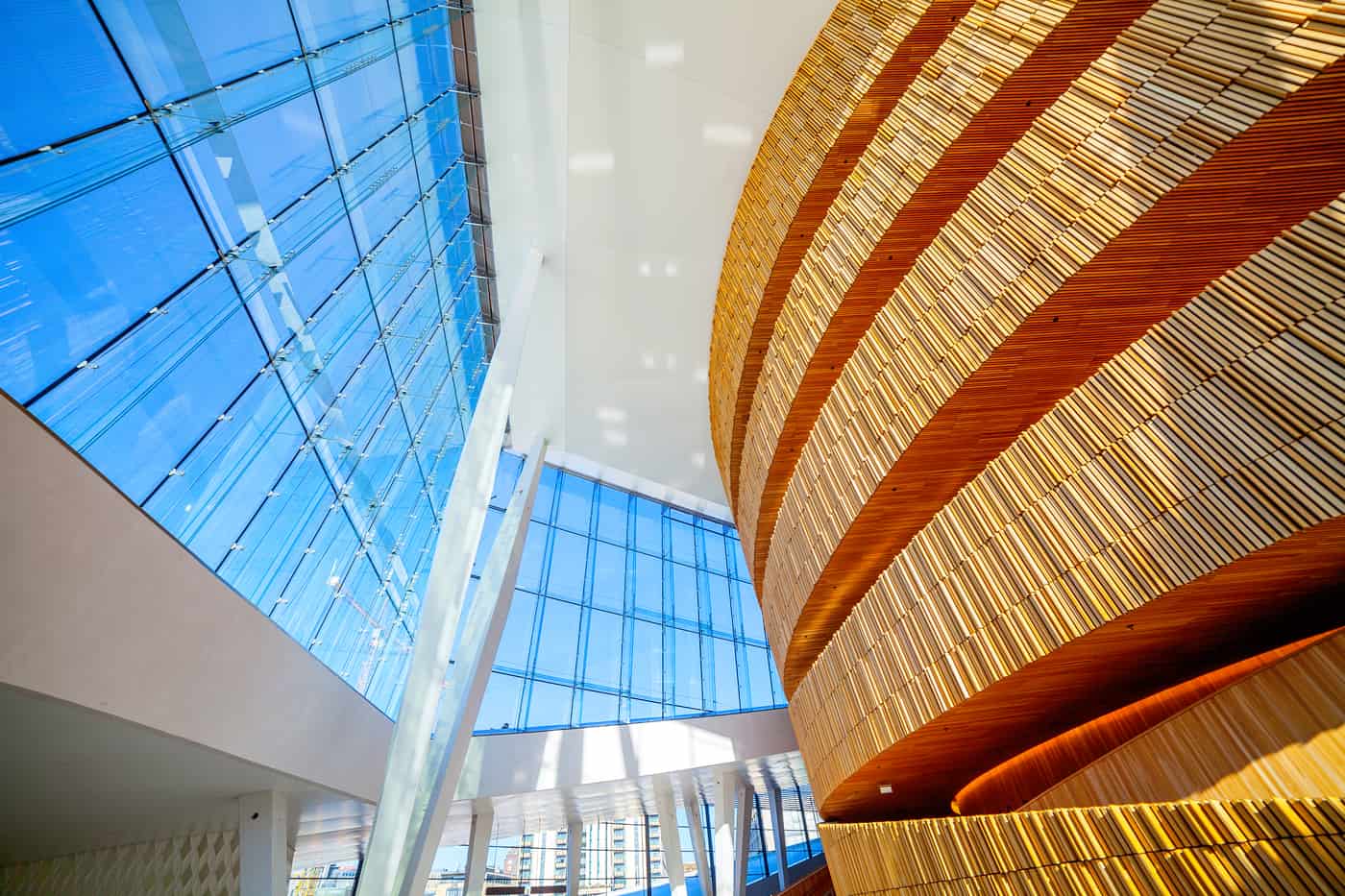
After a refreshing start to the day, enjoy a stroll through the lush Kongsgarden just around the corner, one of several medieval historical sites in the city. Just a ten-minute walk through the harbor, the Oslo Opera House is one of the city’s most iconic modern architectural feats. With incredible glass walls, mirrored sides, and an angular concrete hill to climb, this gleaming building looks like an abstract boat emerging from the harbor. Wander around it and enjoy incredible city views from the slanted walkway.
Once you’ve marveled at ancient and modern Oslo, stroll seventeen minutes along the harbor to Vippa , a vibrant food court marketplace on the edge of the Oslo Fjord. The space allows farmers, producers, and chefs starting out in the field to sell their products to visitors, all while doing so sustainably. Grab a bite to eat and fuel up for a day of walking and exploring.
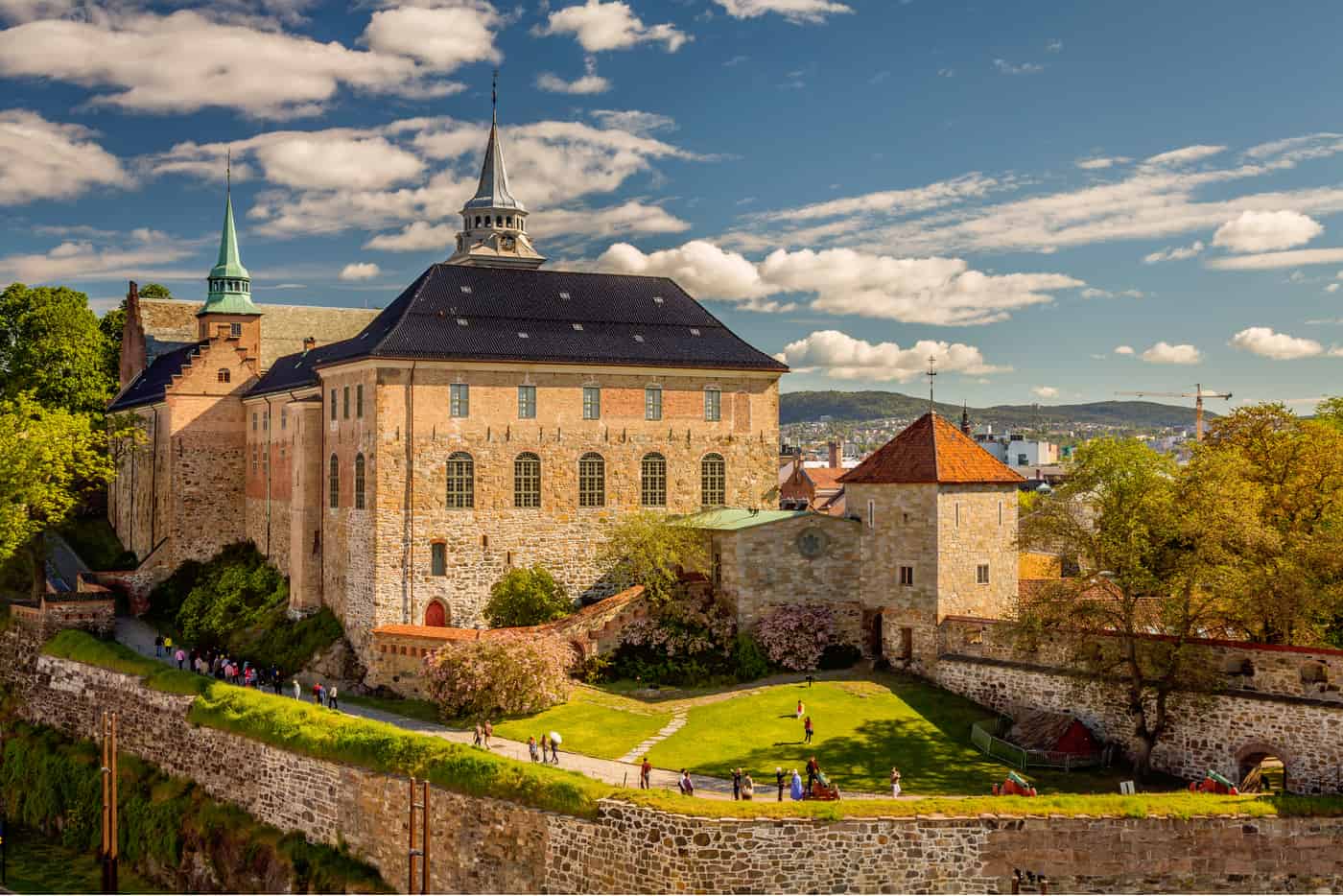
Next, it’s an eleven-minute walk to Akershus Fortress , a medieval castle built in the 12th century to protect and provide a royal residence for the royals in the city. For a small fee, you can enter the fortress and tour the castle, but it is free to walk around the grounds.
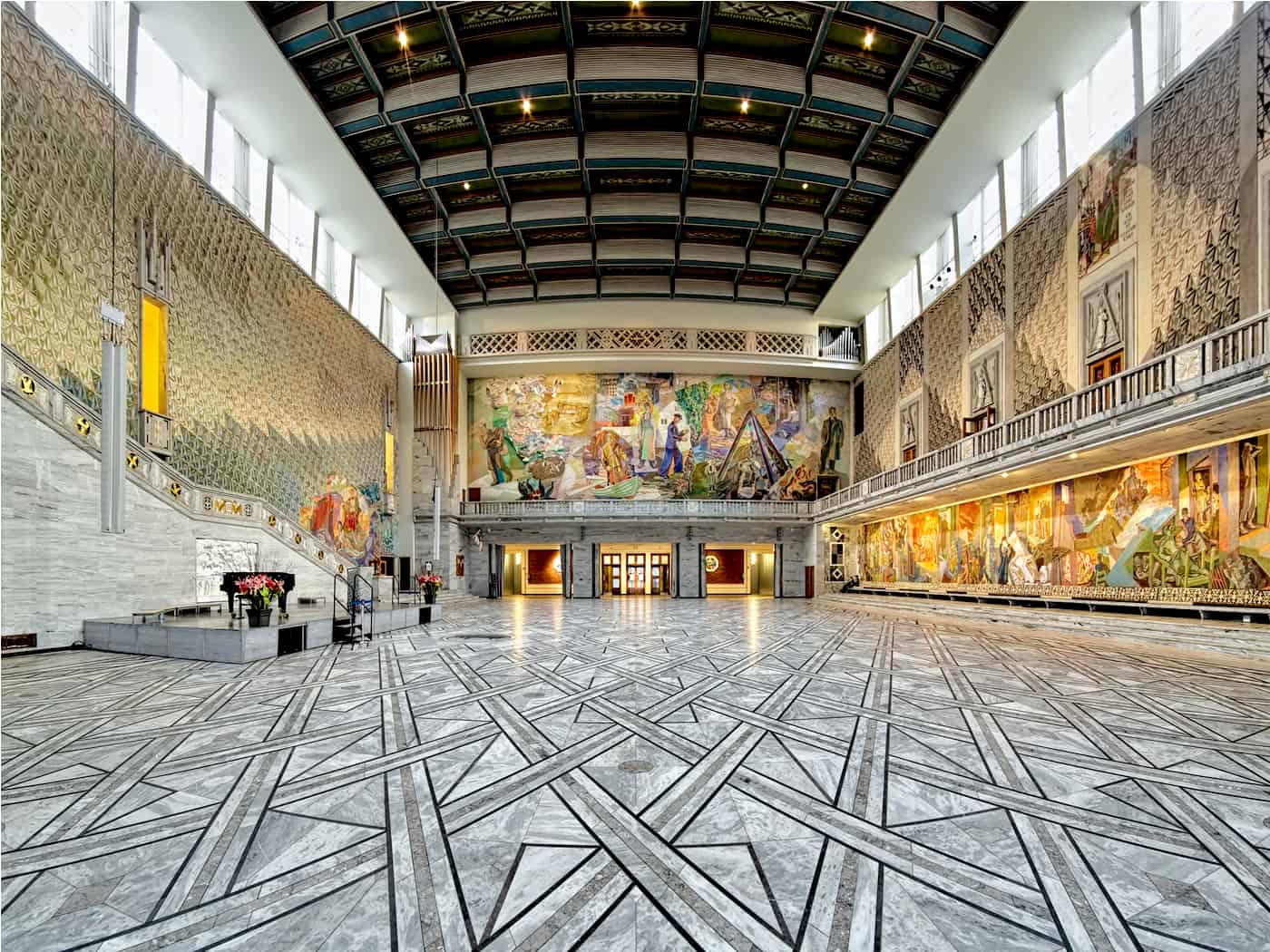
Walk along the harbor for another ten minutes, passing incredibly manicured flower beds along the way, to reach the Oslo City Hall (Radhuset ). This iconic municipal building is the capital city council of the country and is the setting for the annual Nobel Peace Prize Ceremony. This stark modern structure was built during the Second World War.
Right beside this modern structure sits the Oslo National Theatre. As one of Norway’s largest and most prominent venues for performing arts, you would be lucky to get a ticket to watch a performance in this incredible building that has been standing since 1899.
Next, enjoy a slow loop up and down Karl Johans Gate , arguably the most famous street in Oslo, ending by heading back up towards Oslo Cathedral and The Royal Palace. The road is lined with incredible restaurants, boutique stores, and brand-name shops, so even though the walk is only ten minutes, you could spend hours on this street.
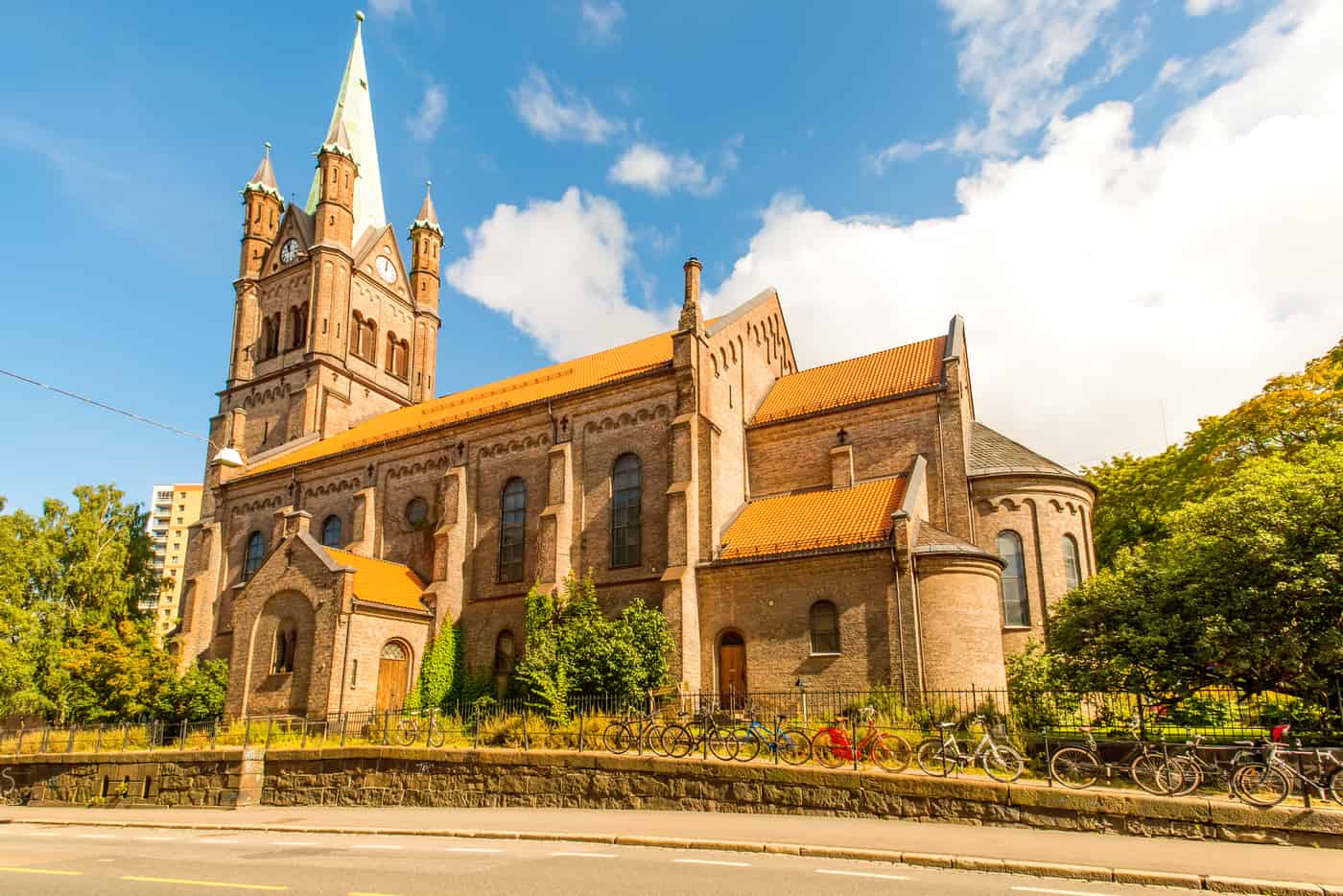
If you continue walking down the street, you’ll run into the Oslo Cathedral , an impressive structure built by the King of Norway in the 12th century. The building was one of the most important places in the city for 500 years until a fire destroyed it in 1624. The current structure you see today was built in 1694 and was restored in the 1800s and 2000s.

At the end of Karl Johans Gate, end your walking tour at the iconic Royal Palace . Locally known as the Det Kongelige Slott in Norwegian, the palace is the current residence of the Norwegian royal family. It was built in the 1800s and is surrounded by manicured public parks and private gardens. It continues to be one of the country’s most iconic symbols and is open to the public during the summer months.
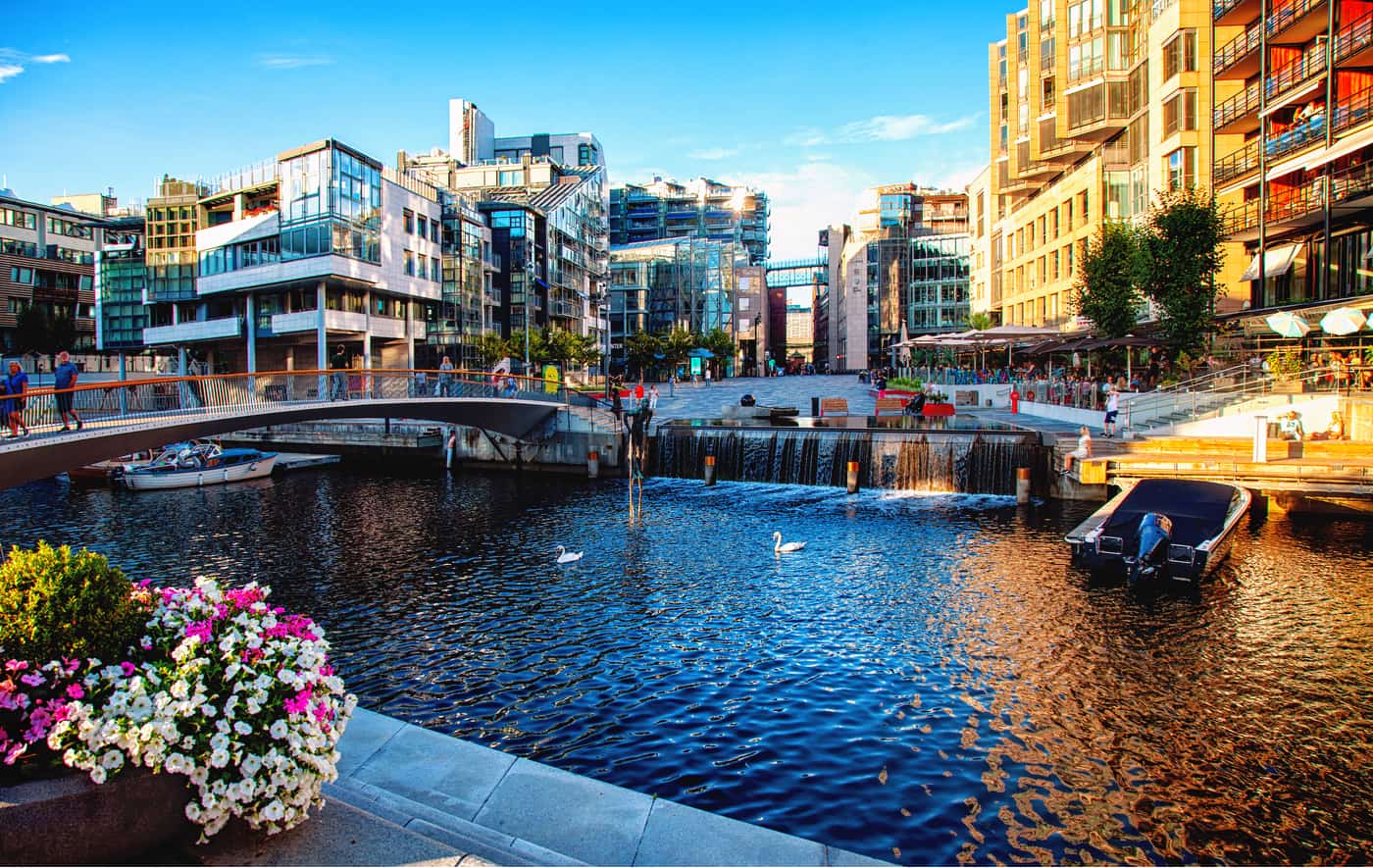
After a day out and about on your feet, end the day as you started it – with a dip in the waters of the Oslo fjord. Aker Brygge is a small commercial area along the water that houses many restaurants, cafes, and shops in a modern complex. If you continue walking down the dock, you’ll pass over some incredible bridges, residential buildings, and the Astrup Fearnley Museum of Modern Art; which is well worth a browse if you have the time.
At the very end of the pavilion, there are a few artificial beaches and floating docks, usually dotted with locals sunning themselves during the warmer months. Enjoy an afternoon swim and a cold shower before heading to one of the fjord-side restaurants in Aker Brygge for a well-deserved meal. The Salmon is a great seafood restaurant known for its fresh Norwegian catch.
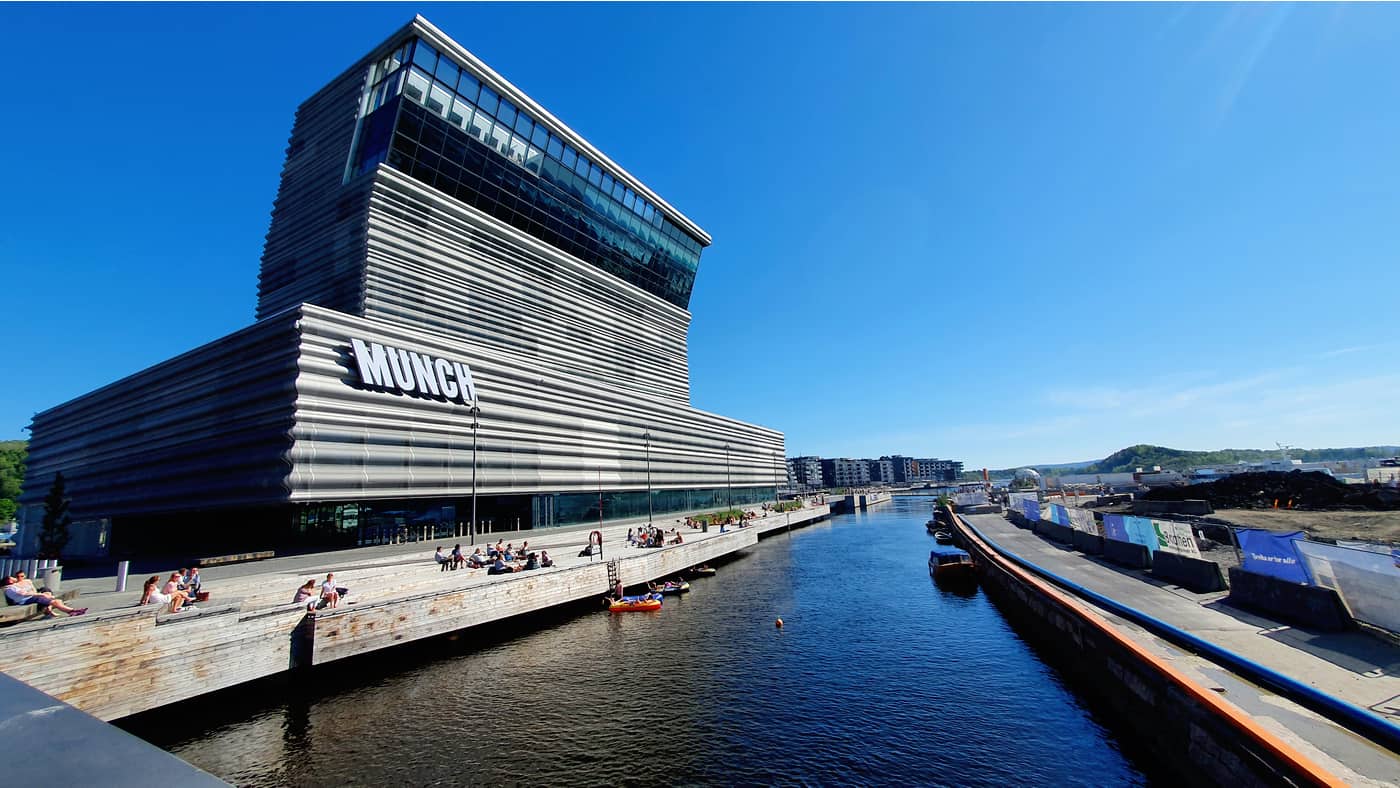
Day 2 – Art, Culture, and History: Oslo’s Best Museums and Gardens
With a small taste of Olso’s modern art the evening before, I hope you’ll have wet your appetite for a much-needed day soaking in some of Oslo’s art, culture, and history.
Start your second day in Oslo at the Munch Museum , an incredible modernist building in east Oslo, filled with thousands of works of art produced by the famous artist Edvard Munch, along with his private collection of tools, books, and art supplies. This museum is in the same waterfront area as the Opera House you would have visited the day before and is home to three versions of Munch’s iconic ‘The Scream’; a painting, a drawing, and a print.
While you’re by the water, grab a bite to eat at BonBon Oslo , serving delicious crepes with savory and sweet fillings. It’s a little pricy but well worth it for a tasty crepe outside in Oslo! The Vandelay is another excellent breakfast and brunch spot, serving classic dishes with streetside seating.
After a relaxing meal, take a twenty-minute bus journey up north to The Oslo Botanical Gardens and Natural History Museum / Botanisk Hage Naturhistorisk Museum (or walk the twenty-minute journey). Located in Toyen, this expansive botanical garden has manicured lawns and incredibly diverse local flora. Most of the area is designed as an Arboretum, with over 5500 different types of plants. The area is used as a recreational space for the city, so it is as popular with locals as it is with tourists. The Botanical Gardens are a living museum featuring two greenhouses and various themed gardens.
At the northern corner of the gardens, the Natural History Museum offers the chance to explore over 4.5 billion years of natural history, focusing on the Scandinavian region. If you’re interested in geology and archeology, this museum could keep you occupied for hours.
Next on the agenda is a visit to the historical neighborhoods of Damstredet and Telthusbakken . Just over a mile walk from the Botanical Gardens, the journey should take at most 25 minutes whether you walk or use public transport. Damstredet and Telthusbakken are two picturesque cobblestone streets lined with wooden houses built in the first half of the 19th century. Well preserved and still inhabited today, walking in this area is a sure way to make you feel like you’ve taken a step back in time.

Taking a journey even further back in time, a trip to Oslo wouldn’t be complete without visiting the Viking Ship Museum . Just 30 minutes away by public transport, the Viking Ship Museum sits on a peninsula called Bygdoy, just across the fjord from Oslo Sentrum. This museum houses three of the best-preserved Viking ships in the world. Take note that the museum is closed for renovation until 2025/2026.
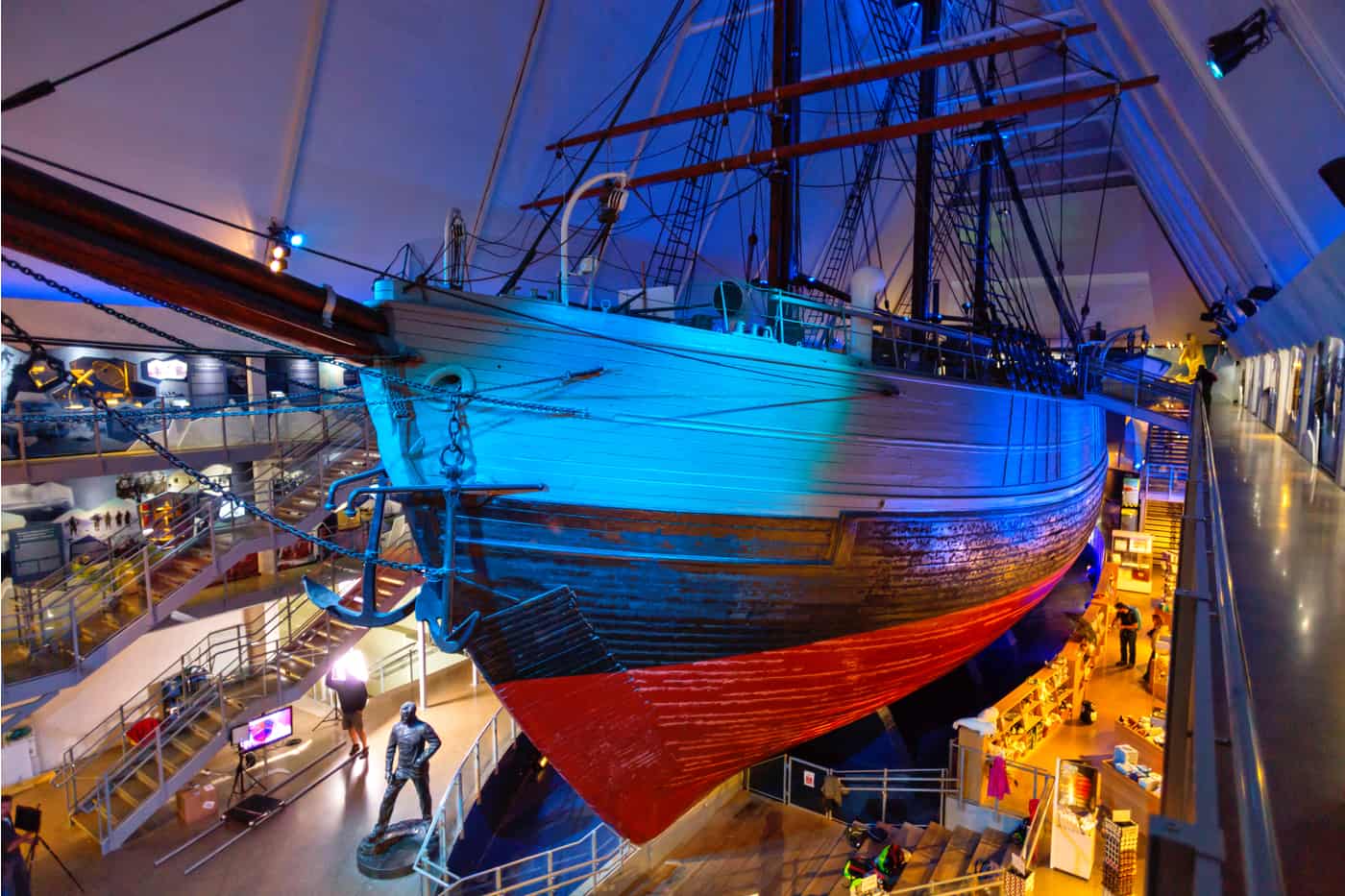
But don’t worry; there are many more museums to visit if you’re visiting before 2026. A short walk away on the same peninsula, The Fram Museum might just be the most exciting museum in Oslo. This museum houses the original expedition ship used to explore the Arctic and Antarctic by famous Norwegian explorers during the Heroic Age. The child-friendly museum uses interactive technology to make you feel like you are on board the original vessel.
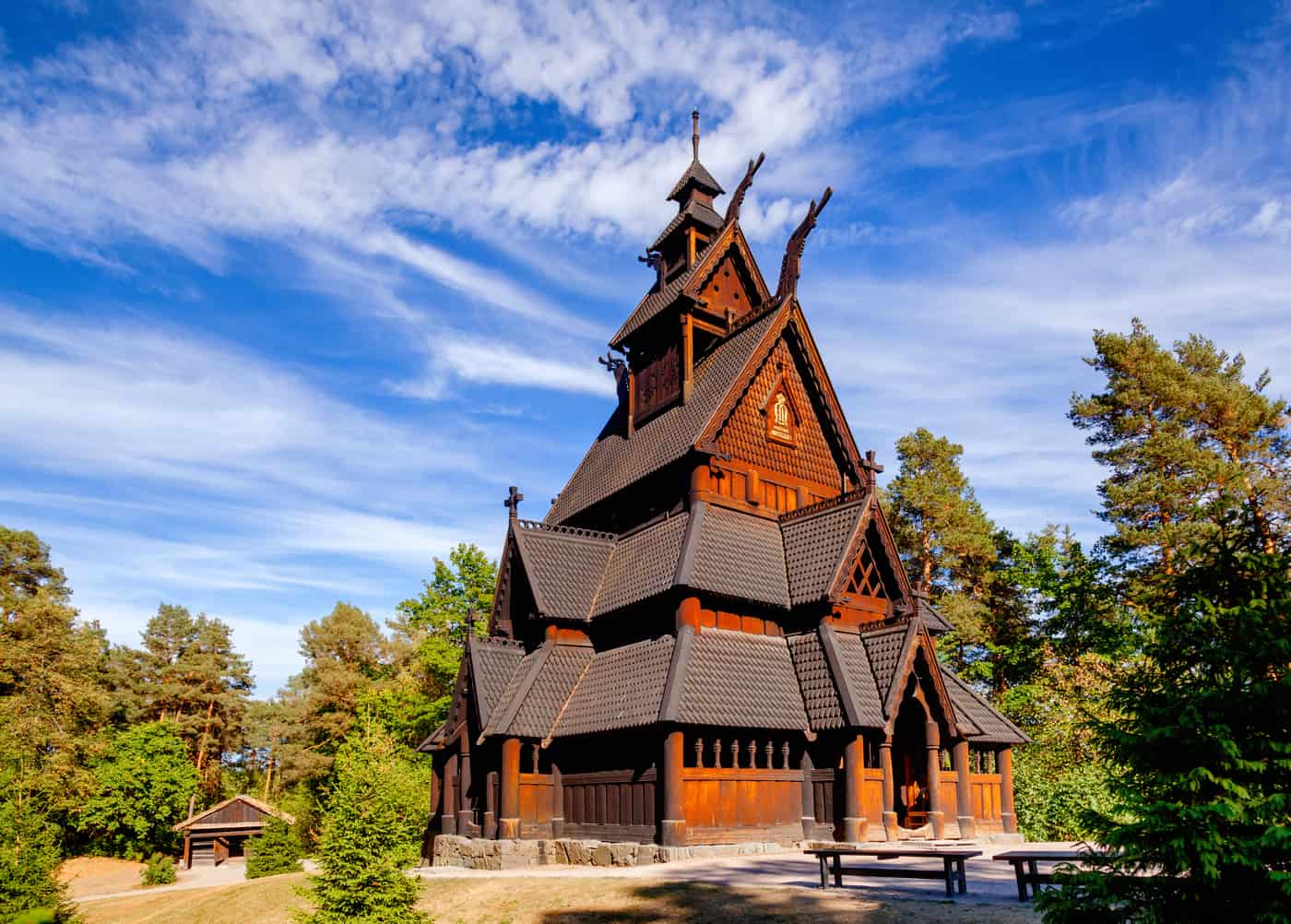
Your final museum for the trip, the Norwegian Museum of Cultural History, or Norske Folkemuseum (about one mile away), depicts how Norwegian people have been living from the 16th century up until today. The open-air museum includes 160 historic buildings surrounded by lush foliage, showing what life is like in different regions in Norway. From cities to mountains, it’s one of the most incredible museums to enjoy a taste of life in Norway centuries ago.
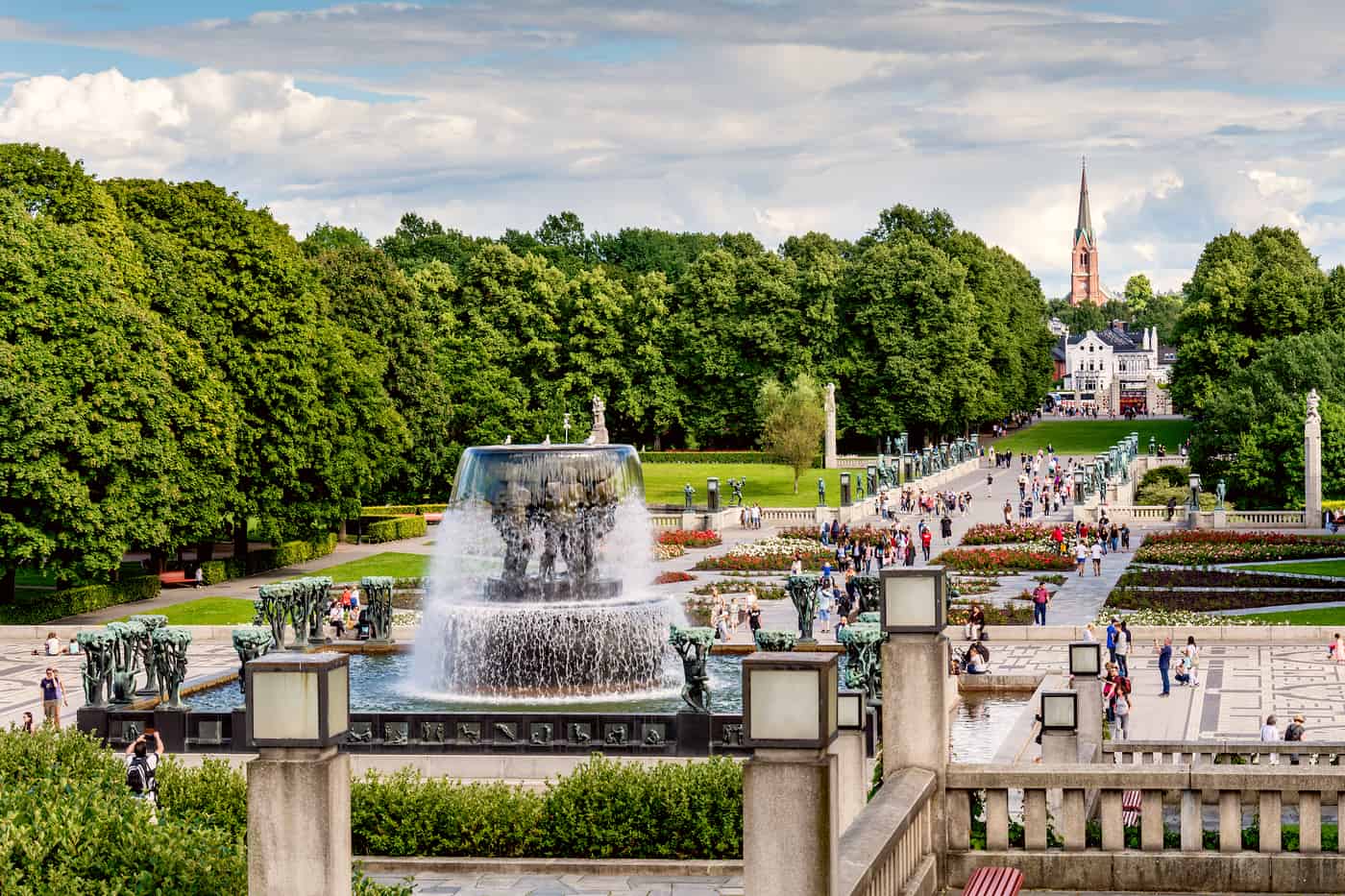
Day 3 – A Day in Nature: From Vigeland Park to the Oslo Fjords
Day three calls for a bit of relaxation and nature therapy. Start your day in west Oslo at the famous Frogner Park. Oslo’s equivalent of Central Park, this incredible park features incredible rose gardens, color-coordinated flower beds, lush lawns, and impressive fountains where one can enjoy a light stroll or lay around on the grass.
Inside Frogner Park, Vigeland Sculpture Park is an incredible park packed with over 200 sculptures by Gustav Vigeland. These bronze, granite, and cast iron sculptures are an icon of the city, and Vigeland Sculpture Park is currently the largest sculpture park by one single artist.
After a morning in the park, I recommend taking advantage of the gorgeous location and enjoying the natural scenery of the Oslo fjord. Hovedoya Island is the closest island to Oslo city, located just a seventeen-minute ferry ride from the port at Aker Brygge. There are plenty of ferries and boat tours that can bring you to and from the island year-round.
The island is home to incredible forests, beaches, and cultural sites, which will make you feel a million miles from the hustle of the city center. There are two popular beaches on the west of the island, while inland is best for hiking. Part of the island is protected as a nature reserve.
On the island’s northern part, you can visit the ruins of a Cistercian monastery built in 1147. In the same area, a couple of cannon batteries made by Norway’s army in 1808 stand tall and strong.
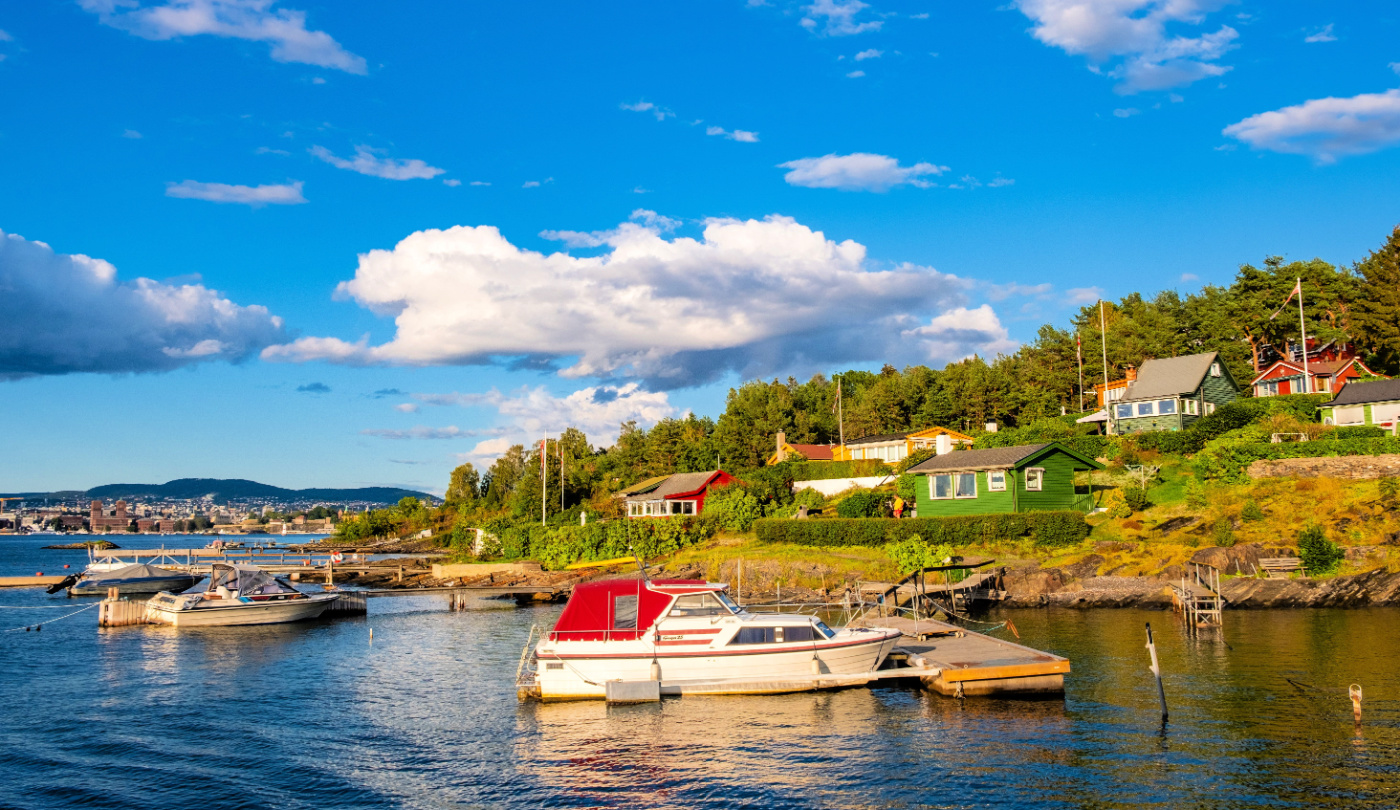
The next island, Lindoya, is another stunning fjord island worth visiting. It will take you about 20 minutes to travel by ferry from Aker Brygge, transiting through Hovedoya on the way. The idyllic island is home to around 300 summer cottages, owned mainly by locals, painted a classic red, yellow, green, and white. The island looks like something out of a postcard, with picture-perfect traditional wooden cottages overlooking the ocean.
The beauty of this holiday island is that there isn’t much to do here. Other than swimming in the pristine water or enjoying boating activities, the island has a football field and a small kiosk shop in the center of the island. Similarly to Hovedoya Island, the northern part of the island is preserved as a park.
If you feel like a guided tour might suit you best, this Oslo Fjord Sightseeing Cruise on an Electric Boat cruises past all the major attractions along the waterfront that you would have already visited on days one and two of your adventure. It’s a great way to see the city from a different perspective.
By the time you return to mainland Oslo, I have no doubt you’ll be peckish for a tasty meal. Your most convenient option would be to grab a bite at one of the waterfront restaurants on Aker Brygge. Olivia Aker Brygge serves up delicious and affordable Italian food, while Pastis Bistrobar beside it is one of the area’s top modern French restaurants. Although slightly busy with tourists during the summer months, this remains one of the most beautiful places to watch the traditional Norwegian sailboats docked alongside the Oslo fjord.
What to Know Before you Go
Where to Stay for Three Days in Oslo
If you only have three days in Oslo, I highly recommend finding a place to stay in the center of town. Luckily enough, the city is so small and compact that even staying outside the city center means you won’t be too far from the heart of Oslo.
Your best bet would be to find a hotel, Airbnb, or guesthouse in Sentrum or Gamle Oslo, two of the busiest parts of town.
Camillas Hus is a boutique hotel in the center of Oslo Frogner. Located just above the Royal Palace and Gardens, this hotel is just a short walk to the beautiful Homansbyen high street lined with shops and restaurants and just a short walk or tram ride from the harbor and other main attractions in the city.
Set in a historic converted home, each room is beautifully designed with a blend of antique and bespoke modern interiors, with warm wallpapers, luxurious linens, and tons of natural light. All rooms come equipped with a desk, private bathroom, wardrobe, and tea and coffee facilities. Some even include a private balcony.
Wake up to the smell of freshly baked bread and breakfast pastries, which you can enjoy along with your a la carte breakfast each morning.
With such a cozy atmosphere and incredibly friendly and helpful staff, Camillas Hus is bound to make you feel right at home in Oslo.
The Best Time of Year to Visit Oslo
There’s no doubt about it; the best time of year to visit Oslo is in the summer months, between June and August. During summer, the weather is warm, and the days are long – really, really long. The entire country comes alive during the summer when locals from other Scandinavian countries visit their holiday homes in Norway.
That being said, just like the Danish and Swedish visit to catch a break from the city, so do most Norweigian locals take a few weeks off to spend time in the Southern Oslo Fjords or further afield. This means that during school holidays, in particular, the city of Oslo is quiet, often populated with more tourists exploring the streets than locals.
Nevertheless, summer brings about tons of events and fun activities to do in Oslo when temperatures hover at a moderate 20 degrees celsius – not too hot, not too cold.
Norway’s summer is very short, around three months, to be precise. So, make sure to book your accommodation well in advance to avoid losing out. Attractions begin to close up shop or limit their hours around late September or early October when the days are shorter. However, you will usually find more affordable flights and accommodations during shoulder tourist season.
Winter in Oslo is freezing cold and dark. With daylight only lasting a few hours each day. Even then, with most days being overcast, you can expect a lot of snow, rain, and cold temperatures. Of course, there are some exciting things to do in winter in and around Oslo, from skiing at the local ski resort to ice skating and dining in cozy restaurants. Accommodation is undoubtedly the cheapest during winter when few tourists journey to this northern Scandinavian city.
Getting Around Oslo
One of the things that make Oslo so great for a weekend visit is that it’s super small and easy to get around. With most major attractions just a few short miles from one another, the city is relatively easy to explore on foot or bike.
Like any European capital city, Oslo has an efficient, safe, and reliable public transport network connecting all parts of the inner city to the surrounding suburbs. Tickets are priced by zone, and all buses, trams, trains, and undergrounds are included in one easy-to-use ticketing system.
Take heed: you need to scan into every bus, tram, or train you catch. If you try your luck traveling without a ticket, ticket patrols are common, and fines are hefty – don’t risk it just because of the small fee!
If you’re staying within the city center (which I recommend you do for a short trip), a one-way journey within Zone 1 costs around $3.75. Zone 1 includes the Oslo city center, while Zone 2 tickets can get you into Oslo’s residential suburbs. A 24-hour Zone 1 ticket costs $11.30, while students and children under the age of 18 travel for discounted prices.
If you are staying in the outskirts of the city center in areas like Sandvika, Lillestrom, or Asker (only a short distance from the city), you will need to make use of a Zone 2 ticket to get into the city. A single ticket within Zone 2 costs $6.20, while a 24-hour pass will set you back $18.50
The easiest way to plan your trips is using the Ruter App on IOS or Android. Buying tickets using this app is the cheaper option, as riders are required to pay an additional fee of $2 to purchase a ticket on board the transportation.
Oslo is the central hub of transportation for the entire country. The city is home to Oslo Gardermoen International Airport (OSL), which services flights from within Norway, Europe, and across the globe.
Oslo Central Station (locally referred to as Oslo S) is the central railway station in Oslo and the largest in the country. The station services international and local trains that connect the city to all four corners of Europe by rail. It also includes a bus terminal that services express buses across Norway and into Scandinavia.
You can also catch an airport express train from this station, which is just a ten-minute sprint from the city and is operated by Flytoget. Local trains are operated by VY and are often cheaper than Flytoget, covering the same distance for a reduced fare.
Uber is available in Oslo, although this is the only city in the whole country where you will find an Uber. Taxis are abundant, and prices are similar to Uber.
Safety Advice
Oslo is easily one of the safer cities in Europe, if not the world. Although international crime figures label the city as extremely safe, there are a few less secure areas and neighborhoods where you should be extra careful, like in any big city.
With a high quality of living and low poverty rate, most of the crime experienced here is petty theft of an opportunistic nature. Regarding crime, the city is super safe to walk around at any time of the day. However, you should always be aware of your surroundings and take precautions when walking alone to avoid petty theft like pickpocketing or muggings.
There are also a few scams to look out for in Oslo:
The first is a common taxi scam, where taxi drivers pretend their meters are broken just to charge you an inflated price for your trip. When taking a cab, ensure the driver turns on the meter and that it works. I also advise opening out your own map of the journey to ensure you aren’t taken on a whirlwind ride to make the trip longer and more expensive.
Second, if someone approaches you outside an ATM cash machine and mentions that they can help you ‘avoid local bank fees,’ they are not to be believed. Instead, these scammers will skim your card and watch for your PIN, only to duplicate your details and drain your account at a later stage. ALWAYS make sure you cover your hand when putting in your PIN.
While not so common, there have been reports of locals distracting tourists by throwing bird poop on you, offering to help you clean up your shirt while pickpocketing you in the process. Another pickpocketing scam is known as the ‘Guessing Game Scam,’ where a busker on the side of the street will distract passers-by with an intriguing guessing game while their accomplice pickpockets innocent bystanders in the crowd.
The best way to avoid these scams is to keep your personal belongings close to you, especially in crowded areas.
Lauren Juliff
Lauren Juliff is a published author and travel expert who founded Never Ending Footsteps in 2011. She has spent over 12 years travelling the world, sharing in-depth advice from more than 100 countries across six continents. Lauren's travel advice has been featured in publications like the BBC, Wall Street Journal, USA Today, and Cosmopolitan, and her work is read by 200,000 readers each month. Her travel memoir can be found in bookstores across the planet.
Related Posts

How to Spend One Week in Mauritius: An Itinerary for First-Time Visitors

What’s it Like to Travel in Liechtenstein?

What to Take On the Camino Primitivo: My Detailed Packing List

Exploring the Abandoned Monte Palace Hotel in Sao Miguel

How to Spend Two Weeks in Belize: An Itinerary for First-time Visitors
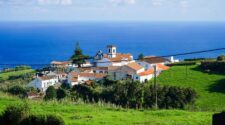
13 Reasons to Plan a Trip to the Azores
Laura , I loved your post about Oslo! We are from São Paulo ,Brazil. if you need some information about Brasil, you can count on me The way you write and explain are lovely!!! Thanks a lot! we are going on beginning of September
Leave a reply Cancel reply
Your email address will not be published. Required fields are marked *
Meet Lauren Juliff
Cookies on GOV.UK
We use some essential cookies to make this website work.
We’d like to set additional cookies to understand how you use GOV.UK, remember your settings and improve government services.
We also use cookies set by other sites to help us deliver content from their services.
You have accepted additional cookies. You can change your cookie settings at any time.
You have rejected additional cookies. You can change your cookie settings at any time.
- Passports, travel and living abroad
- Travel abroad
- Foreign travel advice
Warnings and insurance
The Foreign, Commonwealth & Development Office ( FCDO ) provides advice about risks of travel to help British nationals make informed decisions. Find out more about FCDO travel advice .
Before you travel
No travel can be guaranteed safe. Read all the advice in this guide as well as support for British nationals abroad which includes:
- advice on preparing for travel abroad and reducing risks
- information for women, LGBT+ and disabled travellers
Follow and contact FCDO travel on Twitter , Facebook and Instagram . You can also sign up to get email notifications when this advice is updated.
Travel insurance
If you choose to travel, research your destinations and get appropriate travel insurance . Insurance should cover your itinerary, planned activities and expenses in an emergency.
Related content
Is this page useful.
- Yes this page is useful
- No this page is not useful
Help us improve GOV.UK
Don’t include personal or financial information like your National Insurance number or credit card details.
To help us improve GOV.UK, we’d like to know more about your visit today. Please fill in this survey .
Update May 10, 2024
Information for u.s. citizens in the middle east.
- Travel Advisories |
- Contact Us |
- MyTravelGov |
Find U.S. Embassies & Consulates
Travel.state.gov, congressional liaison, special issuance agency, u.s. passports, international travel, intercountry adoption, international parental child abduction, records and authentications, popular links, travel advisories, mytravelgov, stay connected, legal resources, legal information, info for u.s. law enforcement, replace or certify documents.
Share this page:
Norway Travel Advisory
Travel advisory july 26, 2023, norway - level 1: exercise normal precautions.
Reissued with obsolete COVID-19 page links removed.
Exercise normal precautions in Norway.
Read the country information page for additional information on travel to Norway.
If you decide to travel to Norway:
- Enroll in the Smart Traveler Enrollment Program ( STEP ) to receive travel alerts and make it easier to locate you in an emergency.
- Follow the Department of State on Facebook and Twitter .
- Review the Country Security Report for Norway.
- Visit the CDC page for the latest Travel Health Information related to your travel.
- Prepare a contingency plan for emergency situations. Review the Traveler’s Checklist .
Travel Advisory Levels
Assistance for u.s. citizens, search for travel advisories, external link.
You are about to leave travel.state.gov for an external website that is not maintained by the U.S. Department of State.
Links to external websites are provided as a convenience and should not be construed as an endorsement by the U.S. Department of State of the views or products contained therein. If you wish to remain on travel.state.gov, click the "cancel" message.
You are about to visit:
Oslo Travel Guide
Courtesy of william87 | iStock

Best Times To Visit Oslo
The best time to visit Oslo is from May to August when the temperatures rise and there are surprisingly affordable room rates available, though these options often fill up fast. Daytime temps generally hover in the 60s and 70s, but evenings can get chilly at times, so remember to bring a coat. Like Stockholm and Reykjavik , Oslo can experience nearly 24 hours of daylight in the summer, with the famous midnight sun usually appearing in June or July. On the flip side, there are winter days of near total darkness. This is matched with frigid weather and temperatures diving into the 20s.
Weather in Oslo
Data sourced from the National Climatic Data Center
Find Flight and Hotel Deals
Navigate forward to interact with the calendar and select a date. Press the question mark key to get the keyboard shortcuts for changing dates.
Navigate backward to interact with the calendar and select a date. Press the question mark key to get the keyboard shortcuts for changing dates.
Popular Times to Visit Oslo
Tourism volume is estimated based on in-market destination search query interest from Google and on travel.usnews.com in 2015-2016. Hotel prices are sourced from a sample of U.S. News Best Hotels rates through 2015-2016.
Explore More of Oslo

Things To Do
Best hotels.

You might also like

# 9 in Best Places to Visit in June 2024

# 9 in Best Family Vacations in Europe

# 16 in Best Christmas Vacations
If you make a purchase from our site, we may earn a commission. This does not affect the quality or independence of our editorial content.
Recommended
The 28 Best Water Parks in the U.S. for 2024
Holly Johnson|Timothy J. Forster May 8, 2024

The 18 Best Napa Valley Wineries to Visit in 2024
Lyn Mettler|Sharael Kolberg April 23, 2024

The 25 Best Beaches on the East Coast for 2024
Timothy J. Forster|Sharael Kolberg April 19, 2024

The 50 Best Hotels in the USA 2024
Christina Maggitas February 6, 2024

The 32 Most Famous Landmarks in the World
Gwen Pratesi|Timothy J. Forster February 1, 2024

9 Top All-Inclusive Resorts in Florida for 2024
Gwen Pratesi|Amanda Norcross January 5, 2024

24 Top All-Inclusive Resorts in the U.S. for 2024
Erin Evans January 4, 2024

26 Top Adults-Only All-Inclusive Resorts for 2024
Zach Watson December 28, 2023

Solo Vacations: The 36 Best Places to Travel Alone in 2024
Lyn Mettler|Erin Vasta December 22, 2023

26 Cheap Beach Vacations for Travelers on a Budget
Kyle McCarthy|Sharael Kolberg December 4, 2023

We’re sorry, this site is currently experiencing technical difficulties. Please try again in a few moments. Exception: request blocked
- Norway Tourism
- Norway Hotels
- Norway Bed and Breakfast
- Norway Vacation Rentals
- Flights to Norway
- Norway Restaurants
- Things to Do in Norway
- Norway Travel Forum
- Norway Photos
- All Norway Hotels
- Norway Hotel Deals
- Last Minute Hotels in Norway
- Things to Do
- Restaurants
- Vacation Rentals
- Travel Stories
- Rental Cars
- Add a Place
- Travel Forum
- Travelers' Choice
- Help Center
Please advice on 7.5 day self-driving itinerary from Oslo - Norway Forum
- Europe
- Norway
Please advice on 7.5 day self-driving itinerary from Oslo
- United States Forums
- Europe Forums
- Canada Forums
- Asia Forums
- Central America Forums
- Africa Forums
- Caribbean Forums
- Mexico Forums
- South Pacific Forums
- South America Forums
- Middle East Forums
- Honeymoons and Romance
- Business Travel
- Train Travel
- Traveling With Disabilities
- Tripadvisor Support
- Solo Travel
- Bargain Travel
- Timeshares / Vacation Rentals
- Europe forums
- Norway forum

Can you help to advice on the initial plan? I will start to book hotel/airbnb along the way. We are mostly interested in nature sight view for photography, short hike is fine, but dont want to have any extensive hikes.
Day 1: Arrival in Oslo (8/7), pick up car and drive to hotel
Day 2: Oslo to either Rjukan or Geilo (preferred?), stay there
Day 3: Rjukan or Geilo to Bergen stay there, drive around, waterfall, floyen funicular, stay at Bergen
Day 4: a fjord cruise or drive around for short hikes or to Sotra, stat at Bergen
Day 5: Bergen to Flam , stay in Flam
Day 6: Flam to Geiranger, stay there. Or for shorter drive, go to Lillehammer instead.
Day 7: Drive back to Oslo, relax there.
Day 8: (8/14) flight at 5pm, explore a bit around the city in the morning, return car , get to airport around 2pm.
10 replies to this topic

Any special reason for going to Flåm? Are you doing the railway tour?
Why do you mention Lillehammer? Not an obvious choice for a summer trip in Norway ( more winter - skiing)
I wouldn’t recommend either Flåm or Geiranger, for several reasons. Both just a couple of hundred inhabitants in small villages overflowing with cruise ship passengers , several thousands.
With a car you can choose nice area to stay and in addition experience the fjords and scenery.
https://en.visitbergen.com
Bergen, Fløibanen, drive around and waterfall in one day. Think you need 2-3 days for that. The famous waterfall tour inland from Bergen is recommended for 2 days. Maybe stay some nice place in Hardanger, like Ullensvang hotel. Then you get fjord, scenery and waterfall in one go.
Skip Flåm and Geiranger and concentrate around Bergen and Hardanger

D2: Rjukan is a crack in the bedrock, known for its waterfall, powerplant and Gausta summit. Geilo is a winter resort but summer activities too.
D3: Rjukan to Bergen is 6-7 hours, so there is not much left of the day after a leisurely drive. Don't expect to use the car inside the city, downtown is compact and there is very little parking.
D5: By car you dont need to focus on Flåm. Go to any other fjordside village in the area. Aurland, Kaupanger, Solvorn, Balestrand.
D8: You can drop off car at airport and use train into city.
thanks guys - I modified a bit following the advice above. Pls take a look:
Day 2: Pick up car , drive to Rjukan, stay there
Day 3: Rjukan to Hardanger stay there
Day 4: To Bergen , a fjord cruise or drive around for short hikes
Day 5: Bergen to Stalheim/Aurland, stay in Aurland
Day 6: Aurland to Balestrand, then stay around Sonoalsfjora?
Day 7: Sognoalsfjora to Kaupanger, then drive back to Oslo, return car
Day 8: (8/14) flight at 5pm, explore a bit around the city in the morning by train, get to airport around 2pm.
https://media.snl.no/media/187294/standard_1_bergen-kart.pnghttps://www.uib.no/sites/w3.uib.no/files/styles/content_main/public/media/bykart.jpg
https://normannaune.no/images/product/199180.jpg
https://www.westcoastpeaks.com/pics/lyder_gravdalsfj.jpg
any suggestions on where to stay along the way? i have first and last day in Oslo , then Rjukan, Hardanger, Bergen, Aurland, Sonoals in between.
any suggestions on where to stay along the way?
In your itinerary one of your chosen places is Aurland. Aurland is also one of the options in the NIN tour. I really don’t think it’s necessary to do the
” Flåm trip” for the reasons mentioned before and for the price. I haven’t checked but there could be 3500 cruise ship passengers that day.
You will stay in Aurland and drive through Hardangerfjord , plenty fjords for you.
Otherwise this plan seems much more interesting

Day 7 - Why mention Kaupanger, hardly an interesting or relevant place?
Please try not to confuse people with dates and times by using international conventions.
- Transit in Bodo Airport - is 45mins enough 6:32 am
- May 20 , 2024 in Bergen 6:19 am
- How to know cruise schedule to avoid them? 5:44 am
- 7:00 am Norwegian Flight out of Oslo 5:39 am
- Hertz RentalCar customers - wrongful arrests 4:45 am
- 3-4 days in fjord country without a car 3:56 am
- Tromso area to explore 3:50 am
- Hirtshals to Kristiansand 7:19 pm
- Western road trip loop yesterday
- World Heritage Rock Art Center yesterday
- First time in Norway yesterday
- Norway rail pass yesterday
- Scenic Places to visit near Feiring with a two year old yesterday
- 5 or 6 days first time in Norway please help yesterday
- Norway in mid-June - weather and daylight? 3 replies
- ferry from Bergen to Alesund 3 replies
- Norwegian fjord Cruise 6 replies
- Northern Lights: best time 6 replies
- oslo - tromso 9 replies
- Northern lights in February/march 2013 24 replies
- Five Stars of Scandinavia/ Tour or Cruise of Scandinavia 6 replies
- Olden excursions 4 replies
- Question about the Kinsarvik Utne Kvanndal ferry? 9 replies
- Why is Norway so expensive? 20 replies
- Before you ask a question
- Hiking season for mountain areas
- Norway in a Nutshell
- What is the most beautiful/scenic fjord?
- Car rental or public transport ?
- Driving in Norway
- How to plan a driving itinerary
- Driving itineraries
- Currency and payment
- Christmas, Easter and Public Holidays
- Ski resorts
- Customs regulations for Norway
- Traditional Norwegian Food
- Buying and activating a SIM card in Norway for data and calls
- Quoting budgets and costs in Norwegian kroner

I work in Norway, one of the most productive countries in the world. Here's why – and how our work differs from the US.
- Norway is often in the 10 happiest countries in the world, but is also in the top 3 most productive.
- A Norwegian CEO based in Oslo whose worked in the US shares the major differences.
- He said Norwegians have stricter boundaries between work and home life and are never late.

This as-told-to essay is based on a transcribed conversation with Sondre Kvam, co-founder and CEO of Naer , a VR platform that helps teams improve their productivity with fully immersive workshops, who lives in Oslo, Norway. The conversation has been edited for length and clarity.
I live and work in Norway and am a co-founder of Naer, a VR productivity platform. I work with employees based all around the world and travel to the US frequently. I often think about productivity and how to embed it in working practices.
Sweden is often lauded for its working practices, and of course, it has a larger economy, but it's Norway that's often ranked as one of the most productive countries in the world . Looking at GDP per hour, Norway often falls in the top three countries globally .
These aspects of Norway's working culture contribute to high productivity while maintaining a good work-life balance. Norway also falls in the top 10 happiest countries in the world.
People spend less time navigating workplace conflict
Much of our work life is based around the Norwegian model of cooperation and mutual respect between employers and employees, unions, employee associations, and the government.
There are laws to ensure good information flows between businesses and employees. For instance, if you have more than 30 employees, you're obligated to have an "employee representative" as part of the board.
There are unions for knowledge workers and most normal jobs like restaurant work. Discussions between unions and companies usually happen via the " Næringslivets Hovedorganisasjon" or NHO, a sort of union businesses can join. Companies don't have to join the NHO, but most do.
Norway has something called "lønnsoppgjøret" or "the salary settlement" every year, where general guidelines around pay are established for each industry in negotiations with unions and employer associations. Once a wage baseline has been set in each sector, every business has some leeway to give more to high performers.
Civil conversations between all these players are the norm, and people don't spend much time in conflicts regarding workplace issues because they're handled by these trusted bodies.
Related stories
Because of that, Norwegian employees tend to be focused and spend their time well during work hours. Most people work traditional hours like 8 a.m. to 4 p.m. or 9 p.m. to 5 p.m. There's a mentality that you should strive to have a life outside work by working set hours and having boundaries.
Deep work is the default
At work, Norwegians are working, and deep work is expected of everyone. So there's no doing life admin, answering LinkedIn messages, chatting to colleagues about unrelated topics, or online shopping, like in UK or US offices. Most of the time, Norwegians are head down working or collaborating. Pretty much every Norwegian has some sort of noise-canceling headset. If you're wearing one, you want absolute peace.
Going to the US, I often hear of people putting in 80-hour working weeks. However, Americans have a different relationship to the workplace — they stay later because they have longer commutes and maybe can get dinner, use the gym, or other life admin services at their offices. 'Busywork,' life admin, and rest time all happen at work.
In Norway, anyone working at any large company logs off and continues with their home lives when the day's allocated working hours are up, which are tightly regulated during collective bargaining. That's across sectors — banking, consulting firms, and service jobs.
A lot of people turn off notifications outside work. I've set up my notification systems so that only important things come through outside work hours. I like getting up early, reading books, and trying to spend time with things relevant to my work. There's this misconception that being constantly available for your workplace makes you more productive or faster. Being constantly "on" just interrupts time to think things through or get inspiration from other places.
There's an understanding between employers and employees in Norway that you will do better work if you're not thinking about work all the time. Talking of work outside work is not taboo, but you don't want to be the guy who can't shut up about work. Norwegians are encouraged to take holidays and spend time with their families. Stress and exhaustion narrow your perspective, which in turn degrades your work.
Ahead of time, or you're late
For Norwegians, being late to anything is incredibly rude. Either you're ahead of time, or you're late. Sitting around waiting for someone to join a meeting is one of the things Norwegians hate the most. It's throwing both money and time out of the window.
As a society, we do not praise "grinding for the sake of grinding," and there's an awareness of the cost-benefit of doing so. I don't feel a pressure not to work, but there's a clear expectation that I keep an eye on my own well-being.
As the cofounder of a startup, I work a fair amount, with particular crunch points like launching products, sorting recruitment, and preparing for a fundraise. Having customers in other time zones also means I must be flexible with my work schedule and sometimes work in the evening or early morning.
As everywhere else, there is a problem of people being burned out as founders in Norway.
My girlfriend is much more strict on the boundaries of her work. She is a data scientist and backend engineer for a Norwegian startup. When she's done for the day, she completely switches messages off. She probably gets even more annoyed than I about waiting for someone on a call.
It links to the fact we have limited time at work. You get used to this dynamic where time is precious and hate it when someone's late outside work. If I were to be more than 10 minutes late for a date in Norway, that would be unacceptable. That relationship would be finished before it started — it's a total dealbreaker.
- Main content
- Car Rentals
- Airport Transfers
- Attractions & Tours
- Flight + Hotel
- Destinations
- Trip.com Rewards
Bergen & Oslo in 2 Days: A Scenic Norwegian Adventure

April 20, 2024 · 2 min read
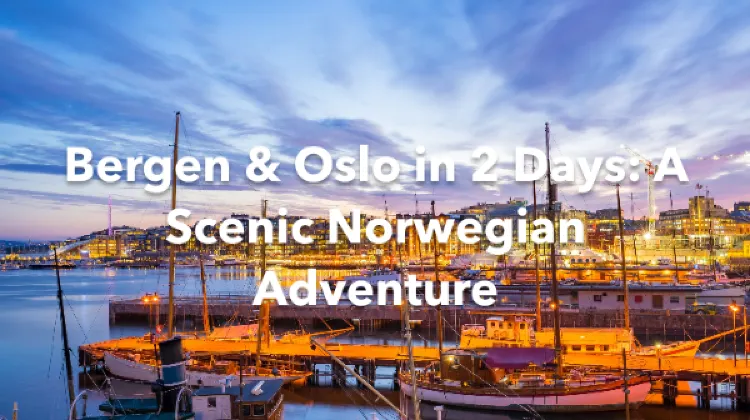
Embark on a captivating 2-day journey through the heart of Norway, exploring the cultural and scenic highlights of Bergen and Oslo. Begin your adventure in Oslo with a visit to the stunning Oslo Opera House, where architecture meets art, and spend an hour immersed in its grandeur. Next, delve into history at the Akershus Fortress, a majestic castle that promises to transport you back in time during a 3-hour exploration. Continue to the Rådhuset, Oslo's impressive town hall, for an hour of architectural admiration. Conclude your first day amidst the enchanting sculptures of The Vigeland Park, a city park that doubles as an open-air gallery. On day two, ascend to the heights of Ulriken in Bergen for an exhilarating air tour, offering panoramic views that will take your breath away. Follow this with a funicular ride up Mount Floyen, where the cityscape meets the sky. Delve into the wonders of nature at the Bergen University Museum - Natural History for an enlightening hour. Stroll through the vibrant Fishmarket in Bergen, a sensory feast, before wandering the historic alleyways of Bryggen, a UNESCO World Heritage site. Cap off your Norwegian escapade with a visit to Fløibanen, a resort that promises a perfect end to your 2-day itinerary. With each attraction offering a unique experience, your travel story is sure to be rich with culture, history, and natural beauty.
- Day 1: Exploring Oslo's Architectural Marvels and Historical Gems
Oslo Opera House

Begin your Oslo adventure at the iconic Oslo Opera House, a masterpiece of contemporary architecture that seems to rise from the waters of the Oslofjord. With about an hour to immerse yourself in its striking design, you'll have ample time to admire the building's sleek lines and the panoramic views from its accessible roof. The Opera House is not just a feast for the eyes; it's a cultural hub where the harmonies of opera and ballet resonate.
Attraction Info
- Kirsten Flagstads Plass 1, 0150 Oslo, Norway
- Suggested tour duration: 1-2 hour
Recommended Nearby Restaurants

Akershus Fortress
Next, step back in time with a visit to the formidable Akershus Fortress, a sentinel of Oslo's past. Allotting three hours here allows you to explore the castle's grounds and delve into its history as a medieval castle, royal residence, and military bastion. Wander through the fortress's corridors and battlements, and feel the weight of centuries in its stone walls.
- 0150 Oslo, Norway
- Suggested tour duration: 3-4 hour
- Open from 10/1-4/30,6:00am-9:00pm,From October 1st to April 30th, the main entrance opening hours are: 06:00-21:00, and the side entrance opening hours are 07:00-18:00.
Continue your cultural journey at Rådhuset, Oslo's Town Hall, where the Nobel Peace Prize ceremony is held annually. With an hour to explore, you can appreciate the building's unique architecture and the intricate artworks that adorn its interiors, all while soaking in the civic spirit of Oslo.
- Rådhusplassen 1, 0037 Oslo, Norway
- Suggested tour duration: 1 hour
- Open from 9:00am-4:00pm,Rest days in 2024 May 4th, 5th, 11th, 12th, 17th, 18th, 19th, 25th and 26th June 6,June 21 October 1
The Vigeland Park
Conclude your day with a tranquil stroll through The Vigeland Park, Oslo's largest city park, known for its vast collection of sculptures by Gustav Vigeland. Spend an hour meandering among over 200 sculptures in bronze, granite, and wrought iron, set amidst the park's greenery. This open-air gallery offers a serene retreat and a chance to ponder the human condition as depicted by Vigeland's expressive art.
- Nobels gate 32, 0268 Oslo, Norway
- Open 24 hours

Where to Stay Tonight
A-one homes - frogner, frogner house apartments - odins gate 10.
- Day 2: Soaring Heights and Historic Sights in Bergen
Kickstart your second day with an air tour at Ulriken, the highest of Bergen's seven mountains. Offering a panoramic view of the city, this one-hour adventure will elevate your spirits and provide a unique perspective. Glide above the scenic landscapes and capture the beauty of Bergen from the skies, setting a high bar for the day's experiences.
- Ulriken 1, 5009 Bergen

Mount Floyen and the Funicular
Next, descend from the heavens to Mount Floyen and the Funicular, where a charming ride awaits. In just one hour, you'll ascend the mountain and be treated to stunning views of Bergen below. It's the perfect spot for a scenic photo or a contemplative moment, surrounded by the tranquility of nature.
- 5014 Bergen, Norway
- Open on Mon-Fri,7:30am-11:00pm;Open on Sat-Sun,8:00am-11:00pm

Bergen University Museum - Natural History
Continue your journey of discovery at the Bergen University Museum - Natural History. Spend an hour immersed in the wonders of science, exploring collections that span from the depths of the oceans to the far reaches of the cosmos. It's an educational experience that will leave you with a deeper appreciation for the natural world.
- Muséplassen 3, 5007 Bergen, Norway
- Suggested tour duration: 1-3 hour
- Open on Tue-Sat,10:00am-4:00pm;Open on Sun,11:00am-5:00pm
Fishmarket in Bergen
As the day progresses, dive into the local culture at the Fishmarket in Bergen. With just an hour at this bustling market, you'll get a taste of the local life, sample fresh seafood, and perhaps pick up a few souvenirs. It's a feast for the senses and a chance to mingle with the locals.
- Torget 5, 5014 Bergen, Norway
- Open on Mon-Thu,10:00am-9:00pm;Open on Fri-Sat,10:00am-11:00pm;Open on Sun,12:00pm-9:00pm
No visit to Bergen would be complete without a stroll through the historic Bryggen. Set aside an hour to wander through the old Hanseatic wharf, a UNESCO World Heritage site, where colorful wooden buildings line the waterfront, each telling a story of Bergen's rich maritime history.
- Bryggen, 5003 Bergen, Norway
- Open on Mon-Sat,9:00am-4:00pm
Conclude your Bergen adventure with a relaxing hour at Fløibanen, a resort that promises a serene escape. Whether you're looking to unwind in nature or simply enjoy the picturesque surroundings, Fløibanen offers the perfect end to a day filled with exploration and discovery.
- Vetrlidsallmenningen 23A, 5014 Bergen, Norway
- Open from 1/1-3/22,Mon-Fri,7:30am-11:00pm;Open from 1/1-3/22,Sat-Sun,9:00am-11:00pm;Open from 3/23-9/1,Mon-Fri,7:30am-0:00am;Open from 3/23-9/1,Sat-Sun,8:00am-0:00am,Please see the official website for details of public holiday business hours and ticket sales. The specific business status is subject to the opening conditions on that day.
Bergen Harbour Hotel, WorldHotels Crafted
Det hanseatiske hotel.
* All user reviews in this article have been translated by machine.
* The information above is subject to change at any time. For the latest information, please check the websites of hotels and attractions.

<h3>Trending Searches</h3>
Popular Content
- Venice Rome 4 Days Itinerary
- Christchurch Central 1 Day Itinerary
- Wouri 1 Day Itinerary
- Kanifushi 1 Day Itinerary
- Liverpool 2 Days Itinerary
- Nanning Bama 2 Days Itinerary
- Handan Xingtai 3 Days Itinerary
- Madrid Metropolitan Area of Seville 3 Days Itinerary
- L'Agulhas 1 Day Itinerary
- Jiuquan 4 Days Itinerary
- Central Lombok Regency 1 Day Itinerary
- Beijing Chengde 2 Days Itinerary
- Xi'an Hanzhong 5 Days Itinerary
- Lagos 1 Day Itinerary
- Perth 2 Days Itinerary
- Shenyang 2 Days Itinerary
- Chaozhou 2 Days Itinerary
- Wenchang 5 Days Itinerary
- Athens 2 Days Itinerary
- Customer Support
- Service Guarantee
- More Service Info
- Website Feedback
- About Trip.com
- Terms & Conditions
- Privacy Statement
- About Trip.com Group
Other Services
- Investor Relations
- Affiliate Program
- List My Property
- Become a Supplier
- Weird But True
- Sex & Relationships
- Viral Trends
- Human Interest
- Fashion & Beauty
- Food & Drink
trending now in Lifestyle

Bride calls out wedding guest's 'ridiculous' RSVP: 'Nothing I can...

I couldn't afford my dream home — so I spent $19,000 turning my...

Billionaire's wife stinks of entitlement as messages show her...

'Ozempic butt' leaves ladies feeling 'deflated' ahead of beach...

These are the hilarious finalists of the Comedy Pet Photo Awards...

Inside Costa Rica's 'cave of death' which kills all that enters

Dear Abby: My husband wants me to 'forget' his 20-year-long affair

I'm 65 and sexier than ever— people mistake me and my...
Stockholm and oslo are the new paris and rome as extreme summer temps drive surge of interest in europe’s chilly north.
- View Author Archive
- Follow on Twitter
- Get author RSS feed
Thanks for contacting us. We've received your submission.

All the cool people will be going there this summer.
Scandinavia and other chillier parts of Europe are experiencing a dramatic increase in June to August travel — and it’s all driven by a desire to escape sizzling temperatures that have become the norm in popular destinations like Paris and Rome, experts say.
During the warm weather months, bookings for trips to Norway — particularly in places like cool, coastal Bergen — have risen 37% over last year, according to luxury operator Kensington Tours.

The luxury tour company also named Innsbruck, Austria — nearly 2,000 feet above sea level in the Austrian Alps — as another not-so-hot summer commodity, the Wall Street Journal reported .
Travel booking company Hopper reported that trips to Sweden have gone up 70% , while Finland went off the charts with a 126% boost. There has also been increased interest in the Faroe Islands — a scenic archipelago off the coast of Denmark that has raised its profile in recent years.
“As Europe braces for the impact of increasingly common extreme weather events , we anticipate travel patterns and destination choice shifts over the long term,” said Eduardo Santander, executive director of the European Travel Commission said.
World traveler Mary Miles, a 33-year-old in public relations from Baltimore, will enjoy a trip to Scandinavia with her husband later this year, touring Sweden, Denmark, and Norway for two weeks.
Cooler weather was an easy signing bonus for Miles’ other half.

“He’s very, very sensitive to heat,” she told the outlet. “He gets nervous that he’s going to pass out.”
Experts add that the rationale for spending time at these comparatively obscure locations instead of literal tourist hotspots further to the south is not only because they offer a milder climate — travelers will also enjoy fewer fellow foreign vacationers.
The trend toward northern destinations extends beyond Europe.
Domestically, interest in travel to Alaska has risen 25%, according to Kayak.
The northernmost state has become a hub for cruises, according to Jillian Simpson of the Alaska Travel Industry Association.
“Statewide, the state did see a record number of cruise passengers arriving, which was very good,” she told Alaska Public Media earlier this year.
Seward, a major cruise port, is expecting at least 200,000 visitors via cruises in 2024.
Share this article:

Advertisement
This is the announcement bar for Poornima to test the Close Button. It will expire May 31 2024.
- Pre-Cruise FAQ
- Onboard FAQ
- Post-Cruise FAQ
- Cruisetours FAQ
- Special Offers Sign Up
- Cruise Deals
You have been logged out
Your window will update in 5 secs
Princess Cruises to Sail Largest-Ever Europe Cruise and Cruisetour Season in 2026
New sun princess one of five to sail region. season also features total solar eclipse cruise - return to copenhagen – plus new roundtrip rome itineraries..
By downloading this image you agree to the Princess asset use terms and conditions
FT. LAUDERDALE, Fla. (May 9, 2024) – Princess Cruises is going big in Europe for 2026. The “Love Boat” line today announced that its 2026 European cruise and cruisetour season will be its biggest ever, with five Princess cruise ships sailing the region, including the sensational new Sun Princess. Set to sail on a record-breaking 222 cruises, guests will have unparalleled opportunities to explore the beauty and diversity of Europe.
Running March through November 2026, the European season features 59 unique itineraries, visiting 101 destinations across 29 countries, ranging from five to 42 nights. Highlights of the upcoming season include an opportunity to experience the 2026 total solar eclipse; sail on the newest Princess ship – Sun Princess; the return of roundtrip cruises from Copenhagen and new itineraries from Rome. The robust season goes on sale May 23, 2024.
“There’s incredible demand for European vacations and we don’t see that slowing down anytime soon,” said Terry Thornton, chief commercial officer for Princess Cruises. “Guests should book early as our best pricing will be when these cruises first go on sale. Our 2026 season delivers the best of Europe with incredible voyages visiting a mix of marquee ports, as well as smaller, off-the-beaten-path spots offering guests their very own personalized journey.”
2026 Europe Highlights
Sun Princess , the next-level Love Boat from Princess, will sail 7-, 14- and 21-night Mediterranean voyages departing from Civitavecchia (Rome), Piraeus (Athens), and Barcelona. Guests on a 14- and 21-night voyage can enjoy an itinerary without calling to the same port twice for a Grand Mediterranean Adventure .
- Itinerary Sample: A seven-night Mediterranean voyage sails roundtrip from Piraeus (Athens) to Barcelona, calling at Santorini, Kotor, Corfu, and Messina (Sicily).
The newest Princess ship is a true engineering marvel, offering an extraordinary cruise experience with not-to-be-missed culinary, entertainment and luxury accommodations. Sun Princess debuts new eye-catching experience venues including The Dome, a groundbreaking geodesic, glass-enclosed structure at the top of the ship inspired by the terraces of Santorini. The outward and suspended Sphere Atrium, the namesake of this new class of ship, takes the central Piazza hub of the ship into a new dimension. With 30 inviting restaurant and bar venues with an unprecedented collection of celebrity collaborators, high-end ingredients and culinary experiences, Sun Princess has something for every guest to love.
The 3,660-guest Sky Princess will return for its sixth year to home port in Southampton. Sky Princess takes guests on itineraries ranging from seven to 28 nights to destinations including Northern Europe, the Canary Islands, and the Mediterranean.
On August 12, 2026, Sky Princess will sail directly into the “path of totality” on a special 14-night Total Solar Eclipse Cruise which also visits France, Spain and Portugal. The cruise departs Southampton August 8, 2026.
NEW for 2026 is a 28-night Northern Europe and Mediterranean itinerary sailing roundtrip Southampton and calling to Skagen, Copenhagen, Warnemunde (for Berlin), Stockholm (overnight), Helsinki, Tallinn, Visby, Zeebrugge (for Brussels/Bruges), Southampton, Vigo, Cadiz (for Seville), Malaga, Cartagena, Gibraltar, Lisbon, Bilbao, Le Verdon (for Bordeaux). Departs September 12, 2026.
NEW for 2026, the 3,660-guest Enchanted Princess offers Mediterranean itineraries roundtrip from Civitavecchia (Rome), ranging from five, seven, eight, and 14-nights.
- Itinerary Sample: A seven-night Mediterranean & Adriatic sailing roundtrip Rome (Civitavecchia) to Dubrovnik, Kotor and Corfu.
For the first time-ever, the 3,560-guest Majestic Princess is sailing roundtrip from Southampton , offering British Isles and Northern Europe itineraries ranging from 11, 12 and 14 nights. British Isles voyages take guests to historic ports across England, Wales, Ireland, Northern Ireland and Scotland, while the Northern Europe itineraries include stops in Scandinavia, Iceland, the Netherlands, Germany, and Belgium.
- Itinerary Sample: A 14-night Northern Europe cruise visits Haugesund (Norway), Skjolden/Sognefjord (Norway), Olden/Nordfjord (Norway), Aalesund (Norway), Reykjavik (Iceland), Isafjordur (Iceland), Akureyri (Iceland).
Princess Cruises returns to Copenhagen after six years with the 2,670-guest Sapphire Princess , providing 12-night Northern Europe itineraries.
- Itinerary Sample: Visits to Skagen, Oslo, Gdynia, Klaipeda, Riga, Tallinn, Helsinki, Nynashamn (for Stockholm), and Visby.
Prior to sailing from Copenhagen, Sapphire Princess sails in the Mediterranean for two months between March and April 2026, from Barcelona, plus itineraries sailing roundtrip from Civitavecchia (Rome).
Cruisetours: Guests can combine a Europe cruise with multiple days on land to experience more of the region with five cruisetours to choose from. Guests can choose to sightsee in the cosmopolitan city of Madrid on the Highlights of Spain cruisetour, visit Florence and Rome on the Classic Italy cruisetour, explore Mediterranean treasures on the Best of Greece cruisetour or take in the spectacular landscapes of Ireland on the Ring of Kerry cruisetour.
Grand Adventures and Passages: All five ships sail ultimate transatlantic crossings, offering voyages ranging between 14- and 29-nights.
More Ashore: 19 ports include ‘More Ashore’ late-night stays on select itineraries, and three ports provide overnight stays – Alta, Hamburg and Stockholm.
With Princess Plus and Premier inclusive packages guests enjoy the ultimate in savings by adding popular amenities like WiFi, beverages, fitness classes, crew gratuities and more at an even greater savings of up 65% when amenities are purchased separately.
Princess Captain’s Circle members can take advantage of an early booking window starting May 16, 2024, and are eligible for a special discount if booking before August 31, 2024.
Additional information about Princess Cruises is available through a professional travel advisor, by calling 1-800-Princess (1-800-774-6237) or by visiting www.princess.com .
Media Contacts
Contact information for members of the media
Negin Kamali, +1 661-753-1539, [email protected]
Briana Latter, +1 661-753-1538, [email protected]
About Princess Cruises
Princess Cruises is The Love Boat, the world’s most iconic cruise brand that delivers dream vacations to millions of guests every year in the most sought-after destinations on the largest ships that offer elite service personalization and simplicity customary of small, yacht-class ships. Well-appointed staterooms, world class dining, grand performances, award-winning casinos and entertainment, luxurious spas, imaginative experiences and boundless activities blend with exclusive Princess MedallionClass service to create meaningful connections and unforgettable moments in the most incredible settings in the world - the Caribbean, Alaska, Panama Canal, Mexican Riviera, Europe, South America, Australia/New Zealand, the South Pacific, Hawaii, Asia, Canada/New England, Antarctica, and World Cruises. The company is part of Carnival Corporation & plc (NYSE/LSE:CCL; NYSE:CUK).
Additional media information is available at princess.com/news
Not a member of the media?
Contact us at: 1-800-PRINCESS (1-800-774-6237) or 1-661-753-0000
More contact information is available on our Contact Us page

COMMENTS
Official travel guide for Oslo with updated info on hotels and accommodation, map, tourist information, congress, attractions, activities and concerts. ... Norway's Resistance Museum. Museum at Akershus Fortress that documents Norway's domestic World War II history from the years 1940-1945. The exhibitions have...
The complete guide to Oslo. Go for a stroll in lively neighbourhoods and explore everything from innovative architecture and world-class museums to hip bars and heavenly eateries. Explore the city.
Option #1 - Bygdøy Loop. Not far from Oslo Sentrum, there is a number of pleasant walks that you can take in Bygdøy, a peninsula in the western part of Oslo. The easiest way to reach Bygdøy from Oslo Sentrum is via the 30 bus; with frequent departures from Nationaltheatret, the journey takes around 15 minutes.
Get to know the city on a sightseeing tour or with a guide. You can hop on a sightseeing bus or boat or take part in museum tours. With the Oslo Pass, you get a discount on sightseeing as well as free admission to more than 30 museums and attractions. Get more inspiration on Oslo's official website. visitoslo.com.
Oslo and beyond. Beyond Oslo. Sofienberg, Grønland & Tøyen. Aker Brygge & Bygdøy. Opera House & Bjørvika. Explore Oslo holidays and discover the best time and places to visit.
City Hall Oslo's artsy 20th-century government building, lined with vibrant municipal-themed murals, best visited with included tour. National Museum Norway's grandest and newest museum — with the country's cultural and natural essence, captured on canvas. Frogner Park and Vigeland Museum Sprawling park with works by Norway's greatest sculptor, Gustav Vigeland, and the studio where he ...
Don't forget your Oslo Pass This timed card, which costs 210 to 745 kroner ($25 to $89) per person, covers travel on all public transit (excluding airport routes), admission to 30 attractions and ...
Oslo Travel Guide. The picturesque, cosmopolitan city of Oslo is the capital of Norway. Located in the southeast corner of the country, this coastal city is bursting with greenery and outdoor activities, cool museums, lots of art, amazing seafood, and more. Oslo makes for an excellent base to explore southern Norway as well as a fun weekend ...
Experience a fjord-side sauna. Finnish sauna culture has been adopted by Oslo over the last 10 years or so and has become a popular thing to do on the harborside. Dress in swimwear and take a seat on a bench in a paneled room that's heated to 80-95°C (176-200°F) by a wood-burning stove. A towel is recommended to stop an uncomfortable burn ...
Norway's climate is mild but unpredictable. It experiences snow along the coast, with chillier weather in its inland regions. In summer, temperatures rise to an easy 18 degrees Celsius. If you're visiting for the region's natural heritage, Oslo's landscape breaks into sparkling colour between May and June.
26 Cheap Beach Vacations for Travelers on a Budget. Ranking of the top 18 things to do in Oslo. Travelers favorites include #1 Oslo Fjord, #2 Vigeland Park (Vigelandsparken) and more.
Spring (April - Mid-June) As the snow begins to melt and the days get longer, Oslo comes alive. The city is filled with blooming flowers, and the trees are starting to turn a lovely shade of green. Spring is the perfect time to visit if you're looking for a more relaxed atmosphere.
I still prefer a place with a kitchen when going to expensive countries like Norway. Oslo travel blog: Some best day tours, trips, activities and transfer services, tickets in, from and to Oslo you can refer to. Oslo Pass; Oslo City and Viking Ship Museum Private Walking Tour; Oslo City Sightseeing Hop-On Hop-Off Bus Pass
This Oslo travel guide shares the best things to do in Oslo.-----Recommended Tours in Oslo:Oslo Hiking - View of the Oslofjord walk: https://www.via...
Things To Do In Oslo ️⬇️ 2024 UPDATED ⬇️UPDATED Top 10 Things To Do ️ https://bit.ly/37vQm5aBest Hotels In Oslo ️ https://bit.ly/3wfvQ0X ️ Looking for ...
Lauren Juliff Published on September 23, 2023. At the top of the Oslo Fjord at the southern tip of Norway, Oslo is Norway's biggest county and capital city. It's not very often one gets urged to visit the city because it is often overshadowed by its stunning fjords and natural settings. Well, I'm here to change that.
The Department of State advises all U.S. citizens to read country-specific Travel Advisories and U.S. Embassy Oslo's COVID-19 information page for update d information. U.S. citizens are not permitted to enter Norway unless the traveler qualifies for a travel exception.
FCDO travel advice for Norway. Includes safety and security, insurance, entry requirements and legal differences.
By train. An extensive rail network links Norway to the rest of Scandinavia and Europe.There are regular train connections to Oslo from Copenhagen, Stockholm and Gothenburg. Most train journeys from the continent are overnight, and you will find sleeping compartments on all of them.A variety of discount passes are available for train travel in Europe and Norway.
Oslo, Norway. Oslo is the capital and most populous city of Norway. It constitutes both a county and a municipality. The municipality of Oslo had a population of in 2022, while the city's greater urban area had a population of 1,064,235 in 2022, and the metropolitan area had an estimated population of in 2021. - Wikipedia. Things to do in Oslo
Read the country information page for additional information on travel to Norway. If you decide to travel to Norway: Enroll in the Smart Traveler Enrollment Program ... U.S. Embassy Oslo . Morgedalsvegen 36 0378 Oslo Norway. Telephone +(47) 2130-8540. Emergency +(47) 2130-8540. Fax +(47) 2256-2751. Email. [email protected]. Website.
Best Times To Visit Oslo. The best time to visit Oslo is from May to August when the temperatures rise and there are surprisingly affordable room rates available, though these options often fill ...
As of February 12, 2022, the travel-restrictions upon entry into Norway were lifted. The same rules as prior to the COVID-19 pandemic apply. There are no requirements for testing, quarantine or registration upon arrival in Norway. Visit the Norwegian government website for further updates regarding testing, isolation and workplace guidance etc.
Norway ; Norway Travel Forum; Search. Browse all 45,485 Norway topics » Please advice on 7.5 day self-driving itinerary from Oslo Watch this Topic. Browse forums; All. ... for Norway, Oslo. Level Contributor . 33,116 posts. 42 reviews. 48 helpful votes. 10. Re: Please advice on 7.5 day self-driving itinerary from Oslo . May 7, 2024, 7:24 PM.
These aspects of Norway's working culture contribute to high productivity while maintaining a good work-life balance. Norway also falls in the top 10 happiest countries in the world. Advertisement
Norway's extensive coastline is a treasure trove of marine wildlife, offering unique opportunities to observe a variety of creatures in their natural habitats. Whales: The cold, nutrient-rich waters of Northern Norway, especially around Tromsø, are renowned for their whale watching tours.
With each attraction offering a unique experience, your travel story is sure to be rich with culture, history, and natural beauty. Shanghai Oslo. From US$344. Cheap Flights. Itinerary at a Glance. Day 1. ... 0037 Oslo, Norway; Suggested tour duration: 1 hour; Open from 9:00am-4:00pm,Rest days in 2024 May 4th, 5th, 11th, 12th, 17th, 18th, 19th ...
Stockholm and Oslo are the new Paris and Rome as extreme summer temps drive surge of interest in Europe's chilly north ... Norway and other more temperate destinations are becoming summer ...
Itinerary Sample: Visits to Skagen, Oslo, Gdynia, Klaipeda, Riga, Tallinn, Helsinki, Nynashamn (for Stockholm), and Visby. Prior to sailing from Copenhagen, Sapphire Princess sails in the Mediterranean for two months between March and April 2026, from Barcelona, plus itineraries sailing roundtrip from Civitavecchia (Rome).